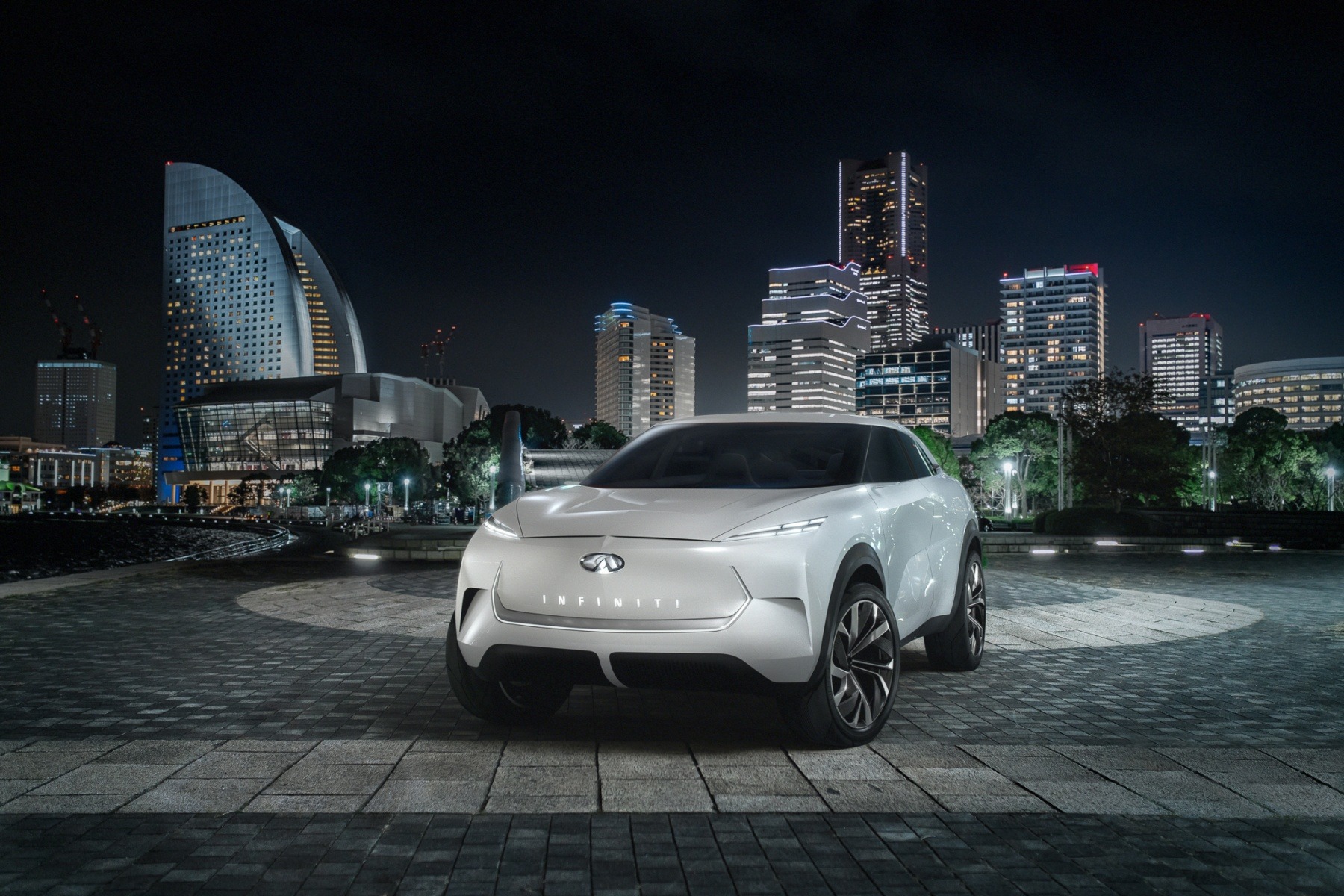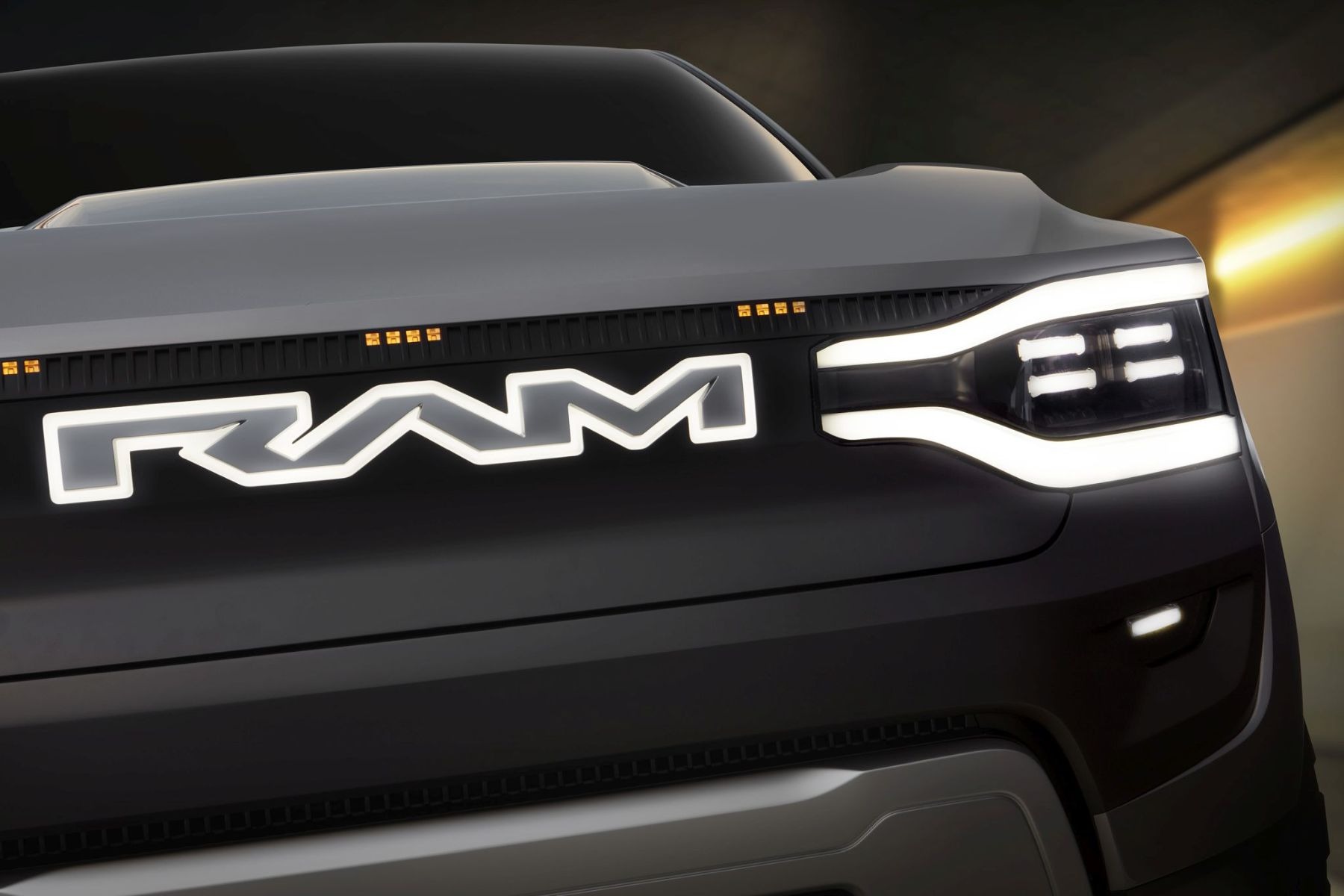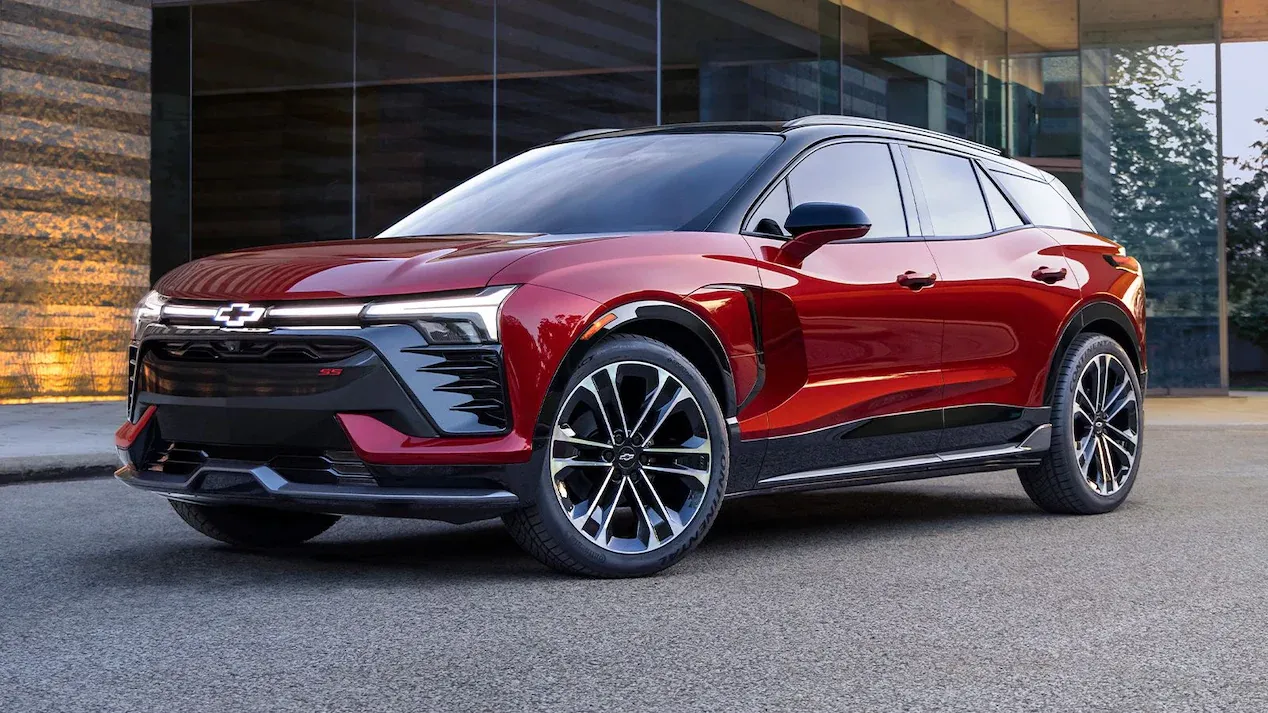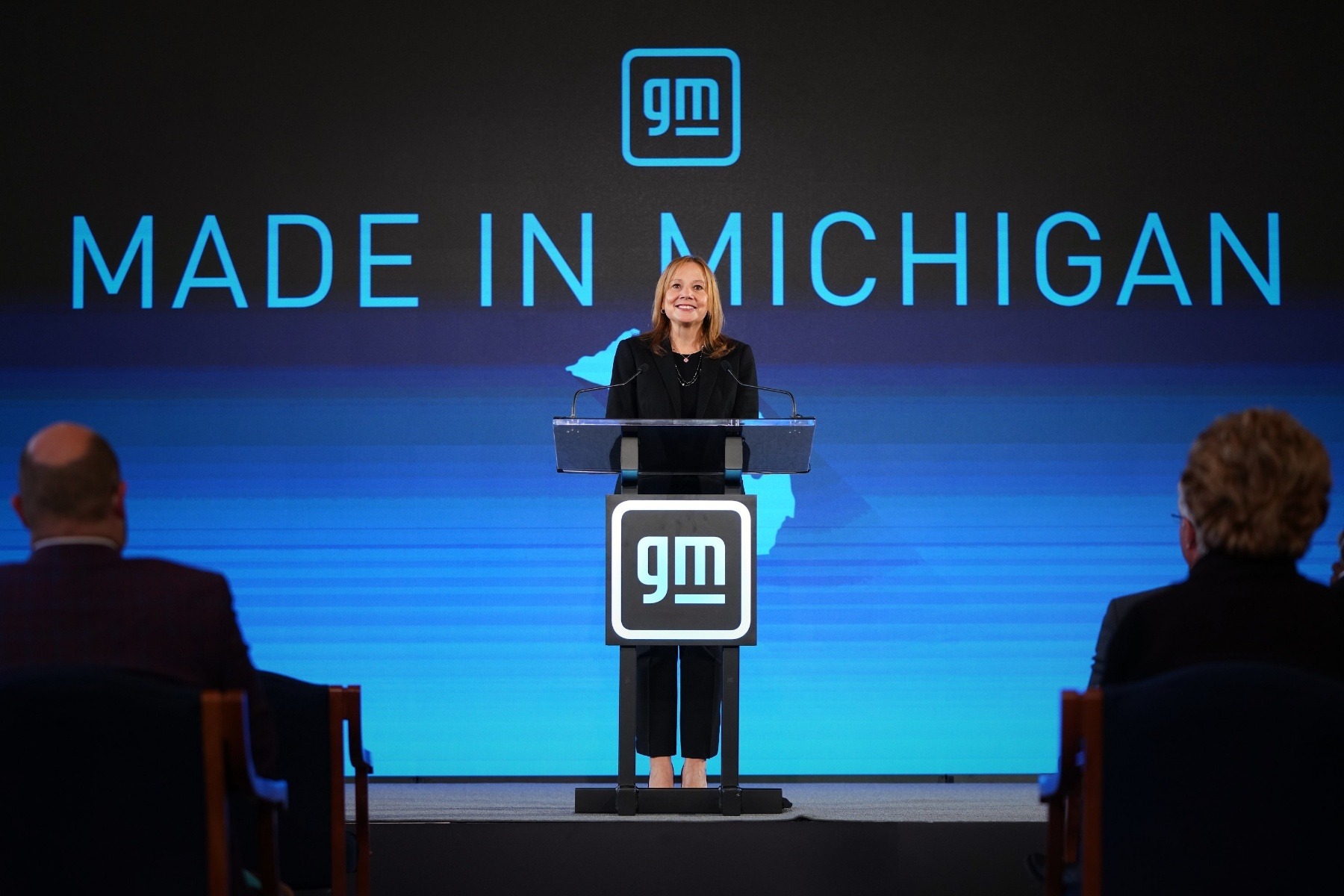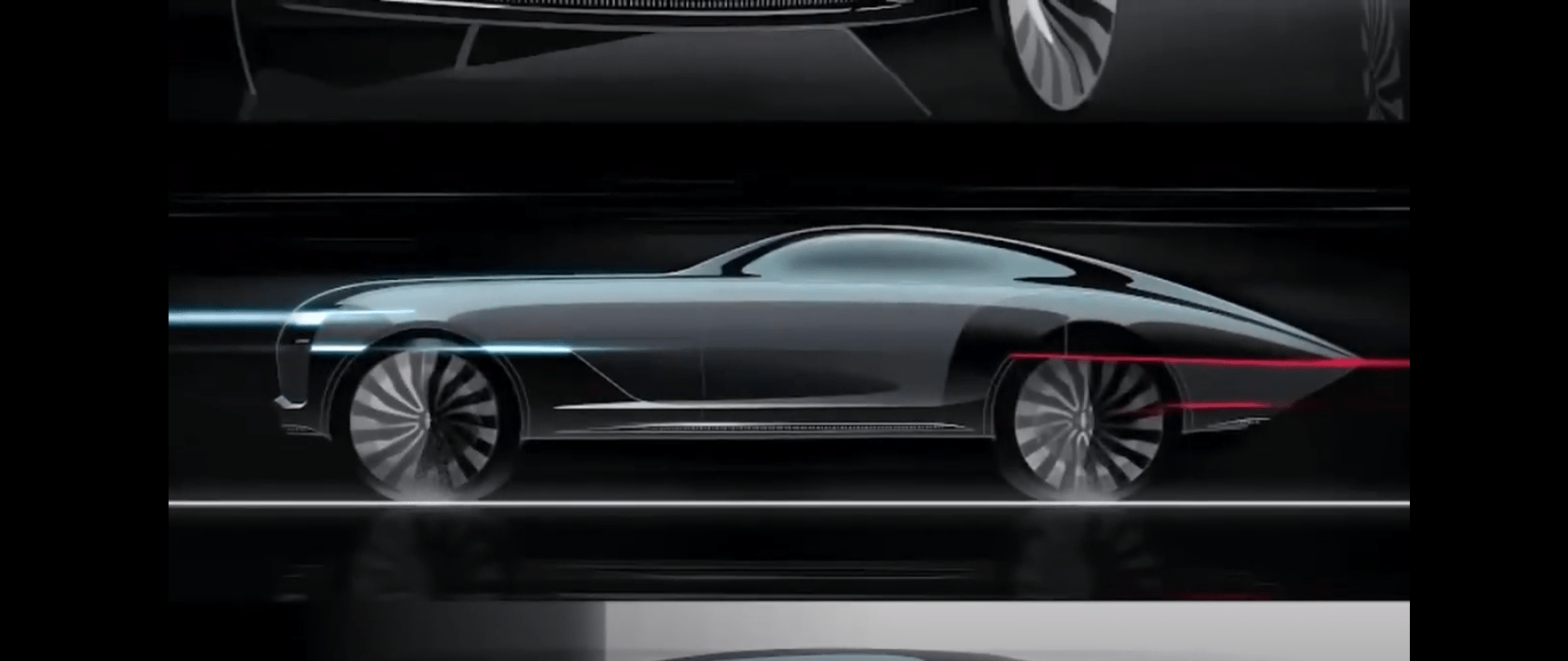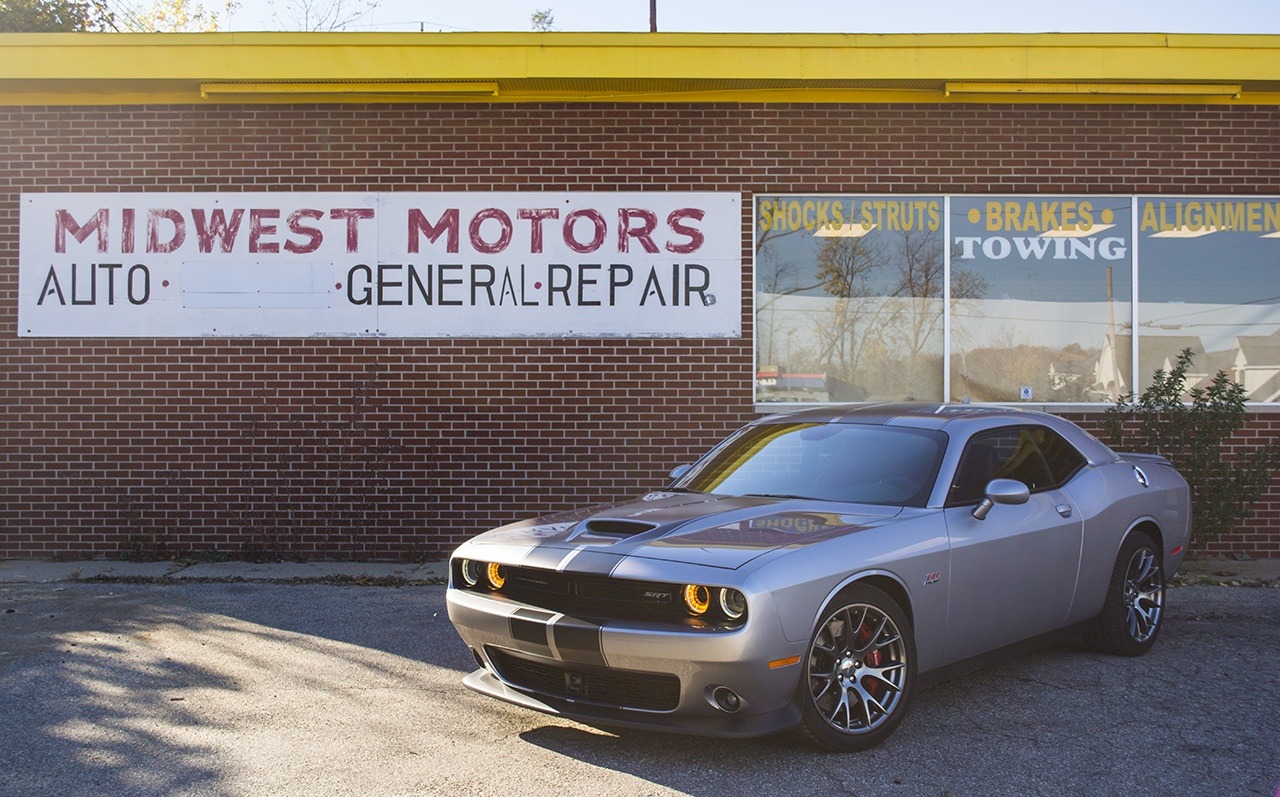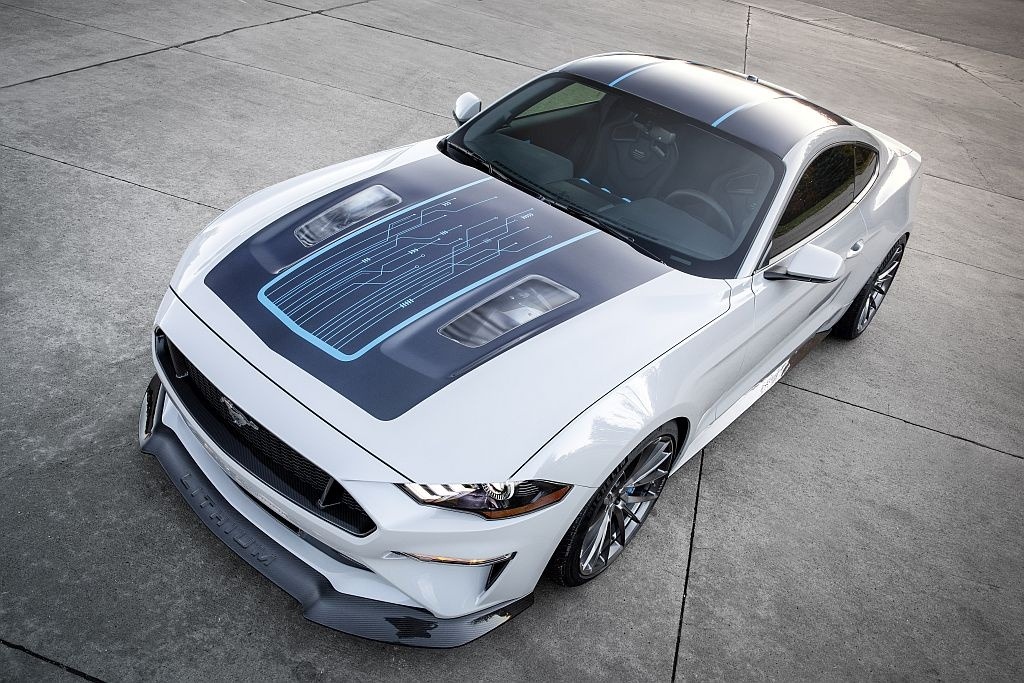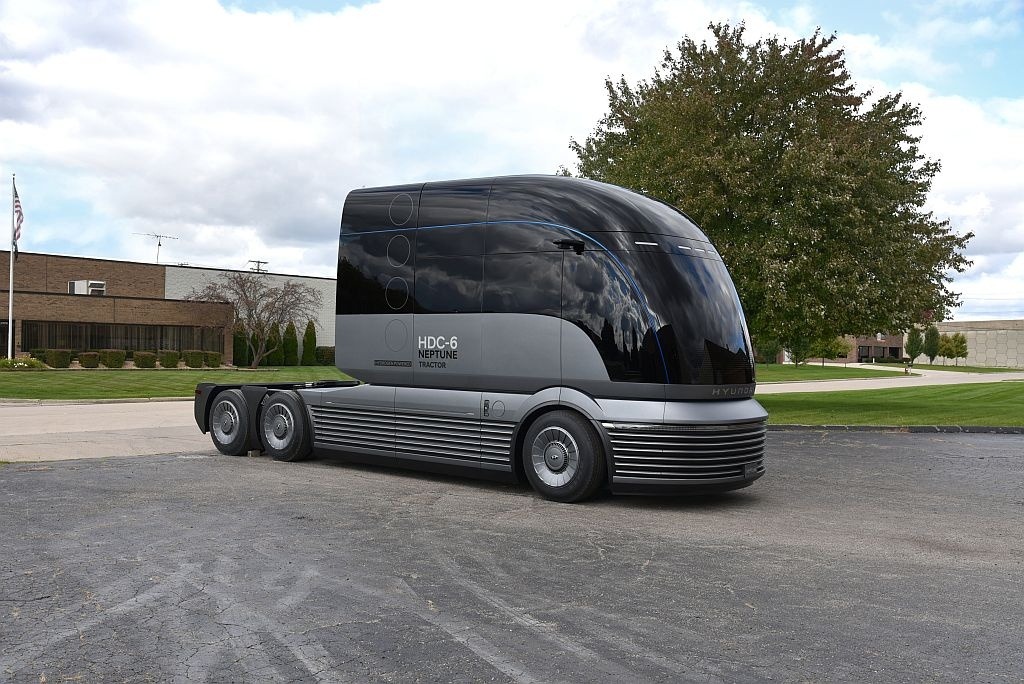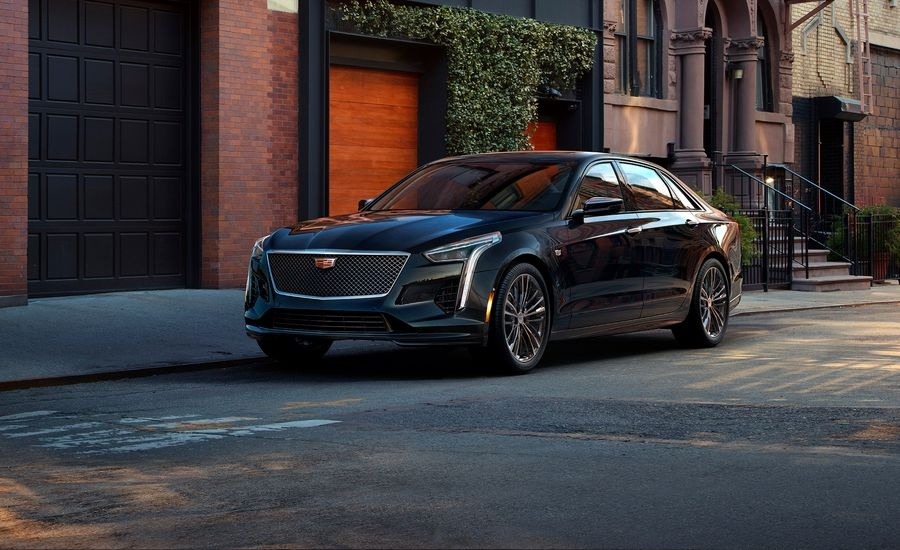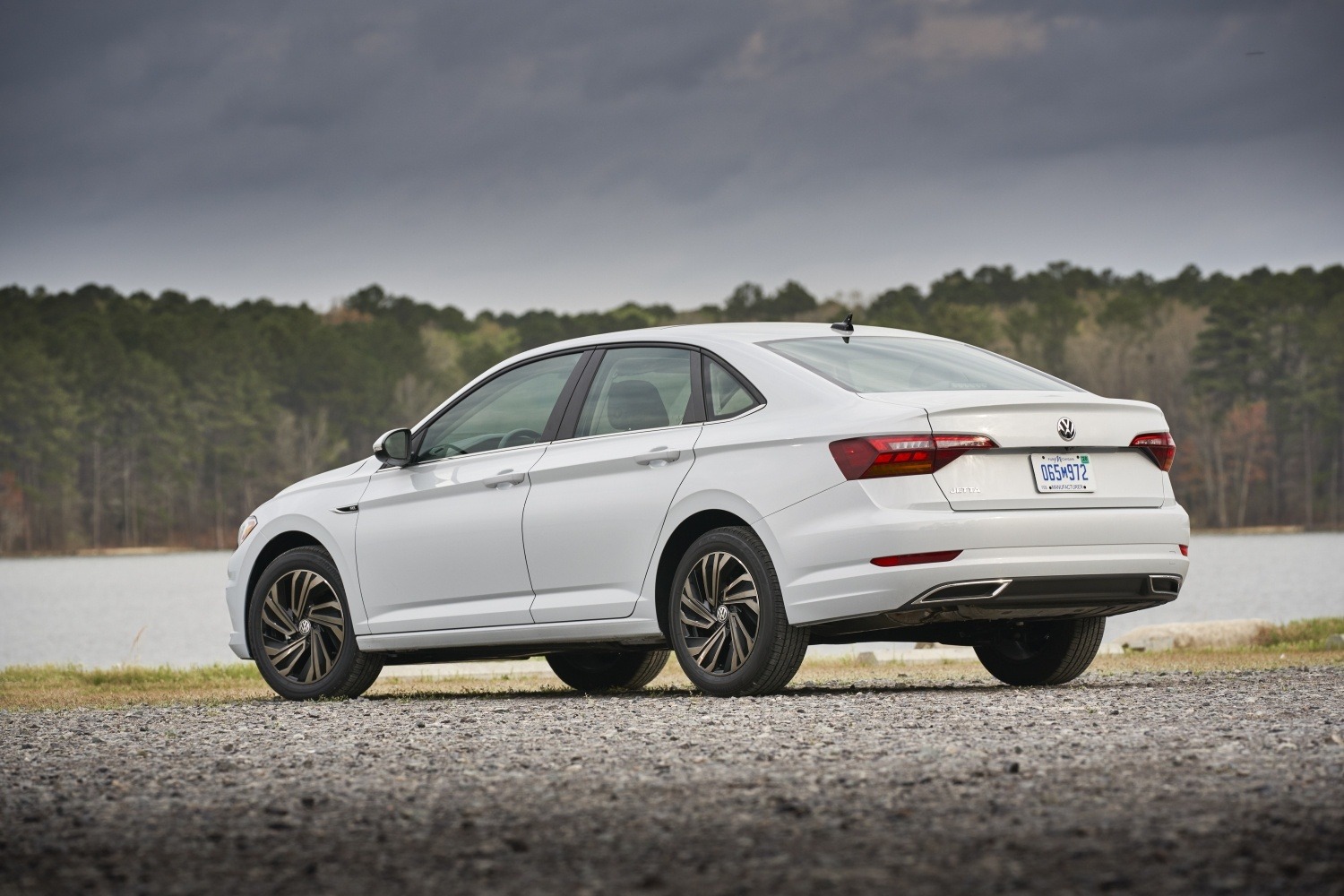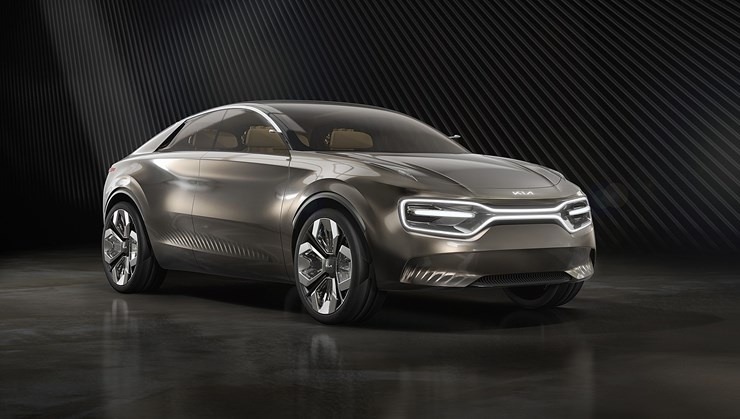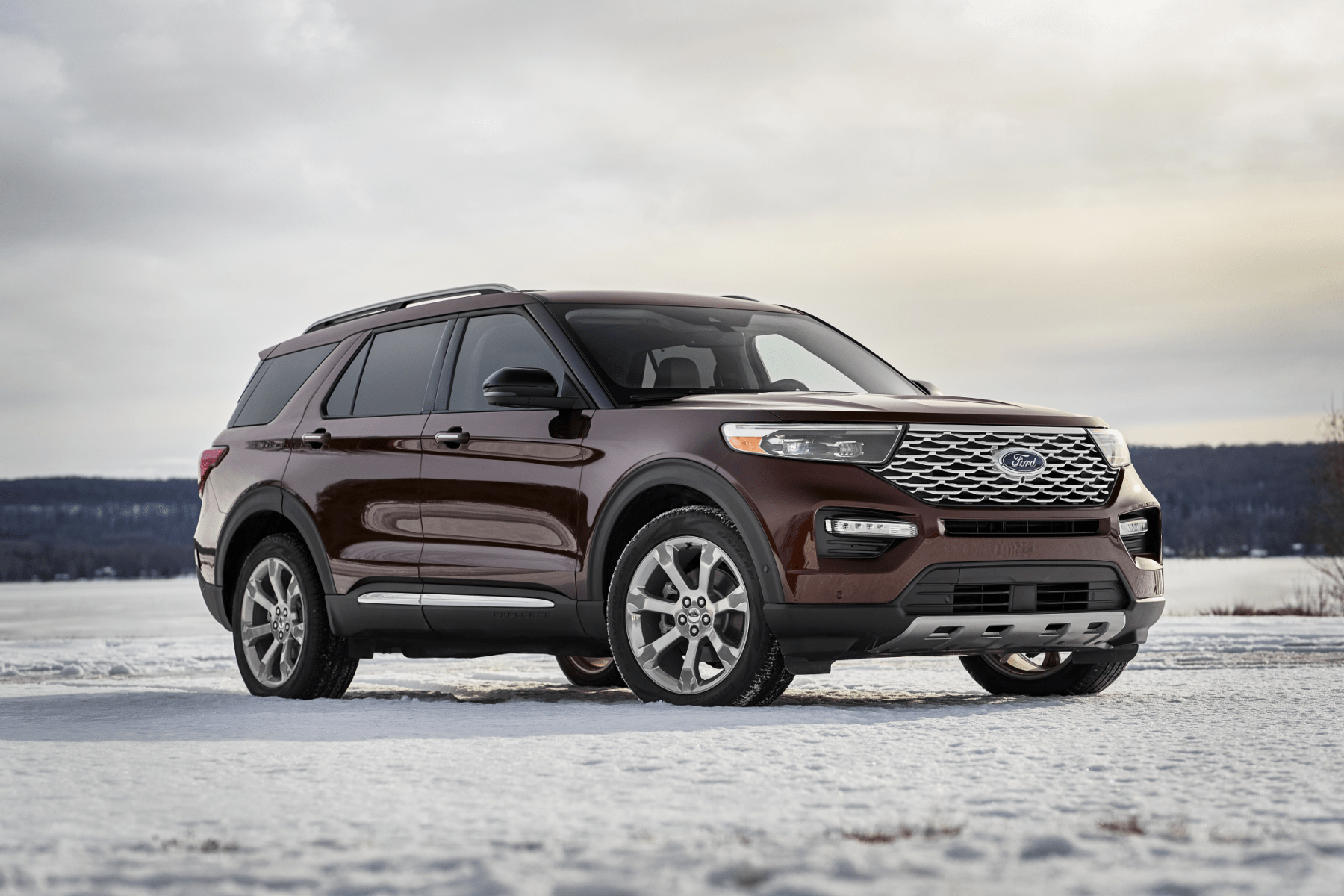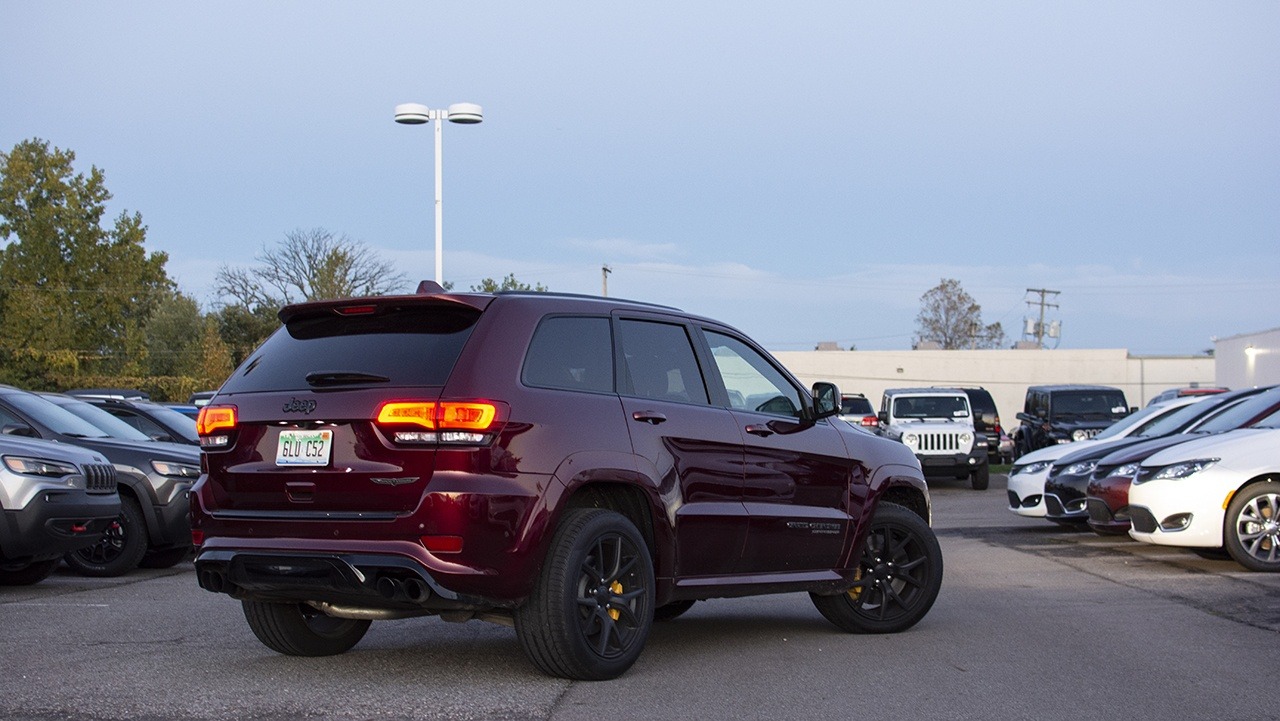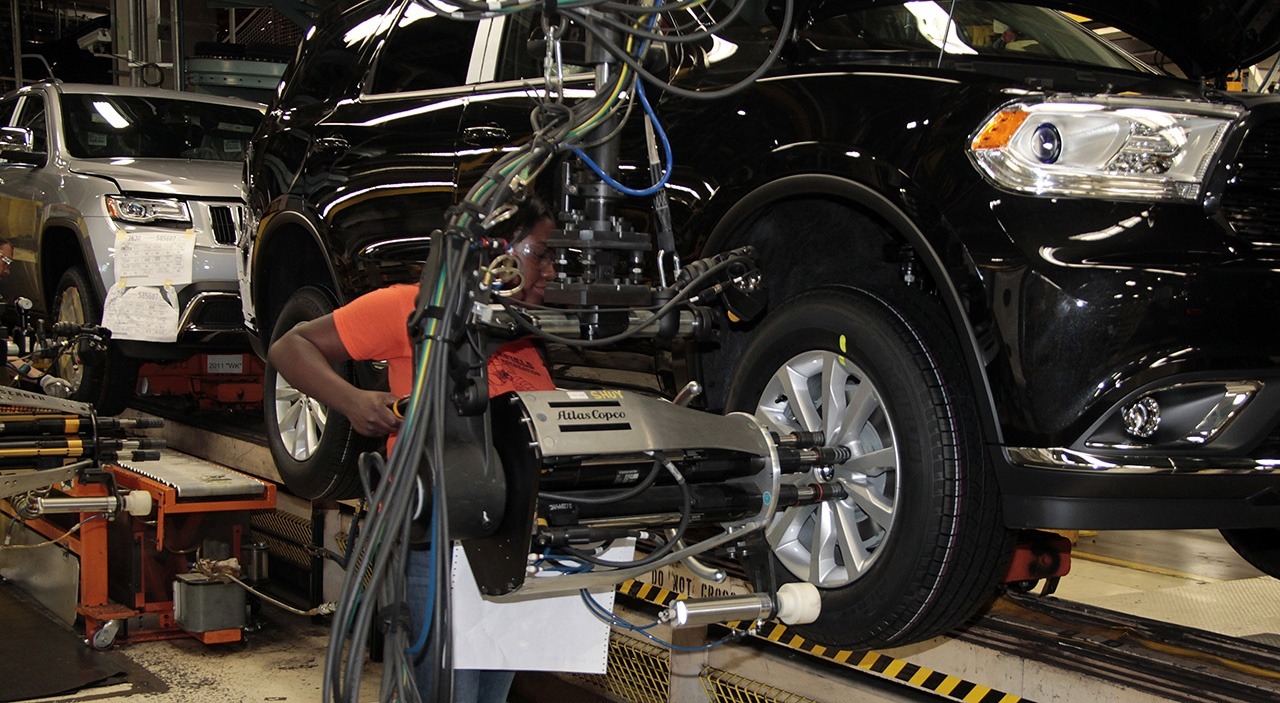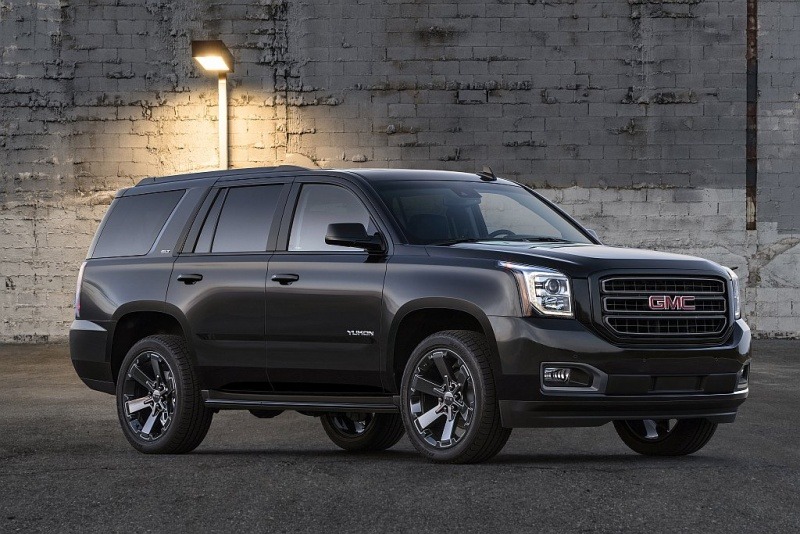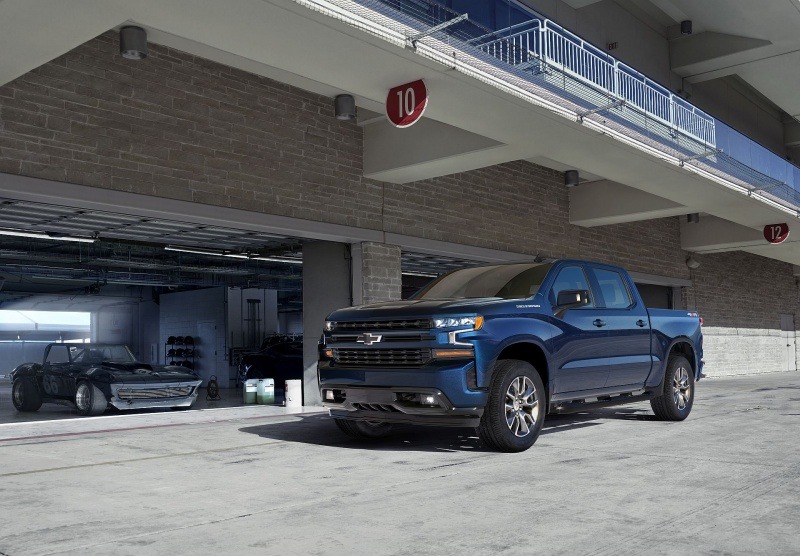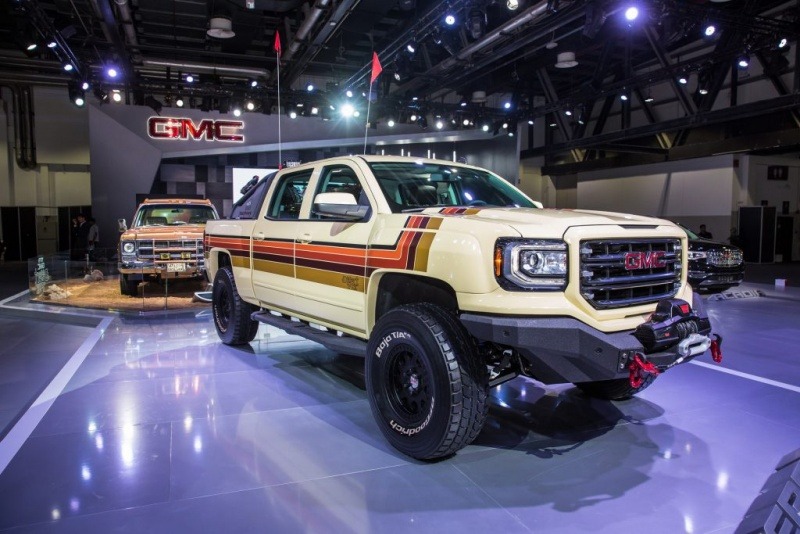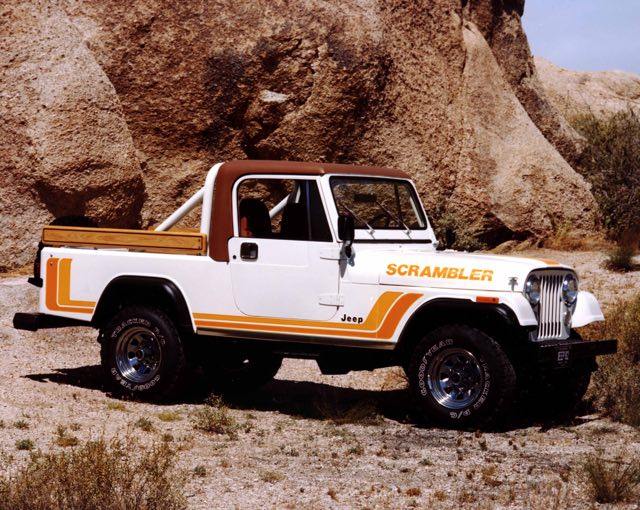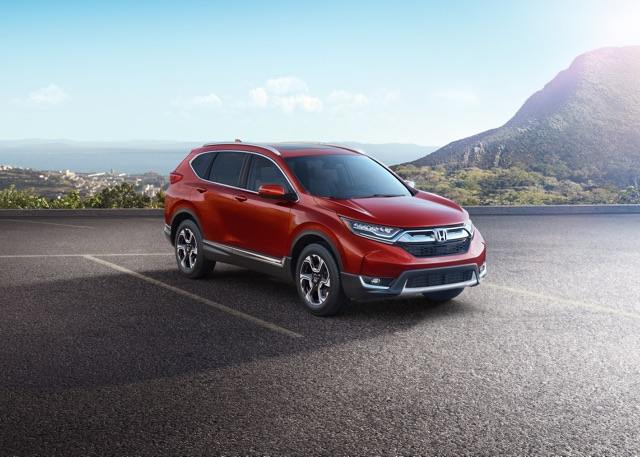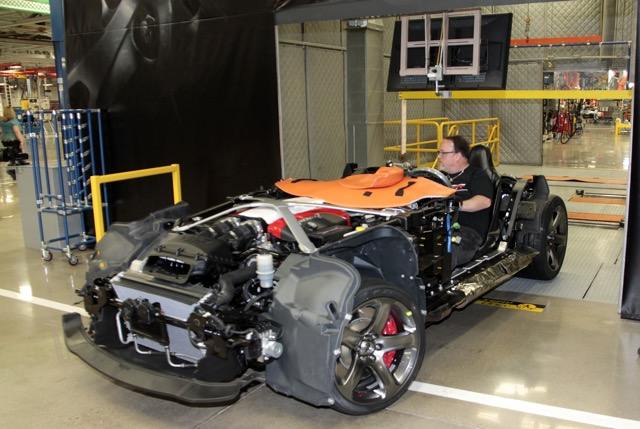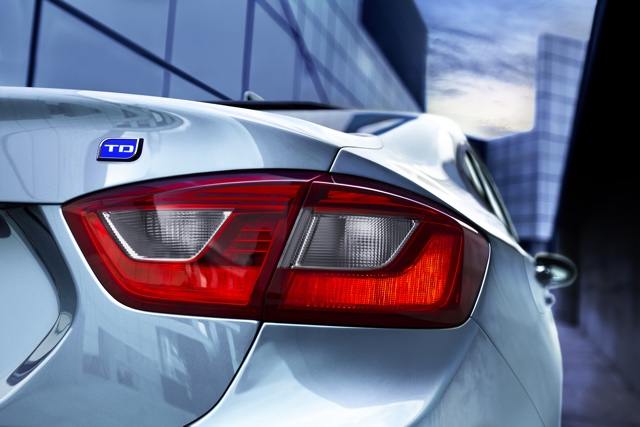Leaderboard
Popular Content
Showing content with the highest reputation since 12/02/2009 in Articles
-
The news came during dinner last Monday. My mother asked if I would be able to take any time off of work, and I said that I might be able to if the circumstances were considered important. She revealed that my grandfather, her dad passed away that afternoon. It wasn’t from COVID-19, but other complications that had put in him the hospital since early June. After dinner, I needed some time and space to begin processing the news. So I grabbed the keys to my car and went for a drive. The past few months have been difficult for all of us in varying degrees with COVID-19. Many places going on lockdown have caused massive disruptions to how we work, travel, and interact with the world. I have been hunkered down at home since mid-March when my employer announced our office would be closed for the time being, and we would be working from home. During the first month or so, I had put a moratorium on driving except for essential places such as the grocery store or pharmacy. Isolating to prevent catching and/or spreading the virus took priority over going for a drive. But after a month of just being in a house with family and doing the same things over and over, I was going stir crazy. I realized that I needed some space to not only prevent myself from losing it, but to give me some room to think about everything floating in my mind. Going for daily walks either by myself or with the dog helped a bit. But I still felt like I needed some more space, more time to myself. Back in 2015, I wrote an Afterthoughts column titled The Escape Machine. I talked about how the car for some of us was a way to escape the world for a time. You could go anywhere depending on how much fuel was in the tank and give the space needed to clear or process whatever was on the mind. I ended the piece with these two lines, That decision for me came in late April/early May. I would go for long drives, provided that I would wear a mask if I got out to go for a walk. Going for the first drive in over a month was a bit of revelation. Turing the steering wheel, pressing down on the accelerator and brake; and watching the world go past in blur made me realize how much I missed this. This seems like a trope, but you have a newfound appreciation for something you haven’t done in some time. This also gave me the space to begin piecing together various thoughts such as how do I keep myself from falling into the endless pit of despair, what can I do to keep myself from feeling bored, and do I dive back into automotive writing. I didn’t know how important this would become in the coming weeks as COVID-19 cases increased, the economy would come to a screeching halt; and the murder of George Floyd and the ensuing fallout. Whenever my mind would become overwhelmed or I just get too frustrated, I would hop into my vehicle and go somewhere. It didn’t matter where or how long, just as long as I had some space to think or to calm down, it would be enough. Back to last Monday night. As I drove, there was a lot I needed to process in terms of grief and wondering what would happen next: Would there be a funeral, what precautions should I take, will it be a long ceremony, and so on. I didn’t come up with any clear answers to these questions, but having that time to start putting things into perspective helped. It was on the way back that another thought popped into my head. At the moment, we’re all trying to find some sense of normal in a world that isn’t. For auto enthusiasts, that is to drive as it gives some sort of control. It may be a small thing, but they provide some much-needed comfort. Like many of us, I don’t what the rest of year holds if it continues to be a landfill fire or somehow begins to contain itself. But I do know that I’ll likely be taking more drives, whether that be my car or one that I’m reviewing. Having something that provides a sense of normal is welcomed.6 points
-
In a series of tweets today, Trump announced that General Motors will be selling their Lordstown plant to electric truck maker Workhorse. Lordstown was shut down in March of this year and formerly built the Chevrolet Cruze. The details of the plant sale have not yet been announced. Workhorse is a Cincinnati based company who builds EV pickups with a built in range extender, similar in concept to the Chevrolet Volt. Workhorse's sole model is the W-15, capable of driving up to 80 miles on a charge before a gasoline powered range extender kicks in. It uses two motors to provide all-wheel drive. The only configuration available is an extended cab with 6.5 foot bed. They can tow up to 5,000 lbs and have a payload of 2,200 lbs. Pricing starts at $54,500 before tax credits. Workhorse intends to start production for the retail market sometime in 2019. Fleet orders have already started. GM is not denying any of the information in the tweets from Trump. Update: General Motors has confirmed that talks are ongoing.4 points
-
During GM's earnings call today, GM announced that a new, highly flexible, EV architecture is on the way and that Cadillac will be at the center of the release. The architecture, called BEV3, is said to be highly flexible, being able to be configured from small sedans to large crossover formats, and front-wheel, rear-wheel, or all-wheel drive configurations. GM is targeting a sweet spot of 300 mile in range according to GM CEO Mary Barra. GM is going to continue its development of autonomous technology. It currently offers SuperCruise automated driving on the flagship CT6 sedan and plans to expand that technology across the Cadillac lineup. Late last year, GM announced that it would be canceling two of its plug-in hybrid vehicles in a slew of cutbacks in the sedan segment.4 points
-
The common thought today is that the sedan market in the U.S. is dying. If that's the case, the 2020 Toyota Corolla hasn't given any reasons that it should stick around. While styling could be considered bolder over the prior model, it is still bland in person. Front and rear facias nearly mirror each other in a Studebaker-like "is it coming or going?" way. The styling of the interior hasn't changed in any significant way though the materials are somewhat improved. Mediocre engine choices, unlike the 2020 Kia Soul, leave little to be excited over. The addition of a hybrid option is interesting, but only for people who think the Prius is too fugly to drive, otherwise, they would just buy the real thing. The Corolla is the best selling car nameplate in history, but this latest version leaves little reason for that record to continue. In a tough small sedan market, it is going to take more than just more of the same to move the needle. Dull, conventional, boring..... that's my opinion of the 2020 Corolla4 points
-
“I can’t believe we’re going to make it” This thought passed through my head as I brought the vehicle to a stop on an off-ramp. Somehow, I was able to travel from my house in the outskirts of Metro Detroit to my hometown of Midland, Michigan on just a quarter-tank of gas. That may not seem like a huge accomplishment except when you look at the vehicle I was driving, the 707 horsepower Jeep Grand Cherokee Trackhawk. Originally, I wasn’t planning on traveling to Midland in the Trackhawk. Earlier in the week, I had driven it down to an event in Ann Arbor to drive a couple of Mitsubishi vehicles. The trip revealed the thirst of the supercharged 6.2L V8 by using up a third of the gas tank. My plan for the rest of the time would be running errands and some small trips to get a feel of the vehicle. Over the weekend, I would get some work done and take photos. But that would be thrown out the window when my brother brought up the idea of heading to the Northwood Auto Show in Midland. The Northwood show takes place on the grounds of Northwood University. It is a unique auto show as the students of the school run all of the aspects of the show ranging from the planning to being the product specialists for each brand. This is part of their automotive and aftermarket degree programs. When I lived in Midland, the show was something I looked forward to every year as I would get the chance to sit in various new vehicles. Also, I would come home with a big bag of brochures that I would be reading throughout the year, letting all of the information seep into my brain. This may explain why I became so crazy about vehicles. It had been a few years since I last attended the show due to various factors such as not knowing when it would be put on. But I was surprised that it would be taking place around the same time I would have the Trackhawk. At first, I was hesitant to go. But then, my brother said the magic words, “I would be willing to pay for gas. I want to go for a ride in the Trackhawk.” Once those words came out of his mouth, I had decided that it would be a good idea to go to Northwood. But something else crept into my head. Would it be possible to travel to the show on a limited amount of gas? I decided to put it to the test. Saturday morning, my brother and I got into the Trackhawk to head towards Midland. Starting up the vehicle, the supercharged V8 thundered to life and the gas gauge rose to just a hair over a quarter of a tank. My plan was to put the vehicle into Eco mode and use the radar cruise control to travel at a steady speed of 75 mph. The instant fuel economy screen would be up in the instrument cluster to let me monitor and make adjustments as needed. I would stop for gas when the distance to empty notification reached 15 miles or under. As I began to pull away from the house, my brother noticed that the vehicle was in Eco mode. “I think its more of a suggestion than an actual mode,” I said when he brought it up. To demonstrate what I meant, I pushed the throttle to almost the floor on an on-ramp. The V8 engine roared into life with the supercharged screeching. Even in Eco, it is quite shocking how fast this brick picks up speed. “I get what you mean by this being a suggestion,” my brother said to me as we merged onto I-75. The trip from my house to Northwood is about 90 miles. The trip computer told me that I would be out of gas in 90 miles. Cue “Challenge Accepted” picture. The first 15 to 20 miles of the trip was a bit nerve-racking. Watching the instant fuel economy fluctuate between 10 to 15 as the vehicle would slow down and accelerate as other vehicles came into its path. I began to worry about my goal of reaching Midland was all for naught. But as we traveled further on I-75, my confidence began to grow. The engine settled down and cruise at just a hair above 2,000 rpms. The fuel gauge was steadily going down, but my average fuel economy was rising. It wasn’t till we passed the small town of Auburn, that car flashed its low fuel light. The vehicle said it had 30 miles till it reached empty. I knew that Midland was only ten or so miles away and decided to push it. The gauge continued to fall as did the distance to empty. I held my breath until we got onto the off-ramp. Just a few hundred feet away was a gas station. We had done it with just 20 miles to spare. According to the car, I had an average of 15.1 mpg for the trip. I know there will be someone who will be saying: “Why did you this? Aren’t you missing the point of this vehicle?!” No, I know the point of the Grand Cherokee Trackhawk is to go stupid fast. Defy the laws of physics. But that is what every review (including mine that will be coming in the near future) goes on about. I wanted to do something a bit different and look at it from a different angle. I think my brother said it best about this whole experience as I got back into the car after getting some gas, “I wasn’t expecting that to happen.”4 points
-
We reported back in April that Cadillac would be releasing a V-Series version of their OPTIQ EV for the coming model year, joining the Cadillac Lyriq-V in the V-series lineup. Today we finally get the details. While the base Cadillac Optiq already makes 300 horsepower, the OPTIQ-V bumps that up to a robust 519 hp and 650 lb-ft of torque when the car is in Velocity Max mode. That is sufficient to sprint to 60 in just 3.5 seconds. Carrying an 85 kWh battery pack, Cadillac's preliminary range estimate comes in at 275 miles. Naturally, that range would decrease with a lot of Velocity Max driving. For charging, the OPTIQ-V is the first GM vehicle to come standard with the NACS charge port. Home charging at 240V is available at 7.7kW, 11.5 kW, and if a 100-amp breaker is available, 19.2 kW. DC Fast-Charging allows the OPTIQ-V to take on power at a rate up to 70 miles in 10 minutes. Accessing Velocity Max is done through the V-Mode button on the steering wheel or in the drive mode app in the center screen. V-Mode allows the driver to customize their experience and pre-select performance settings that are activated by the V-Mode button. Drivers can select from Launch Control for maximum straight line acceleration and Competitive Mode for extra traction management to enhance agility. Handling is managed by Continuous Damping Control (CDC) dampers. Brembo performance brake calipers are standard on the front and available in blue or red with a V-Series logo. When you want the car to take over driving, Super Cruise is standard and available for use on approved roads. All Go, Plenty of Show Cadillac makes sure other drivers know you're in something special with V-Series specific looks. The front fascia is unique to the OPTIQ-V, complete with the signature V-Pattern mesh lower grill, high gloss black front splitter, and body color lower trim. A Carbon Fiber package is available which upgrades the front splitter, rear diffuser, and rear mid-spoiler to carbon fiber. Wheels are 21-inch satin graphite alloy by default or optional 21-inch dark painted sport wheels are available. The roof is painted black standard with a panoramic fixed-glass section while two new limited-edition exterior colors: Magnus Metal Frost and Deep Ocean Tintcoat join the color palette. V-Series badging is placed prominently around the exterior. The Inside Counts Too Optiq-V offers two interior color schemes: Noir with Santorini Blue accents or Noir and Sky Cool Gray with Santorini Blue accents. An additional darker accent fabric is woven from yarn made from 100-percent recycled materials. Standard genuine carbon fiber trim decorates the center console. The standard audio system is a 19-speaker AKG Studio unit with Dolby Atmos paired with a 33-inch diagonal LED display. Starting price for the OPTIQ-V rings up at $68,795, including destination charges and before taxes and fees.3 points
-
Ford is upgrading the Mustang Mach-E for 2024 with a longer range and faster charging. The entire lineup gets an upgraded rear motor that boosts range to 320 EPA-rated miles with the extended range battery and rear wheel drive. While that number is up 20 miles from the 300-mile range of the 2021 Mach-E extended range, Ford had already made a change to the batteries in 2023 that earned RWD extended-range models a 310-mile rating. Standard-range rear-wheel drive models also see a 20-mile improvement over the original 2021 Mach-E. All-wheel drive models see a boost in range of 10 miles. The new rear motor, developed by Ford, drops weight and improves torque. The performance improvements allow the Mustang Mach-E GT Performance to bolt to 60 in just 3.3 seconds with a quarter-mile time of 11.8 seconds at 114 mph. Ford claims this makes that trim of the Mach-E faster than a Tesla Model-T Performance and a Porsche Macan 4 Electric. Speaking of the GT, the GT Performance trim is no longer a stand-alone model. In prior years, Ford offered the Mach-E in a standard GT and a GT Performance trim. Instead, the Performance Upgrade package is a software update that can be purchased with the car or purchased and enabled seamlessly later. Previously, the GT Performance trim only boosted torque by 34 lb-ft, but this new Performance Upgrade package boosts torque by a full 100 lb-ft. Previously, features only available on the GT Performance are now included in the GT trim and include Ford Performance front seats, MagneRide Damping system, and Brembo front brake calipers. The Performance Upgrade software back costs $995. Other improvements across the lineup are a simplified Infotainment system screen with new icons to make it easier to get to important information and a reconfigured settings screen because Ford said "users don't like to scroll". Wireless Android Auto and Wireless Apple CarPlay are still standard. Ford also improved the Fast charging speed on a DC charger. With the new updates, a standard range Mach-E will charge from 10% to 80% 5.7 minutes faster (32.2 minutes total) than the original, while an extended range battery improves charge speed by 8.8 minutes (36.2 minutes total). Ford recently joined the Tesla Supercharging network, which added 15,000 new chargers to the Ford BlueOval network. Charging with the Tesla network is as simple as plugging in, with billing handled directly through BlueOval. For now, the Mach-E comes equipped with a CCS charge port, so owners of the Mach-E will need a free adapter from Ford to use Tesla charging stations. Ford had recently dropped the price of the 2023 Ford Mustang Mach-E to just $39,895, but the 2024 model creeps up slightly to $39,995 for the Select RWD standard range. The RWD Premium starts at $43,495, and the GT starts at $53,995. The new Mustang Mach-E Rally goes on sale for $59,995. All models add a $1,895 delivery charge.3 points
-
The hottest and most competitive segment in the auto industry is the compact crossover, with every mainstream brand fielding at least one or more entries. Fresh off updating the Trax, Trailblazer, Blazer, and Traverse in the last two years, Chevy is circling back to update its bread-and-butter Equinox. Equinox's current platform came out in 2018 with a mild nip-tuck in 2022. For 2025, the Equinox gets a major redesign, inside and out, on the same platform. The headliner for this release is the new ACTIV trim. Representing a ruggedized version of the Equinox, the ACTIV has a unique front fascia, blacked-out badging, 17-inch machined aluminum wheels, a Maple Sugar / Black interior scheme, and an available white roof. The current LT and RS trims also each have distinctive front fascias, a C-pillar shark fin, All-LED lighting, and several wheel choices up to 20 inches for RS. The RS is also available with a black roof. The Equinox's interior has received a major refresh focusing on tech. New is an 11-inch diagonal, reconfigurable instrument cluster and an angled 11.3-inch infotainment screen featuring Google built-in. CarPlay and Android Auto device mirroring will be offered. The gear selector has been moved to the steering column in a stalk on the right side of the wheel, opening up room for more console storage in the center. All models have standard heated steering wheels and front seats. RS buyers get a flat-bottomed steering wheel and can add ventilated front seats and rear heated outboard seats. The Equinox comes standard with a host of automatic detection and reaction systems, including: Automatic Emergency Braking Forward Collision Alert Front Pedestrian and Bicyclist Braking Following Distance Indicator Lane Keep Assist with Lane Departure Warning IntelliBeam Additional standard safety and driver assistance features include: Side Bicyclist Alert Rear Vision Camera Rear Seat Reminder Adaptive Cruise Control Lane Change Alert with Side Blind Zone Alert Enhanced Automatic Emergency Braking Rear Cross Traffic Braking Rear Park Assist Enhanced Lane Keep Assist The 1.5-liter turbocharged 4-cylinder carries over from last year's model, producing 175-horsepower at 5,600 RPM. Torque and transmission specifications vary by driveline with the front-wheel drive models producing 184 lb-ft and routing through a CVT while all-wheel drive models make 203 lb-ft and use a traditional 8-speed automatic. When equipped with all-wheel drive, the Equinox can tow up to 1,500 pounds. View the gallery below to see more of the 2025 Chevrolet Equinox Expect the 2025 Chevrolet Equinox to be available in mid-late 2024.3 points
-
A friend of mine has a 2016 Subaru Legacy 3.6R. It’s a very safe car, has a good interior, and a rather weak engine. Oh, it also has a CVT or continuously variable transmission. When I talked with him while he took me for a spin, he told me he doesn’t mind the CVT and it is smooth for his Lyft passengers. While being a passenger in his car, the CVT did act like a conventional transmission, although it did dip in the rev range lower than usual. Then he floored it. Drone. It stayed at 3,000 RPM for at least five minutes. It was extremely annoying, but not surprising. Let me explain how a CVT works, and how I think manufacturers need to stop using them. Nerd moment approaching. You will learn many facts and you are welcome. As a surprise, a CVT is an automatic transmission. Manufacturers use this to improve fuel economy. What isn’t surprising is how they work. Instead of using traditional gears, a CVT uses a combination of pullies that are connected by a belt and “steps” . Steps are artificial gears which are preset and made so buyers feel like they’re getting a convenient transmission. Some CVTs, especially in hybrids, tend to not have steps to maximize fuel economy. They are more less compared to traditional transmissions, even 10-speed automatics, but manufacturers think they are worth it. Are they? I do have to point out the positives, no matter how much I dislike this transmission. They can be smooth. Since there is no actual shifting, when a CVT wants to behave, acceleration can feel less jerky compared to a traditional transmission. CVTs have infinite ratios, so they can find the right…ratio…to assist not only with seamless power. They do help with fuel economy which is part of the reason why most Toyota hybrids have forgone the traditional automatic transmission in favor of the CVT. Positive points over, let’s shift to what I hate about the CVT. First, You won’t find a CVT in a powerful car over 300 HP. They just can’t handle all that power! Like I said in the first paragraph, they can drone and be almost obnoxiously loud. I once drove a Honda Accord Hybrid in Colorado, and it decided to stick to 4,000 RPM at 60 mph. For 2 hours. Needless to say, the average sounding sound system was necessary to drown out the noise. My biggest issue with any CVT is that it robs the driver of spirited and fun driving. I have never driven a CVT, gotten out of the car, and said “Wow, this was really fun. I’m glad that this engine and transmission combination exist.” Now, which companies are the biggest culprits? Japanese companies. Toyota, Nissan, Subaru, and Honda all use CVTs in mostly all their vehicles, and in all of their hybrids. A few other companies such as Audi will use a CVT in their cheaper models, but most of their cars use dual-clutch automatics or traditional automatics. A disappointment of a vehicle created with a CVT is the Infiniti QX50. It is a handsome looking vehicle with a unique turbocharged engine and…a CVT. Basically, it’s ruined because of the CVT. I understand why manufacturers use CVTs due to how smooth it can be along with the increase in MPG , but they just seem to ruin the cars. I don’t understand why they can’t use dual-clutch automated manual or 8-10 speed automatics? These transmissions are getting better all the time. Manufacturers, stop with the CVTs! They are not necessary! Just use regular transmissions! They can return similar MPG, drive smooth, and won’t stick to 4,000 RPM for 2 hours while in Colorado. I can safely say that I hate the CVT, and I think that I’m not the only one. Have you driven a vehicle with a CVT and either liked or disliked it? Did you decide not to buy a vehicle with a CVT or were you sold on the two benefits it has? Let us know in the comments below and follow us on social media.3 points
-
During a recent fireside chat with Bank of America, Ford teased a new 'Whitespace' product due in the 2021MY. What could that product be? Muscle Cars & Trucks speculates this may be a smaller pickup truck. We've been hearing rumblings about this since 2018 when Automobile Magazine first brought this to light. This truck would be the replacement for the Brazilian market Courier, last sold in 2013. It would be based on the C2 platform that underpinned at the time the new Focus for markets outside of the U.S. Fuel would be added to the fire a year later when Jim Farley, Ford's president of global markets dropped this, Since then, a trademark filing for Maverick by Ford has appeared, possibly giving us a name for this new model. Plus, dealers were shown this model earlier this year where it earned an enthusiastic reception. This model could have a starting price of around $20,000 or so when it launches. Stay tuned. Source: Muscle Cars & Trucks3 points
-
Rarely, do I get the chance to drive different versions of the same model. The fleet companies I work with scheduling vehicles do their best to serve up a smorgasbord of vehicles for me to experience. But from time to time, things happen where one vehicle in a run has to be swapped because it needs to go home or is required for an important event. It happened to be that the stars aligned in such a way that two Volvo 60 series models would be swapped for various vehicles in this go around. So I found myself with an S60 Momentum one week and a V60 Cross Country another week. A prime opportunity to experience two different takes on the same model. Design: Same and Different Both of the 60 models continue Volvo’s design of simple elegance. The smooth boxy shape is contrasted by the “Thor’s Hammer” lighting element in the headlights and a sloping beltline along the side. Compared to the larger S90, the S60 looks cleaner. This can be attributed to the rear where the license plate has been moved from the bumper to the trunk and a raised lip on the trunk lid. The optional 19-inch wheels fitted on my tester look somewhat out of place as it removes some of the understated look the sedan is trying to present. The V60 Cross Country certainly looks the part of an off-road wagon with a three-inch lift to the suspension, body cladding along the side, different grille color, and new wheel choices. Around back, Volvo takes some ideas from their crossovers with the tailgate being similar in design to XC40 and XC60, and the tall L-shaped headlights. Out of the two, I found myself liking the V60 Cross Country more than the S60. Inside Story The simple elegance philosophy continues inside for both the S60 and V60. The dash features a simplistic design with clean lines and minimal brightwork. Both vehicles feature some surprising interior touches such as wood trim and machined metal pieces. The S60 does falter slightly as some interior pieces are hard plastics with some texturing. This is due to the S60 being the base Momentum trim, higher trims swap this for soft-touch material. Both the S60 and V60 feature front seats that provide an excellent balance of support and comfort. Ten-way power adjustments allow any person to find a setting that fits them. I also like both models coming with the optional power thigh extender to make long drives more bearable. Rear seat space is a mixed bag as there is plenty of legroom in both models, but headroom is constrained in the S60 due to the sloping roofline. In terms of cargo, the V60 Cross Country is the champ. Open the power liftgate and you’re greeted with 23.2 cubic feet. This can be expanded to 50.9 cubic feet with the rear seats folded. The S60 trunk space is slightly disappointing, only offering 11.6 cubic feet. At least the rear seats can be folded down to increase load capacity. Non-Sensus-ical Infotainment All S60 and V60s come with a nine-inch screen featuring Volvo’s Sensus infotainment system. A large screen oriented like a tablet to control most of the functions fits in line with the company’s minimalist approach. But using this system becomes quite infuriating. To start, Sensus takes over a minute to boot up whenever the vehicle is started. You’ll be able to tell since the system will not respond or respond slowly whenever an input is made during this. Thankfully, the system responds quickly once it fully boots up. This brings us to another problem with Sensus, its confounding menu system. Trying to do something simple such as increase fan speed or turn on/off a safety system means swiping into various screens and menus to find that button or slider. Apple CarPlay and Android Auto is standard and does make Sensus slightly easier to use. But I think some real improvements will come when the next version of Sensus comes out that will be based on Google’s Android platform. I’m also hoping for some more redundant controls such as a fan knob or temperature buttons. When Five equals Four Both models come equipped with the T5 engine. Before you start thinking that this means a turbocharged five-cylinder, T5 in current Volvos means a turbocharged four-cylinder engine producing 248 horsepower and 258 pound-feet. An eight-speed automatic is the only transmission choice. Opting for the T5 on the S60 means you only get front-wheel drive - you’ll need to step to the twin-charged T6 or PHEV T8 for all-wheel drive. As for the Cross Country, it gets all-wheel drive as standard. The T5 is a very potent engine as I found in my review of the XC40 last year and that still holds true for both 60 series models. No matter the situation such as needing to pass a slower truck or leave a stoplight, the turbo-four is eager to move the vehicle at an astonishing rate. The eight-speed automatic is smooth and delivers prompt shifts. On the Cross Country, Volvo has an Off-Road mode that turns on a low-speed function, hill descent control, and optimizes the steering to keep the vehicle moving through whatever muck. For most buyers, this mode will never be touched at all. But I found it to be very handy driving through unplowed roads. EPA fuel economy figures stand at 23 City/34 Highway/27 Combined for the S60 and 22/31/25 for the V60 Cross Country. I got an average of 24.7 for the S60 and 23.1 in the Cross Country on a 60/40 mix of highway and city driving. A Smooth Ride Is Here, Provided You Have the Right Wheels As I mentioned earlier, the S60 I had came with a set of optional 19-inch wheels. This introduces a problem as the ride feels choppy. Over various bumps and imperfections, the S60 wasn’t able to smooth over a fair number of them. I assume going with the standard 18-inch wheels solves this issue somewhat, although some people report the ride is still rough on the smaller wheels. The V60 Cross Country also has a set of 19-inch wheels, but it is noticeably smoother over rough surfaces. Credit must be given to the higher ride height and softer suspension tuning. Wind and road noise are almost non-existent, making both perfect long-distance travelers. Handling is where the S60 redeems itself somewhat. The sedan shows little body and impressive grip when driven through a winding road. I do wish the steering had a little bit more weight, but that may be solved by moving to the R-Design or Polestar models. The Cross Country is a vehicle you want to push due to its softer suspension tuning. Two Good Models, But One Stands Tall The new 60 models are worthy successors to the models before it. An elegant design and mostly roomy interior pair nicely with the strong performance from the T5 engine. Sensus is the biggest stumbling block for both models, but a new version is around the corner which may solve some of the issues. Between the two, I found myself being more impressed with the V60 Cross Country. It has more character in its design compared to the S60 and the ride is much more comfortable. The almost $57,000 price-tag is a bit much, but with some smart optioning, you can make it much more reasonable. As for the S60, I did find it to be quite a decent steer. But the ride does need some work when on the larger wheels. Also, the Momentum can get quite expensive if you go overboard with options. My tester carried a nearly $46,000 price tag, three-grand more than the T5 versions of the R-Design and Inscription which come with some of the optional features as standard. The S60 and V60 Cross Country are excellent alternatives to the usual suspects, just be careful on the options. How I would configure them: There are two different ways I would go configuring an S60. Value: Start with the Momentum T5 at $36,050 and add Heated Front Seats & Steering Wheel ($750) and Premium Package ($2,050) to end up with a nicely equipped S60 at $39,845. You will miss out on some items such as the 360’ camera system, pilot assist, and Harman Kardon audio system, but that pushes the price to over $44,000. Sport: An R-Design T6 fits the bill here and comes with all-wheel drive as standard for a price of $48,045. Decide which metallic paint you would like ($645) or stick with the basic black. Add on the Advanced Package and Heated Rear Seats and Steering Wheel to end up with a final price tag of $51,645 for black or $52,290 for any of the metallic colors. For the V60 Cross Country, it would be similar to my test vehicle with most of the option packages and adding the Harman Kardon Premium Sound system ($800) to bring the final price to $52,795. Disclaimer: Volvo Provided the S60 and V60; Insurance, and One Tank of Gas Year: 2020 Make: Volvo Model: S60 Trim: T5 Momentum Engine: 2.0L Turbocharged DOHC Inline-Four Driveline: Eight-Speed Automatic, Front-Wheel Drive Horsepower @ RPM: 250 @ 5,500 Torque @ RPM: 258 @ 1,500 Fuel Economy: City/Highway/Combined - 23/34/27 Curb Weight: 3,657 lbs Location of Manufacture: Ridgeville, SC Base Price: $36,050 As Tested Price: $46,249 (Includes $995.00 Destination Charge) Options: Advanced Package - $2,500.00 Premium Package - $2,050.00 Multimedia Package - $1,850.00 19" 5-Spoke Cut Wheels - $800.00 Heated Front Seats & Heated Steering Wheel Package - $750.00 Pebble Grey Metallic - $645.00 Linear Lime Deco Inlay and Interior High Level Illumination - $600.00 Year: 2020 Make: Volvo Model: V60 Trim: Cross Country Engine: 2.0L Turbocharged DOHC Inline-Four Driveline: Eight-Speed Automatic, All-Wheel Drive Horsepower @ RPM: 250 @ 5,500 Torque @ RPM: 258 @ 1,500 Fuel Economy: City/Highway/Combined - 22/31/25 Curb Weight: 4,202 lbs Location of Manufacture: Gothenburg, Sweden Base Price: $45,100 As Tested Price: $56,990 (Includes $995.00 Destination Charge) Options: Bowers and Wilkins Premium Sound - $4,000.00 Cross Country Pro Package - $2,800.00 Advanced Package - $2,500.00 Heated Front Seats & Heated Steering Wheel Package - $750.00 Birch Light Metallic - $645.00 Park Assist Pilot - $200.003 points
-
This week, Hagerty obtained a document from General Motors' executive director in charge of program management, Michelle Braun that says development on future car and truck programs has been paused due to the COVID-19 outbreak. But the document also mentions some intriguing information on upcoming powertrains for the C8 Corvette. Here are the details, Corvette Z06: 5.5L DOHC V8 known as the LT6 that will produce 650 horsepower and 600 pound-feet of torque. No mention of any type of forced-induction. Corvette Gran Sport: 6.2L OHC V8 with a hybrid system that's expected to produce 600 horsepower and 500 pound-feet of torque. Corvette ZR1: Twin-Turbo 5.5L DOHC V8, dubbed LT7. Output is expected to be 850 horsepower and 800 pound-feet. Corvette Zora: The powerhouse of the C8, it will take the Twin-Turbo LT7 and augment with a hybrid system. This is expected to produce 1,000 horsepower and 975 pound-feet of torque. Hagerty's report says the rollout of the new engines will begin in 2022 with the LT6, but the COVID-19 outbreak may push the plans back. Source: Hagerty3 points
-
Buick is introducing a Sport Touring package for 2020. The ST is available on the Enclave Essence trim and includes a unique grille with body color surround, 20-inch machined aluminum wheels. The ST remains powered by the same 3.6-liter V6 producing 310 HP and 266 lb-ft of torque, the same unit in all other Enclaves. Other features added to the rest of the Enclave lineup include a new next-generation infotainment system with 8-inch diagonal screen. When equipped, the system supports SiriusXM with 360L which combines satellite and streaming to deliver more content. The setup requires a subscription to both SiriusXM All Access and GM Connected Vehicle services (on-board WiFi). The rear vision camera has been upgraded to High-Def and a High-Def Surround vision system. Standard on the Premium and Avenir, the driver and front passenger seat are upgraded with 4-way power lumbar and a massaging seat. Three new colors are available: Champagne Gold Metallic, Dark Moon Blue Metallic, and an Avenir only Rich Garnet Metallic. The 2020 Buick Enclave goes on sale late summer with a starting price of $41,195 including destination charge.3 points
-
BMW is renowned for their inline 6-cylinder engines, Mercedes and Land Rover are jumping back in the game, GM has a new diesel inline 6, now add Mazda to that list. Jalopnik combed through the Mazda financial report and found references to the new engine line. Mazda is apparently working on a 6-cylinder version of their Skyactiv-X engine for use in longitudinal applications. In case you need reminding, Skyactiv-X is Mazda's spark controlled, compression Ignition technology that allows the engine to run in spark-less mode part of the time. This allows for lower emissions and higher fuel economy. One of the trade-offs is lower engine refinement when in SCCI mode. Now that Mazda has it working well on 4-cylinder engines, it is apparently going to try its hand on mathematically better balanced inline 6-cylinder engines. Mazda is also planning on including 48v Mild-hybrid and plug-in hybrid versions of the engine as well. Also on the plan is an inline-6 Skyactiv-D diesel that Mazda is calling a second generation. This likely builds on the know-how gained from the development of the Mazda CX-5 Diesel that was finally released at the New York Auto Show. What both of these engines point to is a new large vehicle platform which is rear-wheel drive based. It's possible that the next iteration of the Mazda CX-9 could ride on this new platform and Jalopnik even speculates a new Mazda 6, though we have our doubts on that. Either way, this continues Mazda's slow but steady move up-market.3 points
-
Consumer Reports has rescinded the "Recommended" rating after a high number of survey responses came back with reliability complaints. Survey respondents have indicated that the electronics in the car have issues such the screen freezing or acting as though it was being touched rapidly in multiple locations. This issue would cause music to play, volume to increase to maximum, or the navigation map panning and resizing. Some owners reported issues with trim and paint, with a few, including CR themselves, experiencing a large crack in the rear glass. When the Model 3 came out in 2017 it received an initial rating of average based on the fact that it shares so much technology with the then average rated Model S. Some early adopters reported issues with braking that dropped the score to below average. Telsa issued an over-the-air update to correct the braking issue and the score returned to average. The Model S's rating has been inconsistant as Telsa has made hardware changes over the years. CR dropped the "Recommended" rating from the Model S in the fall of 2018 due to issues with the suspension. Tesla made AWD and air suspension standard on the Model S for model year 2017. The Model X has always had a below average rating and has never earned a "Recommended" largely due to problems with its falcon-wing doors. Tesla is expected to debut a new crossover this year along with the production version of its Semi-truck.3 points
-
Chevrolet didn't want to have Ford hogging the spotlight today in terms of heavy-duty pickups, so they spilled some more details on the upcoming Silverado HD at an event in Flint, MI. Let's start with some big numbers. Chevrolet is claiming all dually Silverado HDs are capable of towing over 30,000 pounds, with max being 35,500 pounds for a regular cab, 2WD model with the 6.6L Duramax Turbodiesel V8. This bests the Ram Heavy Duty's max towing of 35,100 pounds. Max payload sits at 7,466 pounds. To handle all of this weight, Chevrolet has beefed up the frame, axles, prop shafts, and improved cooling. In terms of the engines, Chevrolet is finally talking about the new gas engine they have been teasing for some time. It a 6.6L V8 producing 401 horsepower and 464 pound-feet of torque - up 41 and 84 when compared to the current 6.0L V8. This is paired up with a six-speed automatic. Optional is the 6.6L Duramax Turbodiesel V8 with 445 horsepower and 910 pound-feet of torque, teamed with a ten-speed automatic. Like the recently announced GMC Sierra HD, the Silverado HD will get the ProGrade Trailering system featuring 15 camera views, including a transparent trailer view that can see through a trailer while towing. Chevrolet will be rolling out the Silverado HD later this summer. Gallery: 2020 Chevrolet Silverado HD Source: Autoblog , Roadshow3 points
-
For almost two decades, Cadillac has been undergoing a transformation of sorts to become a threat to likes of BMW and Mercedes-Benz. The various models and changes have been met with mixed reactions. But the latest move to make Cadillac the lead brand in General Motors' electric car offensive marks a big change. According to an executive, this is the brand's last chance at success. “We don’t have any chances left with taking Cadillac to a really new place. This is pretty much it,” said GM President Mark Reuss to Reuters. “So we really have to hit the ball here. It’s my job to make sure we do.” Cadillac previewed their first EV on Sunday night during the press preview of the XT6 crossover. No name was given, but the model appears to be a small or midsize crossover. It will be the first vehicle to use GM's dedicated BEV3 platform that has been designed to underpin various types of vehicles and drivetrain layouts. When asked how long it would take for Cadillac to transition to an all-electric lineup, Reuss said it is too early to tell. He expects a combination of electrified and combustion engine models “for quite a few years” in the lineup. Reuss did not elaborate what would happen if the transition to electric faltered. “All I’m focused on is what we’re doing right now…” Reuss said, “and getting momentum back in Cadillac.” Source: Reuters3 points
-
During the reveal of the 2020 Cadillac XT6, Cadillac also took the wraps off a yet to be named Cadillac EV. This will be the first car on the new BEV3 platform that was announced just a few days ago at the GM Investors meeting. The new BEV3 platform is capable of FWD, RWD, or AWD variants and can be spun into many different body styles as customer tastes change. Technical details will be released at a later date3 points
-
Infiniti will be showing the QX Inspiration concept at the North American International Auto Show in Detroit next week. The concept shows the direction Infiniti wishes to take in both vehicle styling and technology. Infiniti hints that the vehicle will have "complete range confidence" leading us to believe that they expect EV range to meet or exceed the EV range from competitors like Jaguar and Tesla. Infiniti promises a sensual, handcrafted, interior with "Japanese DNA" INFINITI's new concept will be revealed in Detroit on Jan. 14, 11:40 a.m. EST3 points
-
One of the frequent comments regarding battery-powered trucks is that their range is significantly diminished when towing. This is true with petroleum-powered trucks as well, of course, but the prevalence of standard gas stations removes range anxiety for those who fill up with dead dinos. Eventually, as high-speed EV chargers sprout up across the country, as Mercedes-Benz plans to help with by adding 400 charging stations nationwide, those concerns should be addressed. But that doesn’t help buyers who want a battery-powered truck today. RAM plans to help ease that range anxiety. Yesterday, RAM unveiled the RAM 1500 Revolution Concept at the 2023 Consumer Electronics Show. While the concept is electric only, the production version, tentatively named RAM 1500 REV, would offer an option for a gas-powered range-extender. RAM CEO Mike Koval Jr. told Autoblog that the option will be available at launch along with the purely battery-powered model. RAM sees this solution as a way to make inroads in the burgeoning EV truck market while the charging network is still being developed. Technical details of the engine weren’t offered. Still, the most likely scenario is a purely separate generator unit whose only job is to provide electricity to the batteries in a towing or heavy payload situation, or if the battery charge has reached a minimum. Autoblog wonders if a physical connection from the generator to the wheels is possible. Still, this is unlikely due to the electric motor being mounted transversely between the front wheels. While anything truly is possible, we think a 4-cylinder mounted transversely powering the front wheels of a full-size pickup is pretty unlikely. If you’re a pickup truck buyer who tows frequently, could the RAM 1500 REV with a range-extender option change your mind about range anxiety? Sound off below.2 points
-
Chevrolet announced today that July 18th will the day they drop the curtain on the 2020 Chevrolet Blazer EV. This will be an all-new, all-electric midsize crossover built on GM's Ultium platform. Ultium is a joint venture between General Motors and LG Energy Solutions to provide flexible battery and powertrain solutions for any size of vehicle. Ultium was initially released in the GMC Hummer pickup. The Blazer EV is set to go on sale in Spring of 2023. That same year, Chevy will also launch the Silverado EV and Equinox EV while Cadillac is launching the Celestiq ultra-luxury sedan. In addition to the Blazer EV trims, Chevy is planning an SS version to rival the Mustang Mach-E GT Performance Edition. While we don't yet know the specs, expect a target near the 480 horsepower and 634 lb-ft of torque the Ford has.2 points
-
GM is accelerating its drive to lead the EV industry with a $7 billion investment in Michigan, creating 4,000 New Jobs and retaining 1,000 existing jobs. One can watch the 46-minute announcement here: https://media.gm.com/media/us/en/gm/home.detail.html/content/Pages/news/us/en/2022/jan/0125-michigan-investment.html With our investments in charging infrastructure, our dealer network and digital platforms for our customers, General Motors is well on its way to U.S. EV leadership by mid-decade. We’ll have the broadest EV portfolio, with an EV for every lifestyle and price point. The bulk of the details are as follows: Orion Assembly to become the 2nd U.S. plant building Chevrolet Silverado EV and electric GMC Sierra By the end of 2025, GM to have more than 1 million units of electric vehicle capacity in North America GM and LG Energy Solution to build 3rd U.S. Ultium Cells battery cell manufacturing plant to increase battery supply $7 billion is the largest single investment announcement in GM history Lansing Michigan is where the 3rd Ultium battery plant is to be built. GM's assembly plant in Orion Township, Michigan will be converted to build the full-size Chevrolet and GMC electric pickups. Quoting Mary Barra: “We are building on the positive consumer response and reservations for our recent EV launches and debuts, including GMC HUMMER EV, Cadillac LYRIQ, Chevrolet Equinox EV and Chevrolet Silverado EV. Our plan creates the broadest EV portfolio of any automaker and further solidifies our path toward U.S. EV leadership by mid-decade.” Factory ZERO and the Lansing assembly plant will be capable of 600,000 electric pickup trucks by the end of the year. GM has been the leader in U.S. full-size truck deliveries over the past two years and GM is going to build on this. Specific details are as follows for the Orion Assembly and new Ultium Cell battery plant: Orion Assembly for production of Chevrolet Silverado EV and electric GMC Sierra — GM is investing $4 billion to convert the facility to produce electric trucks using the GM-developed Ultium Platform, which gives the company the flexibility to build vehicles for every customer and segment. This investment is expected to create more than 2,350 new jobs at Orion and retain approximately 1,000 current jobs when the plant is fully operational. GM estimates the new jobs at Orion will be filled by a combination of GM transferees and new hires. Electric truck production, including the Chevrolet Silverado EV and electric GMC Sierra, will begin at Orion in 2024. The Orion investment will drive significant facility and capacity expansion at the site, including new body and paint shops and new general assembly and battery pack assembly areas. Production of the Chevrolet Bolt EV and EUV will continue during the plant’s conversion. Site work begins immediately. New Ultium Cells battery cell plant at Lansing site — GM and LG Energy Solution, via their Ultium Cells joint venture, are investing $2.6 billion to build Ultium Cells' third U.S. battery cell manufacturing plant. This investment is expected to create more than 1,700 new Ultium Cells jobs when the plant is fully operational. Site preparations will begin this summer and battery cell production is scheduled to begin in late 2024. Ultium Cells Lansing will supply battery cells to Orion Assembly and other GM assembly plants. In addition to this announcement, GM is investing $510 million in the following two Lansing Assembly plants. Lansing Delta Township Assembly — Investment is for production of the next-generation Chevrolet Traverse and Buick Enclave. Lansing Grand River Assembly — Investment is for plant upgrades. GM is now projecting that 50% of North America assembly production will be EV production by 2030. GM is also working to expand and build a new supply chain via strategic supplier agreements for batteries and EV components, this is expected to be scalable, more resilient, sustainable and North American Focused. The following strategic supplier agreements include the following: MP Materials to scale rare earth magnet sourcing and production in the U.S. VAC to build a new magnet factory in the U.S. to support EV growth. POSCO to build a new North America plant to process Cathode Active Material. GE Renewable Energy to serve as a source of rare earth and other materials. Wolfspeed to develop and provide silicon carbide power device solutions. Controlled Thermal Resources to develop a source of U.S.-based lithium through a closed-loop process with lower carbon emissions when compared to traditional processes. GM expects to have more than 1 million units of BEV assembly capacity by 2025 and the capability to respond to the projected growing electric vehicle demand. GM North America is currently building or converting the following to build EVs. Factory ZERO - Detroit and Hamtramck Michigan Spring Hills Assembly, Spring Hills, Tennessee CAMI - Ingersoll, Ontario Ramos Arizpe Assembly, Mexico GM Accelerates its Drive to Lead the EV Industry with $7 Billion Investment in Michigan, Creating 4,000 New Jobs and Retaining 1,000 (3) A $7 Billion Investment in Michigan | LinkedIn GM Quote Sheet GM's Commitment to EV Jobs & Investments in Michigan GM in the U.S.2 points
-
As I landed in Denver, I was thinking about the long weekend ahead of me. I came to town to help some friends in a bad situation, the trip sponsored partially by their family. As I perused the car rental lot, there were loads of new Nissan Frontiers, Toyota 4-Runners and Tacomas, and of course the rows of mini-vans. But tucked in the back with a sign on top that said, "I'm Electric!" was a 2022 Kia Niro EV. With a mind on my sponsor's costs and knowing I'd be spending a lot of time in granola-hippie Boulder, Colorado, I piled my luggage into the back and verified with the gate attendant that I did not need to return the vehicle "full". 2022 is the final model year for this version of the Niro as it is being restyled for 2023, though the powertrain is carrying over. Not much has changed since our other editor reviewed the 2019 Kia Niro EV and came away with the idea that it might be the first EV he could live with. I'm a bit more bougie than he is, but if it had some nicer materials in the cabin, I'd come away with a similar opinion. The Niro came well equipped with modern technology conveniences like adaptive cruise control, automatic braking, and Apple CarPlay and Android Auto. Kia's UVO Connect system is responsive and easy to use, though the search function for finding charging stations could use significant improvement. In the end I opted to download the ChargePoint app on my phone which can present itself as CarPlay app and help with navigating to the nearest charger. What impressed me most about the Niro EV was the powertrain. Even in Eco mode, the Niro is pretty quick. I prefer the high regenerative braking setting to use one-pedal control. It takes some getting used to, but once you do, you won't want to give it up. In sport mode, the Niro is shockingly quick. Keeping in mind that for all intents, this is a Kia economy car, someone slipped in V8-like low end torque. I ended up having to switch out of sport mode because I was smoking the front tires too often. As I crisscrossed the greater Denver region with a few trips from Denver to Boulder and points beyond, I racked up 329 miles. Living with the Niro, even without a home charger was still convenient. Even though I didn't need to charge at the time, while in downtown Denver, I parked and plugged in while joining friends for lunch at a Level 2 charger. The hour and sixteen minute the Niro spend nursing on electricity while I stuffed a burger in my face cost $1.92 (not counting the burger) and added 29 miles to my range. I spend the rest of the day on the road crunching up a lot of miles. The next day I had about 50 miles of range left, just enough to get me to Boulder comfortably. Once I arrived, I found a Level 3 charger at a local grocery store, plugged in, and went to have breakfast at one of my most favorite restaurants in the world. While I was eating, the Kia added 115 miles of range in 40 minutes for a cost of $13.06. As far as EV charging costs go, these prices aren't nearly as good as charging at home, but at 11c per mile for the Level 3 charger, it is still cheaper than all but the most efficient of hybrids and any gasoline powered vehicle. I spend my last day in the area driving through the mountains and using a lot of regenerative braking. On one particular run with judicious use of the one-pedal mode, I returned nearly 90 percent of the range to the batteries going downhill as I used to go uphill. Kia and Hyundai both have some pretty compelling EVs coming out in the next few months and years, but from the powertrain perspective, they've already built a car that nearly anyone could live with.2 points
-
GM CEO and Keynote presenter Mary Barra outlined the wave of change that is coming as society moves towards mass adoption of electric vehicles and how GM has transitioned from a basic automaker to a platform innovator, providing key Electric technology across a wide platform of uses more than just automobiles. Per GMs global chief marketing officer, Deborah Wahl, and I quote: “Technology driven by purpose will change the world,” “GM is redefining how people and goods are moved. Our commitment to a vision of a world with zero crashes, zero emissions and zero congestion has positioned us to lead. As we implement our growth strategy, we have an opportunity and, frankly, an obligation to create a better future for generations to come. That’s the Ultium Effect.” One can check out GMs Exhibit Zero here: Countdown Until GM Exhibit Zero: A Virtual Experience Marry discussed how the "Ultium Effect" has allowed GM to take from idea to production in what has been considered some of the fastest changes in the auto industry. This Ultium Effect underpins the GMC Hummer EV Truck and Brightdrop EV600 both in delivery to customers now as production ramps up. This Ultium platform will also underpin the soon to be released Cadillac LYRIQ, Chevrolet Silverado and Equinox EVs. Mary also shared the Conceptual Future of Cadillac that covers from the Innerspace, a two-passenger autonomous auto, to their Social Space a take on autonomous luxury van and the Personal Space, a single passenger hover craft that gets you above the ground congestion. Full inside and outside images can be viewed here for all of the Cadillac Concept Portfolio: Cadillac Pressroom - United States - Photos Cadillac-Introduces-InnerSpace-Autonomous-Concept.mp4 Yet while the Keynote touched on many things from SuperCruise to GMs global plans for auto's around the world was a focus on Chevrolet BEV portfolio for everyone. By 2025 the estimate is to have the following: Silverado EV Equinox EV Blazer EV These are in addition to the Bolt EV and EUV The Silverado EV is a reimagined full-size pickup developed on the Ultium Platform in a First edition launch version RST featuring the following: 400-mile range battery pack 350kW fast charging standard 664 hp / 780 lb-ft of torque for the RST model with a 0 to 60 of 4.5 seconds 10,000 pounds maximum trailering, 1,300 lbs of payload with Tow/Haul mode with integrated trailering brake control and hitch guidance 10.2 kW of offboard power Four-wheel steering Fixed glass roof Multi-Flex Midgate Load floor of up to 10ft 10 inches when combined using the Multi-Flex Midgate 17-inch Diagonal LCD freeform infotainment screen Over air updates and latest software features as they are released from GM Trailering capable SuperCruise Independent front and rear suspension with automatic adaptive air suspension allowing the vehicle to be raised or lowered up to 2 inches. One of the cool parts that many Cheverolet customers loved about the legacy Avalanche truck is the return of a mid-gate that has been updated to match the needs of the 21st century. This along with a more enhanced flexible rear seat. Chevrolet is focusing on building best in class interior into their BEVs. Over all this is a truck designed from the ground up to lead the BEV revolution. More images can be viewed at the following media web site: Chevrolet Pressroom - United States - Images One of the most wondered thoughts was how Chevrolet would respond to the huge FRUNK that Ford introduced with their F150 Lighting and to that GMs answer is as follows: While no sizing has been released yet, the press release did say this about the frunk: The eTrunk – a lockable, weatherproof compartment in the front of the vehicle – provides enough space to fit a large hard side suitcase and a multitude of accessory options for both fleet and retail customers to load gear based on the unique needs of the customer. Silverado-EV-BROLL.mp4 Pricing is another area that many have wondered about and while the First Edition RST Silverado EV truck will debut loaded at an MSRP of $105,000, Chevrolet will offer a complete portfolio of trucks with the Base WT or Work Truck starting at $39,900 + DFC or destination Freight Charge of $1,695. Customers will then find a complete portfolio of Trail Boss, Z71, LT, LTE and more with starting price points of $50,000, $60,000, $70,000, $80,000 and $90,000 allowing customers to choose the truck to meet their capability and pricing needs. Videos released while animations show the planned options for the WT truck. SilveradoEV-WT-Exterior-24.mp4 Full images and additional options for the WT truck can be viewed here: Chevrolet Pressroom - United States - Images Many here on Cheers and Gears has stated that these high-priced trucks ignore the folks that cannot afford high 5 to 6 figure autos and GM answer is the Equinox EV. Arriving Fall 2023 with a starting MSRP of $30,000, the Equinox will be available from the start in both a fleet and retail version that include the LT and RS trims based on the Ultium Platform providing an affordable EV option to the global customer. More details will come out closer to launch. GM at CES 2022: Experience The Ultium Effect Cadillac Introduces InnerSpace Autonomous Concept at CES 2022 The Pickup Reimagined: Introducing the 2024 All-Electric Chevrolet Silverado Chevrolet Previews Equinox EV2 points
-
June 29th 2021 Lincoln released online via their YouTube channel the work of their latest push for luxury and the creative boundaries in transportation design. The goal was to challenge 4 teams of the ArtCenter College students in Southern California to tell a meaningful story of the future of luxury transportation. The four teams were built with each team having a team of students from the following disciplines: Film Enterainment Illustrators Animators The mission for each team was to envision a Lincoln vehicle of 2040 and beyond, but the world in which those vehicles would live, even the lives of the people who would drive them. Lincoln asked just not for great looking vehicles, but a great narrative, rich storytelling and understand the ecosystem in which the concept vehicle would live. Each team was guided by the Lincoln promise of Quiet Flight. The goal of creating ultimate sanctuary for human transportation while conforming to the company's CASE acronym of Connected, Autonomous, Shared, and Electric. To ensure diversity of ideas, each team was assigned a vehicle type to be represented as follows - a two passenger, a four passenger, a four passenger with elevated ride height and a six passenger vehicle. The executive team at Lincoln was awe struck and inspired by the presentations of Quiet Flight DNA. To quote the Lincoln press release: Collectively, the four concepts embody a wide range of futuristic, luxurious Lincoln vehicles. From a monitor on the ArtCenter College of Design campus in Pasadena, to dozens of other monitors across the country, the animated stories came to life. The Lincoln Glider sedan, taking cues from classic Zephyr and Continental models, is the inspiration for a short film, “Now You Drive,” which opens with Dominic in the driver’s seat of a futuristic two-seater. The 36-year-old Lincoln designer heads into the city to pick up his father, Dolan, who is paralyzed. After storing his dad’s wheelchair in a dedicated slot in the car, Dominic says, “Dad, now you drive.” As the vehicle’s gas and brake pedals disappear into the firewall, Dolan marvels at a car smart enough to take over some of the driving duties for him – allowing him to get behind the wheel again for the first time in years. In “Anniversary,” a four-passenger Lincoln vehicle leverages its digital technology to enable its passengers to connect the present and the past. In celebration of their 30th wedding anniversary, Julianne and Greg set out to revisit some favorite spots from their youth. As they reminisce about the moments that bind them and re-explore the path of their relationship, their Lincoln sedan is able to access digital images of the past and display their fond memories on the dashboard. The future of the family SUV is envisioned in “Amongst the Stars,” with tech advances that give passengers access to features such as touch-screen windows. As astronaut Claire Boron prepares to take her first steps in space, she recalls her first close experience with the stars on a family trip to White Sands National Park. Riding in a four-seat Lincoln, she gazes through the windows and moonroof and first tastes the excitement that has come to shape her life as an explorer of the unknown. The film “Ensemble” imagines next-level autonomous driving, putting a group of musical artists in the cabin of a six-passenger luxury cruiser that more closely resembles a well-appointed living room. Ahead of their opening show, the six musicians find sanctuary as they glide through a bustling, fast-paced city in a self-driving vehicle that enables them to luxuriate in peace and comfort as they get ready to perform. While the four teams delivered on the assigned challenge, they also delivered so much more by also presenting images of what they see even normal driving BEVs should be like on the inside and out. The students believe electric auto's will allow the passion of flowing designs to return in ways that have never been thought of in the last couple of decades. Lincoln continues to strive forward as a top tier luxury auto company in the US and now with the top sales satisfaction. Lincoln Earns Top Spot in J.D. Power Sales Satisfaction Index Study for 2020 | Lincoln Media Center 2020 U.S. Sales Satisfaction Index (SSI) Study | J.D. Power (jdpower.com) ArtCenter College of Design Students Imagine Lincoln Quiet Flight in 2040; Push Creative Boundaries in Transportation Design | Lincoln Media Center2 points
-
You would think that Nissan has forgotten about the 370Z, considering not much has been done to it in some time. But the Japanese automaker wants to make it clear they haven't forgotten about their sports car. They have been quietly working on the next-generation model. Last night, Nissan introduced the Z Proto which is a thinly-veiled concept of the next-generation model, possibly named 400Z due out within the next few years. You will instantly recognize the Z Proto as being part of the Z family. Nissan's designers draw quite heavily from the original 240Z up front as evidenced by the hood, teardrop-shaped LED headlamps (only available on Japanese-market 240), and square lower grille. The side profile also has another nod to the 240Z with the cabin pushed far back. In the back, echoes of the 90's 300ZX with a sloping roofline and rear light treatment. The interior looks production ready with a digital gauge cluster, dished steering wheel, sport seats with yellow contrasts, and a six-speed manual. The only callback to older Z models is a three-gauge binnacle sitting on top of the dash. Nissan is keeping mum on the two important parts of the Z Proto - engine and chassis. On the former, Nissan says the concept uses a twin-turbo V6 - possibly being the 3.0L used in the Q50 and Q60. This engine produces either 300 or 400 horsepower depending on the version. We may see a smaller engine option being available on the production model. According to Nissan, "work is now underway to synchronize the power with the grace and control that has defined the Z for the past 50 years." Hopefully, more details begin to spill out before its debut. Source: Nissan Press Release is on Page 2 New Nissan Z Proto looks to the future, inspired by its past NASHVILLE, Tenn. – The new Z is coming. Nissan has unveiled the Z Proto, signalling the company's intent to launch a new generation of the legendary Z sports car. Shown at an event beamed around the world from the Nissan Pavilion in Yokohama, Japan, the prototype features new design inside and out, as well as an upgraded powertrain with a manual transmission. In Franklin, just south of Nashville, hundreds of Z owners and enthusiasts watched the Z Proto's Yokohama debut on big screens from their vehicles in a socially distanced event– part of a weeklong schedule of activities during the 33rd annual International Z Convention (ZCON). First hinted at in a brand teaser video, "Nissan A-Z," shown in May, the Nissan Z Proto pays full respect to 50 years of Z heritage. At the same time, it's a thoroughly modern sports car. "The Z represents the joy of driving in its purest form and has helped shape Nissan's DNA as a passionate, innovative challenger," said Nissan CEO Makoto Uchida. "Ever since the first generation, it has captured the hearts of car enthusiasts all over the world. That's why we're so excited today to be able to say to them: Yes, the next one is coming!" Z Proto is one of 10 new vehicles that Nissan is showing for the U.S. in 20 months, along with top-sellers like Sentra and Rogue, and innovative new models like the all-electric Ariya crossover. "The United States is home to one of the most devoted and enthusiastic Z communities in the world, with nearly 1.35 million total sales over the model's 50-year history," said Mike Colleran, senior vice president, Nissan U.S. Marketing and Sales. "With new models like Sentra and Rogue opening new eyes to our brand, Z Proto is our loudest statement yet that Nissan will continue to bring vehicles that thrill to U.S. showrooms." Z Proto exterior: past meets future Sporting a bright yellow pearlescent paint – a tribute to a popular paint scheme on both the first-generation 240Z and the 300ZX – the Z Proto boasts a fresh, attractive exterior design with a silhouette that communicates respect to the original model. Using a theme that combines elements of previous generations while also projecting futurism was challenging, said Alfonso Albaisa, head of design at Nissan. "Our designers made countless studies and sketches as we researched each generation and what made them a success," Albaisa said. "Ultimately, we decided the Z Proto should travel between the decades, including the future." The shape of the hood and the canted, teardrop-shaped LED headlights are both unmistakable reminders of the original Z. The rectangular grille dimensions are similar to the current model, although the grille fins nod to the past. The form continues to exude both sportiness and elegance. "The LED headlights have two half-circles that hark back to the Japan market-only 240ZG of the 70s," Albaisa explained. "The ZG has clear dome lenses over the headlight buckets, which under light give off two circular reflections over each headlight. We liked that unique characteristic and discovered that it naturally fit with the Z's identity." The link to the original Z is most striking when viewing the Z Proto from the side. The roofline flows from the nose to the squared-off rear to create a distinctive first-generation Z profile whose rear edge was slightly lower than the front fender height giving the Z its unique posture. The signature transition from the rear quarter glass to the low-slung position of the rear tail adds to the effect. The rear takes inspiration from the 300ZX taillights, reinterpreted for the modern world. Set within a rectangular black section that runs across the rear and wraps around the outer edges, the LED taillights convey a sharp glow. Lightweight carbon fiber treatments on the side skirts, front lower lip and rear valance ensure nimble performance. 19-inch alloy wheels and dual exhausts complete the Z Proto's striking road presence. Z Proto interior: modern tech with a vintage touch Designed to fit driver and passenger like a glove, the Z Proto's cabin seamlessly blends modern technology with vintage Z touches. The interior design team sought advice from professional motorsports legends to give the Z Proto an ideal sports car cabin, both for road and track. This can be seen in the Z's instrumentation. All vital information is found in the 12.3-inch digital meter display and arranged to help the driver grasp it at a glance, such as the redline shift point at the twelve o-clock position. The new, deep dish steering wheel offers the driver quick access controls without losing its vintage aesthetic. Yellow accents are found throughout the cabin, including stitching on the instrument panel. The seats feature special accent piping and layered seat material to create depth. Sports car joy: an exhilarating, dynamic performer The original Z was built to bring the joy and excitement of sports car ownership to as many people as possible. "The Z has always been a strong dynamic performer, making it easy for customers to enjoy its capabilities and feel as connected as possible to the car," said Hiroshi Tamura, chief product specialist of the Z Proto. "This has been true through all its generations, and this is what drives our passion to innovate and challenge the norm." Each new generation had a more powerful engine, although the Z is about more than power increases. "Z is more than just powerful and agile," Tamura continued. "It is designed to create a connection with the driver, for the car to be a 'dance partner' for their on-road adventures." Make no mistake though, the Z Proto packs a powerful punch. Under the elongated hood is an enhanced V6 twin-turbocharged engine mated to a six-speed manual gearbox. As a prototype, work is now underway to synchronize the power with the grace and control that has defined the Z for the past 50 years. "Nissan is transforming its business," said Uchida. "This summer, we unveiled the ground breaking all-electric Nissan Ariya crossover, which represents the future of mobility. Even as we open this new chapter, the Z, its heritage and passion, express who we are and has been shaping our DNA for over fifty years." Nissan Z Proto Specifications Z Proto specifications* Engine V6 twin turbo Transmission 6-speed manual (an automatic option is also in development) Length 172.5 inches Width 72.8 inches Height 51.6 inches Wheel and tire size Front: 255/40R19 Rear: 285/35R192 points
-
First off, sorry for not posting an interactive review last week. My day job kept me busy and I needed some time to recharge. Nevertheless, you'll be hearing more about the Lexus RC F and its yellow paint color in a few weeks time as a quick drive review. In the meantime, let me introduce to latest vehicle to enter C&G's Detroit garage, the 2020 Genesis G90 5.0 Ultimate. This packs a 5.0L V8 engine with 420 horsepower and 460 pound-feet of torque, paired with an eight-speed automatic. My test car is rear-wheel drive, but you can order all-wheel drive. The Ultimate brings everything to the G90, minus the kitchen sink. There is power-adjustable rear seats with memory; power window shades, 12-3-inch infotainment system, adaptive cruise control with stop and go; and much more. Price? $76,695 with a $995.00 freight charge. Now this weeklong evaluation didn't get off to the best of starts. I got a flat tire on the first night as I was driving home from an errand. I don't know if I picked up a nail or something in the tire, but it had to be replaced. A big thank you goes out to Driveshop (the company who is providing all of these vehicles for this run) and Suburban Genesis and Hyundai for getting this done in about a day. Once over that, here are some first impressions. I can't help but think of the Lincoln Contiental with the G90's design in terms of the profile and certain design touches. The large diamond shape grille doesn't look as comical as it does in pictures. But I can see it being a point of contention. I do wish Genesis had added the 12.3-inch digital cluster that will be going into the upcoming G80 and GV80. V8 is very smooth and quiet, though the twin-turbo V6 is slightly quicker. I'll have more updates throughout the next few days, barring any other sort of incident. In the meantime, if you have questions, drop them below and I'll do my best to answer them.2 points
-
On Wednesday, General Motors invited a number of media to their tech center in Warren, MI for their EV Day event. The company is making a big bet on electric vehicles with 11 new vehicles rolling out by 2025, featuring a new electric modular platform and battery tech. Here's what we know. Third-Generation Electric Vehicle Platform Underpinning this massive push is GM's new third-generation EV platform (BEV3). The new platform was designed to provide flexibility for different vehicle types - ranging from compact cars to pickup trucks. Battery packs are designed to be mounted beneath the passenger compartment to allow for a lower center of gravity. This results in more passenger room and improved handling. The platform also allows for different drive configurations - front, rear, or all-wheel drive - depending on the vehicle. Ultium Battery Technology Providing the electric power for these new models is what GM calls Ultium batteries. Working together with its battery partner LG Chem, the Ultium batteries are large-format, pouch-style cells that can either be stacked vertically or horizontally in packs. This will allow more flexibility for engineers to design battery packs for vehicles. More important is the chemistry of the batteries. GM has reduced the amount Cobalt - an element used in the making of batteries that is becoming harder to find and expensive - by seventy percent. Instead, the batteries are using aluminum. This will hopefully bring down the price of the battery packs. Battery capacity will range from 50 to 200 kilowatt hours - giving a projected max range of 400 miles depending on the vehicle. Level II and DC fast-charging are both supported. The Vehicles At the event, GM had 10 vehicles on display and one shown via digital renderings. The current plan is to start launching the new models beginning later this year. Updated Chevrolet Bolt: The first vehicle to be launched in this offensive. It will get an updated interior with a more premium dash. Chevrolet Bolt EUV: The crossover-variant of the Bolt, it is about five-inches longer and rides on a wheelbase that has been stretched by three inches. An updated roofline reportedly eliminates the small front windows on the Bolt. The EUV will also be the first model outside of Cadillac to get Super Cruise. Chevrolet Midsize Crossover: About the same size as the Blazer, this model has an aggressive design and features a low roofline. A pair of 18-inch multimedia displays dominate the interior. Chevrolet Full-Size Truck: This was the model only shown in digital renderings according to those who were at the event. It will complement the Silverado and be aimed at those who want something to be used on a job site - not like the upcoming GMC Hummer Truck or Rivian which are aimed more at lifestyle folks. This model is expected to arrive in 2025. Buick Crossover and SUV: These two models didn't have a name and were wearing a design that was described by the Detroit Free Press as a "vaguely European look". GMC Hummer Truck: This will only be available in a crew-cab configuration with a five-foot bed. The design will be utilitarian and boxy. Inside, two large screens will serve as the instrument cluster and infotainment system. Don't expect any leather as many of materials used inside will be made from recycled materials. The truck will also have removable roof panels (like the Jeep Wrangler, that can be stored in the front trunk. GMC Hummer SUV: Basically the same as the truck, albeit using a shorter wheelbase. Cadillac Lyriq: We have seen teasers of this model last year and Cadillac dropped another this week showing off the silhouette - reminding us some crossovers from Jaguar and Porsche. The vehicle is wide and rides on 23-inch wheels. Size-wise, it is similar to the XT5. The interior boasts a 34-inch-wide high-def screen and seating for four, though the production model may have seating for five. Cadillac Celestiq: A new four-door flagship sedan that has a long front end and a fastback rear according to those who saw the clay model. It will be hand-built and carry a six-figure pricetag. Cadillac Large SUV: About the size of an Escalade, it be complementary vehicle to it. The model will have a more traditional design than the other Cadillac EVs. Inside, it will boast large screens up front and three-rows of seating. Source: Roadshow, Detroit Free Press, The Drive, General Motors Press Release is on Page 2 GM Reveals New Ultium Batteries and a Flexible Global Platform to Rapidly Grow its EV Portfolio WARREN, Mich. – Starting today, General Motors Co. (NYSE: GM) is gathering hundreds of employees, dealers, investors, analysts, media and policymakers to share details of its strategy to grow the company’s electric vehicle (EV) sales quickly, efficiently and profitably. “Our team accepted the challenge to transform product development at GM and position our company for an all-electric future,” said Mary Barra, GM chairman and CEO. “What we have done is build a multi-brand, multi-segment EV strategy with economies of scale that rival our full-size truck business with much less complexity and even more flexibility.” The heart of GM’s strategy is a modular propulsion system and a highly flexible, third-generation global EV platform powered by proprietary Ultium batteries. They will allow the company to compete for nearly every customer in the market today, whether they are looking for affordable transportation, a luxury experience, work trucks or a high-performance machine. “Thousands of GM scientists, engineers and designers are working to execute an historic reinvention of the company,” said GM President Mark Reuss. “They are on the cusp of delivering a profitable EV business that can satisfy millions of customers.” Ultium Batteries and Propulsion System Highlights GM’s new Ultium batteries are unique in the industry because the large-format, pouch-style cells can be stacked vertically or horizontally inside the battery pack. This allows engineers to optimize battery energy storage and layout for each vehicle design. Ultium energy options range from 50 to 200 kWh, which could enable a GM-estimated range up to 400 miles or more on a full charge with 0 to 60 mph acceleration as low as 3 seconds. Motors designed in-house will support front-wheel drive, rear-wheel drive, all-wheel drive and performance all-wheel drive applications. Ultium-powered EVs are designed for Level 2 and DC fast charging. Most will have 400-volt battery packs and up to 200 kW fast-charging capability while our truck platform will have 800-volt battery packs and 350 kW fast-charging capability. GM’s flexible, modular approach to EV development will drive significant economies of scale and create new revenue opportunities, including: Continuous Improvement in Battery Costs: GM’s joint venture with LG Chem will drive battery cell costs below $100/kWh. The cells use a proprietary low cobalt chemistry and ongoing technological and manufacturing breakthroughs will drive costs even lower. Flexibility: GM’s all-new global platform is flexible enough to build a wide range of trucks, SUVs, crossovers, cars and commercial vehicles with outstanding design, performance, packaging, range and affordability. Capital Efficiency: GM can spend less capital to scale its EV business because it is able to leverage existing property, including land, buildings, tools and production equipment such as body shops and paint shops. Complexity Reduction: The vehicle and propulsion systems were designed together to minimize complexity and part counts beyond today’s EVs, which are less complex than conventional vehicles powered by internal combustion engines. For example, GM plans 19 different battery and drive unit configurations initially, compared with 550 internal combustion powertrain combinations available today. Rising Customer Acceptance: Third-party forecasters expect U.S. EV volumes to more than double from 2025 to 2030 to about 3 million units on average. GM believes volumes could be materially higher as more EVs are launched in popular segments, charging networks grow and the total cost of ownership to consumers continues to fall. New Sources of Revenue: By vertically integrating the manufacture of battery cells, the company can reach beyond its own fleet and license technology to others. The first generation of GM’s future EV program will be profitable. The initial programs will pave the way for further accretive growth. GM’s technology can be scaled to meet customer demand much higher than the more than 1 million global sales the company expects mid-decade. Upcoming Launches and Reveals Chevrolet, Cadillac, GMC and Buick will all be launching new EVs starting this year. The next new Chevrolet EV will be a new version of the Bolt EV, launching in late 2020, followed by the 2022 Bolt EUV, launching Summer 2021. The Bolt EUV will be the first vehicle outside of the Cadillac brand to feature Super Cruise, the industry's first true hands-free driving technology for the highway, which GM will expand to 22 vehicles by 2023, including 10 by next year. The Cruise Origin, a self-driving, electric shared vehicle, shown to the public in January 2020 in San Francisco, was the first product revealed using GM’s third generation EV platform and Ultium batteries. Next will be the Cadillac Lyriq luxury SUV in April. Details about its launch will be shared then. The reveal of the Ultium-powered GMC HUMMER EV will follow on May 20. Production is expected to begin in Fall 2021 at GM’s Detroit-Hamtramck assembly plant, GM’s first assembly plant 100 percent dedicated to EV production.2 points
-
The Dodge Challenger has been enjoying a resurgence for the past couple of years, due in part to the supercharged variants known as the Hellcat and Demon. But Fiat Chrysler CEO Mike Manley tells the Detroit News, the next-generation Challenger will be quite different. "The reality is those platforms and that technology we used does need to move on. They can’t exist as you get into the middle-2020s. New technology is going to drive a load of weight out, so we can think of the powertrains in a different way. And we can use electrification to really supplement those vehicles," said Manley. "I think that electrification will certainly be part of the formula that says what is American muscle in the future. What it isn’t going to be is a V-8, supercharged, 700-horsepower engine." It is unclear what is in store for the next-generation Challenger. We previously reported that the model would move to the Giorgio platform - what underpins the Alfa Romeo Giulia and Stelvio. But last year, a story came out that next-generation Challenger and Charger would use a heavily re-worked version of the current LX platform - one that can trace its roots back to Mercedes-Benz models from the 1990s. As for possible engines, we wouldn't be surprised if the 2.0L turbo-four found in the Jeep Wrangler becomes available in the next-generation Challenger. There is also the rumor of a new inline-six taking the place of the current Pentastar V6, which we would assume could get some form of electrification. But Kelly Blue Book analyst Karl Brauer is skeptical about muscle cars and electrification co-existing. "There's a long-standing rule about what constitutes American muscle, but electrification is not part of it. I need something that gets my blood pumping," said Brauer. "The Challenger is now challenging the Mustang for sales primacy with a V-8. Who would have thought that? In terms of sales, the supercharged V-8s have worked well." We're guessing that FCA will be keeping some sort of V8 option, possibly one with some sort of electric boost. Source: The Detroit News2 points
-
General Motors and LG Chem are joining forces to invest $2.3 billion in a new battery plant near its old Lordstown Assembly complex in Lordstown, Ohio. The deal is a 50/50 partnership between GM and LG Chem and will create 1,100 jobs in the area. Construction of the plant will begin mid-2020 at a greenfield former manufacturing site. The employees will work for the joint-venture and will not be direct GM employees. Initially, the plant will solely supply batteries for GM vehicles, though with a maximum capacity of 30 gigawatt-hours annually, the company could expand to supply other manufacturers as well. GM and LG Chem are forming this joint venture in an attempt to bring down the unit cost of batteries for future vehicles. The plant's capacity, once completed, will be among the largest in the world. General Motors has said it wants to introduce 20 electric vehicles globally by 2023.2 points
-
Ford teamed up with Webasto to build a new Ford Mustang EV concept car for the SEMA auto show in Las Vegas. The car is a showcase for what is possible with electrification and emerging technologies in that field. The show car comes with more than 1,000 lb.-ft of torque and 900 horsepower routed through a 6-speed manual transmission. The car has been lowered an inch and sits on 20-inch staggered forged wheels. Under the hood is a dual-core electric motor with dual power inverters. Power comes from an 800-volt Webasto battery system that can discharge a mega-watt of electrical energy. At 800 volts, the Mustang Lithium runs at twice the voltage that most electric cars on the road today use. That allows the system to be lighter, more powerful, and generate less heat. The transmission is a drag-strip version of the Getrag MT82 6-speed with billet internals to handle the huge torque. Mustang Lithium features a unique set of drive modes that apply a controlled amount of torque for different driving scenarios including: Valet, Sport, Track and Beast, and are instantly available on demand via a custom in-dash 10.4-inch touchscreen display. Ford is investing $11.5 billion in electrified vehicles by 2022, including an all-new Mustang inspired EV SUV and a Ford F-150 BEV.2 points
-
Last week we reported on a teaser that Hyundai sent out about it's upcoming hydrogen truck concept. Today, it's here. Meet the HDC-6 Neptune, a Class-8 semi-truck that runs on hydrogen fuel cells. Hyundai says that fuel cells are a better fit for long haul driving than batteries due to the lower refueling time, higher range, and higher payload. The styling of the concept is inspired by the Art Deco designs by Henry Dreyfuss of the New York Central railroad in the 1930s. The fuel cell powertrain gave Hyundai the opportunity to change the classic layout of a Class-8 truck. They took the technical requirements and found new ways to combine form and function. For example, the massive cooling requirements necessitated a grille that wrapped nearly all the way around the vehicle. Inside the grille are retractable steps up to the cab. The combination of both cab over engine and conventional truck formats gives the Neptune gains in packaging efficiency and ergonomics. Hyundai plans to work with partners to pave the way for a hydrogen ecosystem specifically for commercial vehicles in the US. In Switzerland, Hyundai is building 1,600 fuel cell heavy-duty trucks with its partner H2 Energy. In addition to the Neptune, Hyundai introduced a concept refrigerated trailer. The trailer is virtually noiseless compared to typical diesel powered refrigerated trailers. The trailer reduces pollution and emissions. The roof, front wall, and side walls are constructed of one-piece, structural sandwich foam panels with fiber reinforced polymer skins. The trailer is made without posts or roof bows and the entire design is lighter than a typical trailer while also increasing wall strength and enhancing thermal efficiency.2 points
-
The more people say we cannot do something or everything is already good enough why change, society goes through a major revolutionary change. This has never been more true than in the 21st century with those that say why change when ICE or internal combustion engines are perfect do we need to change to a different power train design? The PNW or Pacific Northwest has been a source of disruptive technology for the last 40 years. From Microsoft, Google, Apple to Intel corporation we have seen technology change the way we live. Tesla came on the scene July 1st, 2003 and has been a major disruptor to the auto industry. In mid 2018 Tesla confirmed that they had sustained battery production of 20 GWh, more than any other auto company in the world. They also stated that by 2019 with their partner Panasonic they would be at 35 GWh of battery production. Since then Tesla has announced that by the end of 2021, they will be at 105 GWh of battery cell production with a 150 GWh of total battery pack output. By now, one would be asking why am I reading about Tesla when I want to know about a 700 mile battery pack? In a word, REVOLUTION using an old technique with a new application. It should come as no surprise that this startup based in Portland Oregon is founded by a well educated PhD team of former Intel, Microsoft, NVIDIA, Citibank and investment capital companies. With PhD in chemical engineering to marketing and finance, this company has been quietly perfecting their battery technology based on using an old tech product that even Intel has moved away from. The 12 inch Silicon Wafer Stack, yes the same thing that was used in 486 / Pentium computers is a perfect medium for energy storage without all the current drawbacks of the current Battery design. Existing EV battery technology has had the following concerns of overheating, catching fire, degrading through repeated charge/discharge cycles and a major issue is the "dendrite" buildup, which looks like stalactites on the battery cells and leads to failed cells and shorter battery life as to why current EV's only have a 10yr battery life. Instead of a two-dimensional surface as is found in today's existing EV battery tech, XNRGI's battery tech is able to take advantage of the three-dimensional surface area of the silicon wafer. Per XNRGI, each silicon disc can have up to 160 million microscopic pores. These wafers are then coated with a non-conductive surface on one side and a conductive metal on the other side to carry the electrical current. The big benefit of what XNRGI is capitalizing on is that the wafer tech, coatings are all taken from existing tech used in the chip industry per President and CEO Dr. Chris D'Couto. To quote Dr. D'Couto, "Each of these little holes is effectively a very tiny battery," allowing a 70 times increase in total surface area for holding power compared to today's existing batteries which equals about a 10 times energy density in comparison to existing lithium-ion battery anodes. The bigger benefit of this battery design is that each pore is separated from its neighbors, eliminating internal short-circuits which results in resisting degradation over time and use. To quote Dr. D'Couto, "When any of those individually fail, the failure doesn't propagate. This architecture makes battery's completely safe by preventing thermal runaway and explosions." In layman's terms this removes the Airplanes refusal to have Lithium Ion batteries in the freight hold of a plane due to potential thermal runaway explosions. End result is that XNRGI Powerchip battery are a safer denser solution for today's demanding electrical designs. Another key benefit to the XNRGI battery design is life, current auto industry designs from Tesla, GM and Nissan is a 10 year battery life before degradation sets in. This is where the rub is in that some owners of these companies auto's have seen degradation set in, in only 5 years. Existing battery life is affected by not only the "dendrite" issue that can pierce the physical separator between the anode and cathode shorting out the battery on top of the other issues of build up much like plaque on teeth that happens with today's batteries. XNRGI uses a non-conductive coating on the silicon wafer that resists the dendrite formation and plaque build up. This ends up meaning that XNRGI batteries are able to offer three to five times the service life compared to today's existing Lithium-ion battery. This means a 30 to 50 year battery pack. Safety and density have been addressed by the XNRGI battery design which brings up a final question by many, what about recharge times? XNRGI Powerchip battery is able to discharge and recharge faster than conventional Lithium-ion cells due to its increased surface area. Quoting Dr. D'Couto, the Powerchip battery is able to achieve from empty 80% recharge in only 15 min. This benefit then means we have two options of how to apply this technology. One you can build smaller batteries that reduce weight making everything from small electronics to EVs lighter and more efficient or you can build for range by increasing the density with keeping the existing weight. Think of a pair of ear pods that will last weeks on a single charge or a cell phone that will last 6 to 7 days of heavy use rather than 1 to 2 days or an EV that currently goes 250 miles on the existing battery pack is replaced with an identical sized XNRGI battery pack and you now have 700 miles of range. Dr. D'Couto states they are working with multiple companies from around the world for including their solid state battery design into various products that will show up in 2020 such as motorbikes, scooters, drones, robots, cell phones and more. XNRGI expects their batteries to show up in EV's that are released in 2022 and 2023 from the auto industry which is due to their extensive testing. Toshiba was one of the first companies to come up with a solid state battery that will be coming out next year in Nissan and Mitsubishi EV products. XNRGI having signed or working on licensing agreements with various companies expects to see their batteries out in products around under limited volume in 2022 with high volume production in 2023 to 2024. XNRGI has put together this video of their company.2 points
-
The Cadillac CT6 has been in the news a lot lately. First it was potentially canceled as its home factory in the U.S. is slated for closure. Then there was the Cadillac Blackwing V8. Most recently it has dropped both the base 2.0T 4-cylinder and the mid-range (now that there is a V8) 3.0 twin-turbo V6. With all of those changes, there is bound to be some price changes to accompany them. For 2020, the CT6 will see a base price rise of $8,500 over the 2019 model to $59,900. With that rise, the base engine becomes the 3.6 liter V6 and AWD standard. It is also adding about $3,500 worth of active safety equipment as standard. Moving up to the Premium Luxury model will add $12,000 to the price tag but comes with Cadillac's famous Super Cruise automated driving system, the rear seat package, the Comfort and Technology package, and the 34-speaker Panaray sound system. At $75,490, that's actually a $2,500 discount on those packages over the 2019 model. The top model, the CT6 Platinum will come standard with the Blackwing V8, replacing the 3.0 twin-turbo on the spec sheet. It also gains 20-inch wheels that were optional last year. While the future of the CT6 is murky, the fact that GM continues to make improvements to the model gives us hope that it will live on.2 points
-
The tariffs that Trump had threatened to impose on Mexico starting June 10th will not be going on to effect. Trump tweeted out that Mexico had made concessions to deploy their newly formed Nation Guard to their own southern border and that it only took two days for Mexico to bend to Trump's demands. This is false. The truth, according to a report in the New York Times is that Mexico had already agreed to do that back in March 2019 during secret talks between the (at the time) Director of Homeland Security Kirstjen Nielsen and the Mexican Secretary of Interior Olga Sanchez. Further, Trump claimed a victory via his tariff efforts saying that he had reached an agreement that Mexico would hold more asylum-seekers on the Mexican side of the border while the U.S. processes their cases. The timing of this is also false. The agreement was already reached at the same meeting in March. Where Trump failed was in getting Mexico to accept a "Safe Third Country" treaty that would have given the U.S. the ability to reject asylum seekers if they had not first sought asylum in Mexico. In opposition to the tariffs was many Senators from Trump's own party, including the Senate Majority Leader Mitch McConnell who said, "There is not much support in my conference for tariffs, that's for sure". Many in the GOP were whispering that the Senate was going to pass a resolution disapproving of the tariffs, causing embarrassment for Trump and making him look weak. Most likely that whispering got to Trump himself and so then he laid claim to the previously agreed "concessions" from Mexico in order to save face and drop the tariff while claiming victory. Many business leaders too were calling for relief from the tariffs, the auto industry would have been hit especially hard with a significant number of components passing over the border multiple times. Below is a list of vehicles that are currently assembled in Mexico for U.S. consumption: Audi Q5 BMW 3-series Chevrolet Blazer Chevrolet Cruze Chevrolet Equinox Chevrolet Silverado 1500 Crew Cab Chevrolet Trax Dodge Journey Fiat 500 Ford Fusion Ford Transit Connect GMC Sierra 1500 Crew Cab GMC Terrain (certain models) Honda Fit Honda HR-V Hyundai Accent Infiniti QX50 Jeep Compass Kia Forte Kia Rio Lincoln MKZ Mazda 3 Mercedes-Benz A-class Nissan Frontier (certain models) Nissan Kicks Nissan Sentra Nissan Versa Nissan Versa Note Nissan NV200 Cargo Ram 1500 Regular Cab Ram 2500/3500/4500/5500 Ram ProMaster Toyota Tacoma Toyota Yaris Volkswagen Beetle Volkswagen Golf Volkswagen Golf SportWagen Volkswagen Jetta Volkswagen Tiguan2 points
-
Kia fully unveiled their all-electric concept car at the Geneva International Auto Show today. Kia's design team exploited the flexibility of an electric chassis architecture to maximize cabin space to create a spacious interior. They drew together elements of a muscular SUV, a sleek sedan, and a spacious crossover into a single vehicle that purposely does not fit into any one classification. The concept pokes a bit of fun at the industry's current obsession with screens by creating gauge cluster made of 21 individual high-resolution screen curved over the dashboard. The Imagine by Kia is not destined for production, however, design elements from the vehicle show the direction Kia may take on its future cars and SUVs.2 points
-
The Ford Explorer is the all-time best-selling SUV in the US. So when Ford redesigned it the ground up, they made sure the 2020 Ford Explorer keeps a familiar face. Now on a new rear-wheel-drive platform that improves interior space and towing capacity, the Explorer broadens the already strong brand Ford has built over the years. Under the hood are one of two turbocharged engines. Offered on the Base, XLT, and Limited is a 2.3 liter Ecoboost 4-cylinder producing 300 horsepower and 310 lb-ft of torque. Standard on the Platinum is a 3.0 liter Ecoboost pumping out 365 horsepower and 380 lb-ft of torque when fed 93 Octane. The 2.3 liter comes in either rear-wheel drive or intelligent four-wheel drive with front axle disconnect. That same four-wheel drive system is standard on the Platinum. Power is fed to the wheels through the now familiar 10-speed automatic also found in the Ranger and F-150. 3.0 liter equipped models can tow up to 5,600 lbs, a 12% increase over the existing 3.5 Ecoboost. the 2.3 liter powered models gain a massive 2,300 additional pound towing capacity, maxing out at 5,300 lbs when equipped with a class-III hitch. Update: Ford says that more information regarding a hybrid and a Ford Explorer ST will be coming on Monday at the North American International Auto Show. The interior of the Explorer is also all new and features and available 10.1 in portrait oriented center infotainment screen featuring Ford's Sync3 infotainment system. Wifi service is also available and can support up to 10 devices. Charging those devices should be no problem with 4 USB ports, including new USB-C ports, available wireless charging pad, three 12-volt power sockets, and a 110-volt household style outlet. The overall silhouette of the Explorer doesn't change much and Ford maintained the blacked out A and D pillars. However, moving to a rear wheel drive platform allowed Ford to reduce the front overhang and give a more sloping roofline. Like on the new Ford Edge, Ford is including its suite of safety technology called Co-Pilot 360. This suite contains safety items like adaptive cruise control, speed sign recognition, pre-collision assist, automatic pedestrian braking, lane keeping system, automatic headlamps with automatic high beams, and more. The 2020 Ford Explorer will be built in Ford's Chicago assembly plant and will go on sale this summer. All New Ford Explorer Press Release.pdf2 points
-
General Motors got a rude awakening if they picked up a copy of the Detroit Free Press or Detroit News. Right on the front page is a large ad by Canadian union Unifor accusing GM executives of having the lack of support toward Canadian and U.S. plant workers after announcing certain products would be "unallocated" and bringing up the possible worry of plant closures. One ad says, "U.S. and Canadian workers made GM," that follows with the question, "Why should our jobs and our products go to Mexico? Keep our plants open." Automotive News notes that the ads weren't in any Candian papers. The most likely reason for that is that Unifor officials would be meeting with GM today at the Renaissance Center. “GM needs to know that we are not accepting their announcement. It is crystal clear to myself and the leadership of the union that GM is leaving Canada. The newspaper ads are to let them know we are dead serious,” said Unifor president Jerry Dias. Dias said the ads are to show GM that it will have “a real problem” selling new vehicles to consumers on either side of the border starting next year. “GM has betrayed consumers in Canada and the United States. People are finally saying to GM, ‘You have gone too far.’ This is going on on both sides of the border,” he said. GM in an emailed statement to Automotive News said, "The GM restructuring decisions are extremely difficult for all of us in Oshawa, but we believe the best approach is to work together to support our employees including support for local training and transition initiatives in the Durham Region. We remain strongly committed to Canada and will continue to engage in dialogue with Unifor." GM also confirmed the meeting with Unifor but declined to provide any details about it. Kristin Dziczek, vice president of Industry, Labor & Economics at the Center for Automotive Research said Unifor faces an uphill battle with GM as their negotiations don't till 2020, a year after the UAW does theirs. "The UAW is going to go after any new product allocations for their two plants that are set to close and others that are underutilized," she said. "If there's product to be got, the UAW is going to go after it first." Dziczek also notes that Unifor's ads have "somewhat have a point" regarding GM's plants in Mexico, which are more utilized than many plants in Canada and the U.S. "They have to look like they're fighting like mad, and there are lots of ways of doing that. This is one way." We have a picture of the ad from the Detroit Free Press below if you're interested in what it looks like. Source: Automotive News (Subscription Required)2 points
-
(Author's Note: Before diving into this review, I did an Afterthoughts piece on maximizing the fuel economy in the Grand Cherokee Trackhawk last month. If you want to see Trackhawk somewhat out of its element, then check out the piece here.) I keep a list of vehicles that I would like to evaluate on my computer. This list is what I reference whenever I reach out to automakers and inquire about getting vehicles. Some of the vehicles on the list only spend a short time, while others are there for years. An example of the latter is the Jeep Grand Cherokee SRT. Having driven this briefly a couple of times within the past few years, I was shocked by how capable this machine was around a winding road and power on tap. I always wanted to see how this model would fare during a week-long test where it would serve as a daily driver. Fast forward to this October when I finally got my chance to spend some quality time with one. Although, this wasn’t any Grand Cherokee SRT. What pulled up in my driveway was the SRT Trackhawk with the 6.2L Supercharged Hellcat V8 and 707 horsepower under the hood. This was going be an interesting week I thought while walking around the vehicle. The capability on offer with the Trackhawk really defies the laws of physics. For example, the Trackhawk will hit 60 mph in 3.5 seconds. Quite impressive when you consider that it tips the scales at a hefty 5,363 pounds. A lot of credit has to go to the all-wheel drive system which shuffles the power around to make sure it gets onto the payment, not in tire smoke. Stab the throttle and hold on to dear life as supercharged V8 thunders into life. Within the blink of an eye, you’ll be traveling well above the posted speed limits. Even lightly pressing on the pedal gets the Trackhawk up to speed at a surprising rate. Starting up the Trackhawk is always an event as the engine provides a growl that is more common on late 60’s high-performance muscle cars. Your neighbors may get annoyed get after while with the noise, especially in the early morning hours. On the road, it will be hard to resist stepping on the throttle to hear the whine of the supercharger and cracking exhaust note. Overall fuel economy for the week? Somehow, I was able to achieve 14 mpg. For the suspension, Jeep lowered the ride height, replaced various components, and did some revised tuning. It makes for an entertaining vehicle in the corners with reduced body roll and impressive response from the steering. Some drivers will be wishing for the steering to provide more road feel. A set of optional Pirelli P Zero tires were fitted onto my tester and provide a noticeable increase in grip. However, these tires perform at their best when they are warmed up. Push them when you first get onto the road or in cold weather, and you’ll find out they lose a fair amount of grip. The changes to the suspension does cause the ride to be slightly rougher with some bumps do make their way inside. The Grand Cherokee SRT was already an egressive looking beast with an altered front end (narrowed front grille with three slots underneath and black surround for the headlights), larger wheels, and huge exhaust tips. Trackhawk models only add some small touches such as ‘Supercharged’ badging on the doors, black exhaust tips, and a Trackhawk badge on the tailgate. If there is one disappointment to the Grand Cherokee Trackhawk, it would be the interior. For a vehicle with a price tag of over $90,000, Jeep could have done something to make it feel somewhat special. Yes, there is carbon fiber trim, Alcantara inserts for the seats, and a quite thick steering wheel. But the rest if the interior is what you’ll find on other Grand Cherokees, which makes the Trackhawk a bit of a tough sell. On the upside, the Trackhawk retains many of the plus points of the Grand Cherokee’s interior such as ample room for passengers, logical control layout, and the excellent UConnect infotainment system. To summarize the Grand Cherokee Trackhawk, it is quite absurd. An SUV should not be able to hit 60 mph in under four seconds, be agile in the corners, and have a snarl that will give muscle cars a run for their money. It is not a logical vehicle and yet, it is quite impressive what has been pulled off. Disclaimer: Jeep Provided the Grand Cherokee, Insurance, and One Tank of Gas Gallery: 2018 Jeep Grand Cherokee SRT Trackhawk Year: 2018 Make: Jeep Model: Grand Cherokee Trim: SRT Trackhawk Engine: 6.2L Supercharged V8 Driveline: Eight-Speed Automatic, Four-Wheel Drive Horsepower @ RPM: 707 @ 6,000 Torque @ RPM: 645 @ 4,800 Fuel Economy: City/Highway/Combined - Curb Weight: 53,63 lbs Location of Manufacture: Detroit, Michigan Base Price: $86,200 As Tested Price: $91,530 (Includes $1,445 Destination Charge) Options: High-Performance Audio System - $1,995.00 20-inch x 10-inch Black Satin Aluminum Wheels - $995.00 295/45ZR20 BSW 3 Season Tires - $895.002 points
-
Since 2012, Fiat Chrysler Automobiles' Mack Avenue Engine II plant in Detroit has been idled. But new reports from CNBC and The Detroit News say the factory will be retooled to build a new three-row Jeep Grand Cherokee for the 2021 model year. According to sources, the reopening of the plant would allow FCA to begin retooling the Jefferson North Assembly Plant - which sits across from the Mack Avenue complex. This would allow Jefferson North to start producing the next-generation two and three-row Grand Cherokee. Reopening Mack II could bring up to 400 jobs back to Detroit. “FCA is essentially out of capacity. They’re kind of running up against being against full capacity. This is a very different situation than what GM is dealing with,” said Jeff Schuster, an analyst with LMC Automotive to The Detroit News. Last month, FCA was using 92 percent of its plant capacity in North America, due to the increase in demand for trucks and utility vehicles. This is noticeably higher than General Motors (72 percent) and Ford (81 percent) according to data from LMC Automotive. FCA and the office of Detroit Mayor Mike Duggan declined to comment. An announcement about this retooling is expected to take place next week. Source: CNBC, The Detroit News2 points
-
Mike Manley has been chosen as the replacement for the seriously ill Sergio Marchionne as Fiat Chrysler Automobiles CEO today. A source tells Automotive News Europe that the decision was made during an emergency meeting of FCA's board of directors today. "With reference to the health of Sergio Marchionne, Fiat Chrysler Automobiles N.V. (“FCA”) (NYSE: FCAU / MTA: FCA) communicates with profound sorrow that during the course of this week unexpected complications arose while Mr. Marchionne was recovering from surgery and that these have worsened significantly in recent hours," FCA said in a statement released a few moments ago. "As a consequence, Mr. Marchionne will be unable to return to work." As we reported earlier this morning, Marchionne has been dealing “massive” and serious complications after surgery to his shoulder. Marchionne was planning to announce his successor next April during the company's announcement of 2018 financial results. Manley joined DiamlerChrysler in 2000 as the director of network development for the UK branch. He would hold various positions at DiamlerChrysler and Chrysler before being named CEO of Jeep in 2009. Under his leadership, Jeep has expanded into other markets and sales have quadrupled. He would also be named CEO of Ram Trucks in 2015. Manley prevailed over two other FCA veterans: CFO Richard Palmer and COO of Europe, Middle East and Africa regions, Alfredo Altavilla. Source: Automotive News Europe (Subscription Required), Fiat Chrysler Automobiles FCA Announcement July 21, 2018 , London - With reference to the health of Sergio Marchionne, Fiat Chrysler Automobiles N.V. (“FCA”) (NYSE: FCAU / MTA: FCA) communicates with profound sorrow that during the course of this week unexpected complications arose while Mr. Marchionne was recovering from surgery and that these have worsened significantly in recent hours. As a consequence, Mr. Marchionne will be unable to return to work. The Board of Directors of FCA, meeting today, firstly expressed its closeness to Sergio Marchionne and his family and underlined the extraordinary contribution, both human and professional, that he has made to the Company in these years. The Board resolved to accelerate the CEO transition process that has been proceeding over the past months and named Mike Manley as CEO. The Board will therefore propose to the next Shareholder Meeting, to be called in the coming days, that he be elected to the Board and serve as an executive director of the Company. In the meantime, in order to provide for his full authority and operational continuity for the company, the Board has with immediate effect granted Mr. Manley all the powers of CEO. He will also assume responsibility for the NAFTA region. Mr. Manley and his management team will proceed with the implementation of the 2018 – 2022 Business Plan as presented on June 1 of this year, a plan that will further assure FCA’s strong and independent future.2 points
-
A few weeks ago, based on some findings on GM's order guide, we reported that GMC would soon be announcing Graphite and Graphite Performance editions of the GMC Yukon and Yukon XL. These new trims would mirror the RST and RST Performance Editions available on the Chevrolet Tahoe RST and Chevrolet Suburban RST. Today, the official release is out. For 2019, the Graphite Edition is an appearance package that offered darkened trim and grille, special wheels, and black roof rails. Stepping from Graphite to Graphite Performance Edition gains the buyer: 6.2L V-8 engine. 10-speed automatic transmission. Magnetic Ride Control. 22-inch six-spoke Gloss black wheels. Active two-speed transfer case (4WD models only). Trailer brake controller. 170-amp alternator. 3.23 axle ratio. High capacity air cleaner. Bose Active Noise Cancellation. Multi-color Head-up Display. 8-inch reconfigurable Driver Information Center. 8-inch Color Touch Screen Navigation with GMC Infotainment System. Both packages are only available on SLT level Yukons, but selecting the Performance Edition allows for Denali level performance previously not available on a Yukon SLT. Three colors will be available: Onyx Black, White Frost Tricoat, and Dark Sky Metallic. Both 2WD and 4WD will be available. Official pricing has not yet been announced, but based on Chevy's RST pricing we estimate a Yukon Graphite Edition 2WD to start around $59,600 and the performance edition to be around $62,300. 2019 GMC Yukon Graphite Edition 2019 GMC Yukon Graphite Performance Edition 2019 GMC Yukon Graphite Edition Wheels 2019 GMC Yukon Graphite Performance Edition Wheels GMC Press Release on Page 2 GMC Introduces 2019 Yukon Graphite Editions DETROIT — GMC is expanding its premium Yukon line with the addition of two 2019 Graphite Editions. The all-new Yukon Graphite Edition offers a darkened exterior appearance, while the Yukon Graphite Performance Edition adds vehicle performance upgrades. The Graphite Editions are exclusively available on SLT trim vehicles and can be ordered on either Yukon or Yukon XL in both 2WD and 4WD configurations. “The Yukon continues to lead the full-size SUV segment with premium features and an instantly recognizable and well-respected identity,” said Stu Pierce, senior marketing manager for GMC Trucks and Full-Size SUVs. “The all-new Graphite Edition builds on the commanding road presence and inherent capabilities of the Yukon and affords customers the opportunity to project a unique, yet distinctly GMC style.” The Yukon Graphite Edition includes 22-inch bright machined wheels with Carbon Flash Metallic pockets, black assist steps with gloss black accents, premium black chrome grille mesh insert and fog lamp surrounds, body-color grille surround, black roof rails, gloss black beltline moldings and additional black trim. The Graphite Performance Edition requires the Graphite Edition and further adds: 6.2L V-8 engine. 10-speed automatic transmission. Magnetic Ride Control. 22-inch six-spoke Gloss black wheels. Active two-speed transfer case (4WD models only). Trailer brake controller. 170-amp alternator. 3.23 axle ratio. High capacity air cleaner. Bose Active Noise Cancellation. Multi-color Head-up Display. 8-inch reconfigurable Driver Information Center. 8-inch Color Touch Screen Navigation with GMC Infotainment System. The 6.2L V-8 included with the Yukon Graphite Performance Edition features direct injection, Active Fuel Management and continuously variable valve timing for increased efficiency while providing 420 horsepower and 460 lb-ft of torque. The engine is paired to a 10-speed automatic transmission that further improves efficiency by reducing engine revolutions at highway speeds. These powertrain enhancements are complemented by Magnetic Ride Control, which uses sensors to “read” the road and can alter the damping rate of the shocks almost instantly. The combined power and torque, greater efficiency and composed ride provide a smooth and confident driving experience. The 2019 Yukon and Yukon XL Graphite Editions will be available this summer in the United States. Package pricing will be announced closer to the on-sale date. Graphite Editions are offered in three exterior colors: Onyx Black, White Frost Tricoat and Dark Sky Metallic.2 points
-
GMC seems to be following Chevrolet's idea of offering different versions of its trucks to suit different buyers. Case in point is the recently revealed 2019 Sierra 1500 Elevation. Starting with the double cab variant, GMC adds a combination of body-color and backed-out accents, along with a set of 20-inch wheels finished in black. Under the hood resides the recently unveiled turbocharged 2.7L four-cylinder producing 310 horsepower and 348 pound-feet of torque. Optional engines include the 5.3L V8 with 355 horsepower and the 3.0L turbodiesel inline-six. You will have the choice of two or four-wheel drive. GMC will also offer the X31 Off Road Package that brings Rancho off-road shock absorbers, locking rear differential, hill descent control, skid plates, a two-speed transfer case, and a heavy-duty air filter. The 2019 Sierra Elevation conveys a youthful, athletic presence that demonstrates GMC’s tailored approach. With inherent truck capabilities and functionality, Elevation is able to take you off the beaten path along with your gear while standing out from the pack,” said Rich Latek, GMC marketing director. The Elevation will be one of Sierra models available at launch later this fall. Source: GMC GMC Reaches New Heights with Next Gen 2019 Sierra Elevation Double-cab model boasts a bold and confident attitude with elevated capability DETROIT — The launch of the next generation Sierra lineup continues with the introduction of the new 2019 GMC Sierra Elevation. Adding to other recently revealed bold, powerful models of the Sierra, the Elevation makes a statement in design, capability and advanced connectivity. The Sierra Elevation, along with Denali, AT4 and SLT, is designed to meet the needs and preferences of discerning GMC customers. The next generation Sierras are built upon a prominent foundation of strong bodywork that incorporates chiseled fenders and a tall, powerful hood capped with a bigger and bolder grille than any Sierra prior. Elevation sets itself apart with distinct monochromatic door handles, bumpers and grille surround. The commanding design is amplified by black exterior accents, including the grille insert, tow hooks, side window trim and standard 20-inch aluminum wheels. Like other modern GMC designs, advanced lighting technology plays a key role in shaping the 2019 Sierra Elevation. New high-intensity LED headlamps that incorporate C-shaped "light blade" signature lighting elements, LED fog lamps and C-shaped LED elements within the taillights are all standard. “The 2019 Sierra Elevation conveys a youthful, athletic presence that demonstrates GMC’s tailored approach,” said Rich Latek, GMC marketing director. “With inherent truck capabilities and functionality, Elevation is able to take you off the beaten path along with your gear while standing out from the pack.” The Sierra Elevation is based off the double cab model and is offered with two- or four-wheel-drive configurations. The next generation double cab has nearly 3 inches of additional rear-seat legroom compared to the current model and best-in-class double cab front head- and legroom (max.). Elevated Capability The Sierra Elevation leverages innovative technology and smart engineering to enhance capability and elevate driver confidence. With the Traction Select System and the twist of a dial, the driver can choose from preset modes designed for distinct purposes or conditions. Selecting one of these modes adjusts Sierra’s transmission shift points, throttle mapping and other systems to optimize performance for the situation at hand. Tour mode, for instance, is ideal for everyday driving, while Terrain mode configures the Sierra for venturing off the beaten path. For those who frequently venture off-road, Sierra Elevation is available with the X31 Off Road package, which includes unique suspension tuning with Rancho shocks, locking rear differential, Hill Descent Control, protective underbody skidplates, heavy-duty air filter, dual exhaust system and a two-speed transfer case with low-range gearing topped off with all-terrain tires. If trailering a camper or other gear is part of your adventure, the 2019 Sierra Elevation was designed from square one with trailering in mind. The available ProGrade Trailering System incorporates a number of innovative features, including an advanced available Trailering App, designed to help take the guesswork out of connecting and towing a trailer. Purposeful Functionality The Sierra Elevation was engineered to get you and your gear — be it kayaks, camping, mountain bikes, motorcycles or beyond — where you need to go, building on the foundation of the best-in-class cargo volume standard with every all-new Sierra: 89.1 cubic feet on standard box models. Thanks to more tie-downs, enhanced cargo lighting and larger rear corner steps, the task of loading and securing gear is easier than ever. A 120V outlet in the rear supplies power to equipment needed for a day at the campsite or on the trails. Available accessory GearOn rails within the box allow for bike racks, kayak carriers and other accessories to be installed or adjusted quickly and easily. The rails’ integrated position makes cargo more accessible and frees up space in the rest of the box. Next Generation Performance The Sierra Elevation is available with a number of new engine and transmission configurations that deliver the perfect blend of power and capability. Standard on the 2019 Sierra Elevation is an all-new 2.7-liter turbocharged engine paired with an eight-speed automatic transmission that delivers 310 horsepower and 348 lb-ft of torque. The next generation 5.3-liter V-8 is also available on the Sierra Elevation, in conjunction with an eight-speed automatic transmission. This improved version of the 5.3-liter V-8 utilizes a new Dynamic Fuel Management system that enables the engine to operate on one to eight cylinders, depending on demand, to optimize power and efficiency. Early in 2019, the Sierra Elevation will also be offered with a new 3.0-liter turbo-diesel inline-six-cylinder engine, along with a 10-speed automatic transmission. Advanced Connectivity An 8-inch diagonal GMC Infotainment System that incorporates Android Auto and Apple CarPlay compatibility* is standard on the Sierra Elevation, along with a six-speaker audio system. A premium GMC Infotainment System that incorporates a higher resolution touchscreen, advanced personalization features, voice recognition functionality and available in-vehicle apps is optional, as is a 7-speaker Bose premium audio system. USB Type A and Type C ports for charging mobile devices are standard. The 2019 GMC Sierra Elevation will be available starting in the fall of 2018.2 points
-
2018 is a special year for Chevrolet as it marks 100 years of building pickup trucks. What better way to commemorate this anniversary than to introduce the next-generation Silverado. Chevrolet has already revealed one version of the Silverado last month at an event in Texas, the Trail Boss. The bowtie also revealed the new Silverado would be using a mix of materials such as steel and aluminum. Tonight at an event in Detroit, Chevrolet has spilled more details on the 2019 Silverado. Despite the truck growing in overall length (1.6 inches) and wheelbase (3.9 inches), Chevrolet says the new Silverado has a weight reduction of up to 450 pounds. Some of this comes down to aluminum being used for the doors, hood, and tailgate. Chevrolet is making a big about the Silverado's bed. The bed floor is about seven inches wider which allows for the Silverado to boast more cargo volume than the competition. For example, the short-box will offer 63 cubic feet of volume - up to 20 percent more than what Ford or Ram offers. Other traits that Chevrolet is boasting about include 21 tie-downs (12 fixed and 9 moveable), 120-Volt outlet, and a power tailgate that can be operated from the keyfob. The interior looks to be an evolution of what is found in the current Silverado. There is a revised center stack layout with what appears to be an updated version of Chevrolet MyLink. Chevrolet has stretched out the cab to provide more interior space. This is quite noticeable in the crew cab where the back seats have three inches of additional legroom. There is also more storage with bins integrated into the seatbacks of the back seat, and a large 24-liter storage tray under the back seat. For power, Chevrolet will be offering updated versions of the 5.3L and 6.2L V8s with a new cylinder deactivation system that can actively turn off any number of cylinders to boost fuel economy. Yes, that means the Silverado's V8 could just be running on one cylinder technically. A new 3.0L Duramax turbodiesel inline-six will be available. Chevrolet is keeping quiet on power figures for the three engines and it is unclear if a gas V6 will be on offer as well. The turbodiesel and 6.2L V8 will come paired with a new 10-speed automatic that was jointly developed by GM and Ford. We're guessing the 5.3L will have an eight-speed automatic. When the 2019 Silverado hits dealers this fall, it will be offered in eight different trims, ranging from the base Work Truck to the luxurious High Country. New for 2019 is the introduction of the RST that adds body-colored trim, full LED lighting, and up to 22-inch wheels. Source: Chevrolet Press Release is on Page 2 INTRODUCING THE ALL-NEW 2019 CHEVROLET SILVERADO Most functional bed of any full-size truck, including class-leading cargo volume Up to 450 pounds lighter from mixed materials use for improved performance Six engine/transmission choices, including an all-new Duramax 3.0L inline-six diesel Eight models, each with distinct personalities for different truck customers DETROIT — Chevrolet introduced the next-generation Silverado today, exactly 100 years after the brand delivered its first trucks to customers in January 1918. The all-new Silverado sets the course for the next century of Chevy Trucks with the most functional bed of any full-size truck, weighs up to 450 pounds less for increased performance and offers a broad range of trims and engine/transmission combinations to help each customer find their ideal truck. “With the all-new Silverado, we've taken the best truck on the road and made it even better,” said Mark Reuss, General Motors executive vice president of Global Product Development, Purchasing and Supply Chain. “It has a longer wheelbase, more passenger and cargo volume, and yet, thanks to our mixed materials strategy and mass reduction expertise, the new truck is 450 pounds lighter than the current model." Larger, more functional and more capable bed “Truck customers value capability and functionality above all else,” said Tim Herrick, executive chief engineer of Full-Size Trucks. “Every truck — including the luxurious High Country — is a work truck with a job to do. As such, we set out to create the best tool for the job at hand, one that makes work more productive and more enjoyable, no matter what they call ‘work.’’’ The bed is the defining trait of every pickup, and bed construction has long been a strength of Chevy Trucks. To improve upon that strength, the 2019 Silverado 1500 bed features: Best-in-class cargo volume: The 2019 Silverado offers the most cargo volume in every bed length, with the short-box offering 63 cubic feet of volume — up to 20 percent more than a competitor’s short-box. Most of that volume was created by widening the maximum width of the bed floor nearly seven inches. Chevrolet Accessories will offer storage bins that fit over the wheel wells, offering nearly seven cubic feet of lockable cargo space for short-box models, while easily accommodating a 4 x 8 sheet of plywood flat on the cargo floor. Higher-strength steel floor: As before, the Silverado has a roll-formed, high-strength steel bed floor. For 2019 a higher-grade steel is used, with yield strength increased from 340 to 500 megapascals of pressure for optimal strength and mass. More and stronger tie-downs: Silverado now has 12 fixed tie-downs, and their strength has doubled to 500 pounds of force before bending. Silverado also has nine moveable tie points for even more cargo flexibility. More features: Silverado will be available with a class-exclusive power up/down tailgate that can be operated from the key fob, interior button or by hand. Other changes include available task lighting, a 120-volt power outlet and larger cutouts in the class-exclusive CornerStep bumpers to better accommodate steel-toed boots. With class-leading cargo volume and class-exclusive features, the new Silverado offers the most functional bed of any full-size truck, and more convenient hauling for cargo of virtually any size or shape. Larger, lighter and more agile The 2019 Silverado is larger than before, including a wheelbase that is up to 3.9 inches (100 mm) longer and an overall length that is 1.6 inches (41 mm) longer, enabling both more cargo volume and more interior room for all cab lengths. Remarkably, it’s also lighter, weighing 450 pounds (204 kg) less than today’s truck when comparing crew cab V-8 models. The weight savings comes from extensive use of mixed materials and advanced manufacturing processes throughout the next-gen truck. This allowed Chevrolet to use the right material for the application and optimize every component for mass, durability, safety and functionality to meet our customers’ needs. For example, the body is 88 pounds (40 kg) lighter than before due to mixed materials use. All exterior swing panels (doors, hood and tailgate) are made of aluminum while fixed panels (fenders, roof and bed) are made of steel. The underlying safety cage uses seven different grades of steel, each tailored for the specific application. The fully boxed steel frame is also 88 pounds (40 kg) lighter than its predecessor, while offering 10 percent greater torsional rigidity. Eighty percent of the frame is made of high-strength steel varying from 2 to 5 millimeters in thickness, and every millimeter is optimized for performance using a variety of processes, including hydroforming, roll forming, conventional stamping and tailor-rolled blanking. As a result, frame sections, gauges, grades, processes and materials strategically vary to maximize strength, durability and stiffness without adding unnecessary mass. Mixed materials also play a part in the all-new suspension. The front independent short/long arm suspension features new forged-aluminum upper control arms that are lighter and provide better wheel alignment than the stamped component they replace. The live-axle rear suspension is also redesigned, including new carbon-composite second-stage springs on LT models that save about 12 pounds (5 kg) per side over the steel springs they replace. The 2019 Silverado will be available with six engine/transmission combinations, giving customers more combinations of performance, efficiency and value to best fit their priorities. This includes new 5.3L and 6.2L V-8s with industry-first Dynamic Fuel Management that actively shuts off any number of cylinders, in a variety of combinations, depending on immediate needs to optimize fuel economy. The result of this industry-first technology is instant power when called for, and impressive efficiency. The Silverado will also be available with an all-new Duramax 3.0L inline-six turbo-diesel. Chevrolet offers diesel engines in more segments and models than any other brand, including Equinox, Cruze, Colorado, Express, Silverado 1500, Silverado HD and upcoming Silverado medium-duty models. Both the 3.0L diesel and 6.2L engines are paired with a new Hydra-Matic 10-speed automatic transmission as well as start/stop technology to improve fuel economy for optimum performance and efficiency. No “one size fits most” trucks “Truck customers told us they want the perfect truck for them and not a ‘one size fits most’ truck, compromised for the masses,” said Mike Simcoe, vice president, Global Design, General Motors. “That insight shaped our design strategy with eight distinct models, each with a unique personality to fit different customers, from the affordable Work Truck to the luxurious High Country.” All models introduce a modern, powerful design with a strong dose of Chevy Truck DNA. For example, the “CHEVROLET” name stamped on the tailgate recalls iconic Chevy trucks of the 1950s and ‘60s, while the integrated dual exhausts and up to 33-inch tires reflect modern customer preferences. The Silverado’s bold, modern design is also surprisingly aerodynamic. Key elements of the front grille are front functional air curtains, similar to those introduced on the sixth-generation Camaro, that reduce aerodynamic drag by routing air around the front wheel wells. The powerful side profile further enhances aerodynamics, including an integrated spoiler at the rear edge of the cab that directs air onto the tailgate lip, reducing wind drag from the bed. Changes like these result in a 7 percent increase in aerodynamic efficiency. The 2019 Silverado offers eight trims (see descriptions, next page), designed for three distinct buyer profiles: “High Value” customers want the capability of a full-size truck at a great value. “High Volume” customers represent the heart of the truck market, requiring the capability of a full-size truck as well as the creature comforts of a passenger vehicle. “High Feature” customers represent the fastest-growing part of the truck market and want luxury-car refinement and appointments without sacrificing capability or durability. The eight trims also reflect another key differentiator for truck buyers: chrome. “Chrome has become more polarizing, and more personal, than any other aspect of truck design,” said Rich Scheer, director, Exterior Design, Chevrolet Trucks. “Some customers want no chrome at all and only body-color or blacked-out trim. Others feel a truck isn’t a truck without a chrome bumper, but feel extra chrome can be too ‘flashy.’ Others want as much chrome as they can get.” Accordingly, the eight trims are tailored to give customers a wide range of features and levels of chrome, enabling customers to choose the best truck for their personal preferences. More functional and more connected interiors The interior design was also strongly influenced by customer feedback. Because truck owners use their vehicles for both hauling cargo and transporting people, customers’ top priorities were more comfortable seating, more interior cargo storage and more functional, easy-to-use controls. Accordingly, the cab has been stretched, with crew-cab models now offering 3 inches of additional rear-seat legroom for an impressive 44.5 inches of front legroom and 43.8 inches of rear legroom. New available storage options include two 10-liter bins integrated in the second-row seatbacks for holding small items like gloves or tie-down straps, as well as a large 24-liter storage tray under the second-row seat that can secure everything from gallons of milk to fishing rods and tackle boxes. Every surface has been designed for function and ergonomics, from the rotary knob textures to the infotainment screen angle. Even the luxurious High Country is subjected to stringent durability tests, including 100,000 seat-slide tests to make sure the supple seats meet the expectations of our toughest owners. The Silverado was already the first pickup to offer 4G LTE Wi-Fi connectivity, Apple Car Play, Android Auto, wireless phone charging and OnStar safety and security features. For 2019, that leadership will be improved with new safety and convenience features to be announced later this year. Making the Most Dependable, Longest Lasting full-size trucks even more so “Truck customers told us they depend on their trucks for much more than just transportation,” said Herrick. “Many use their trucks to earn a paycheck, or to do what they enjoy most when they’re off the clock. Given how important trucks are to our customers, we set a lofty goal for exceeding the dependability and longevity of the current Silverado.” To do so, the engineering team doubled many of the key validation metrics for the next-gen truck, making it the most-tested vehicle GM has ever produced. That includes accumulating a staggering seven million miles of real-world testing before the first Silverado is delivered to customers. The 2019 Chevrolet Silverado will be on display at the North American International Auto Show through Jan. 28 in Detroit. Production of the 2019 Silverado will begin at the Fort Wayne, Indiana Assembly plant, ranked the highest-quality plant in North America by J.D. Power and Associates, with customer deliveries beginning this fall. 2019 Silverado 1500 Trim Levels High Value: Work Truck features “CHEVROLET” graphic across the grille and tailgate, blacked-out trim and 17-inch steel wheels for maximum durability. The interior features durable vinyl or cloth seats and 7-inch color touch screen. Custom features a body-color styling theme, 20-inch painted aluminum wheels, LED signature taillamps and available integrated dual exhaust. Custom Trailboss (new for 2019) adds off-road equipment to the Custom, including a 2-inch suspension lift and the Z71 Off Road Package with a locking rear differential, skid plates, Rancho shocks, 18-inch wheels and Goodyear Duratrac off-road tires. High Volume: LT features chrome accents on the bumpers, front grille and mirror caps, Chevrolet bowtie in the grille, LED reflector headlamps and signature daytime running lights. The interior features an 8-inch color touch screen and available leather seating surfaces RST (new for 2019) brings a street-performance appearance to the LT, with body-color trim, full LED lighting (foglamps, headlamps and taillamps) and up to 22-inch wheels with all-season tires. LT Trailboss (new for 2019) adds off-road equipment to the LT, including a 2-inch suspension lift and the Z71 Off Road Package, including locking rear differential, skid plates, Rancho shocks, 18-inch wheels and Goodyear Duratrac off-road tires. High Feature: LTZ features chrome accents on the bumpers, front grille, mirror caps, door handles and hockey-stick beltline as well as power folding and heated outside rearview mirrors. Leather interior trim is standard equipment. High Country features an exclusive front grille design with two-tone chrome and bronze finish, body-color accents plus chrome assist steps from wheel to wheel. It also includes the power up/down tailgate as standard equipment. Note: Class-exclusive claims based on product information available at the time of publication.2 points
-
GMC had a bit of a surprise for the Dubai International Motor Show with the Desert Fox Middle East truck concept. Desert Fox was a special package available on the 1977 GMC C/K 1500 pickup that featured a tan (Buckskin) exterior color with color stripes running along the sides and hood. The package also featured a brush guard, bed mounted sports bar, additional lights, and tan colored wheels. This package was also available for the Jimmy SUV. This Sierra 1500-based concept brings this package into the modern era with the same paint color and stripe layout. It also comes outfitted with some off-road goodies such as an off-road bumper with a winch, beadlock wheels wrapped in desert-terrain tires, bed-mounted sports bar with LED lights, skid plates, and a new exhaust system. No mention of a powertrain but we're thinking it could the 5.3L V8. Source: Car and Driver2 points
-
Whoah!!! Dare Greatly takes on a whole new meaning as Cadillac moves FORWARD in their quest to re-conquer the World. Once deemed the Standard of the whole World.. Cadillac hit hard times, falling from its once lofty post above all other brands. To me, it is a time game of continual hard work and making the best. They can't let up and I don't see them doing that anytime soon. Set to debut during Oscar night.. this ad showcases some of the awesomeness that is and will be soon.. at a Cadillac dealer near you.2 points
-
The next-generation Jeep Wrangler will see the return of a pickup body style. According to a new report, the truck will be wearing an iconic name, Scrambler. Jeep Scrambler Forum (sister site to JL Wrangler Forums) has learned from sources that Jeep has picked the name last seen on the CJ-8 from the 1980's. They also obtained some CAD files showing an alleged frame and axles for the Scrambler. The drawing shows the Scrambler and Wrangler Unlimted frames. Compared to the Unlimted, the Scrambler looks quite different with a different arrangement of bars and bracing towards the back. It is also longer, about 33 inches according to the forum. As for engines, the Scrambler will have the 3.0L turbodiesel V6 with start-stop according to a dealer system computer. The turbo 2.0L and 3.6L V6 aren't listed, but this is most likely due to FCA building out their system. One interesting tidbit is the Scrambler will have a removable top. The dealer system reveals there will be two hardtop and a softtop. Source: Jeep Scrambler Forum2 points
-
Unless you have been living underneath a rock, then you know that the popularity of crossovers and SUVs have been booming. A new analysis reveals this popularity will not be going away anytime soon. IHS Markit looked at consumer loyalty rates for various body styles from 2012 to April 2017 and found that 66.2 percent owners of SUV and crossover models returned to buy another - the highest IHS has ever recorded. To give some perspective, pickups come second at 50.9 percent. "We collect this data and provide it to our clients once a month, but we felt that the results were so extraordinary in terms of consumer loyalty numbers for SUVs and CUVs that we wanted to publicly release it," said Tom Libby, manager of automotive loyalty and industry analysis at IHS Markit. More surprising is how much the loyalty rate for SUVs and crossovers has been rising since 2012. That year saw a loyalty rate of 52.9 percent. "While one can make the case that a factor is gas prices, there are some other key drivers to sport and crossover utility. One is wide range of selection in price and size of crossover vehicles. SUVs also have the appealing combination where the driver gets the comfort level of being in a car but also gets the versatility of being in a larger vehicle," Libby said. With one body style going up, one must go down. In this case, it happens to be the sedan. In 2012, loyalty for sedans stood at 56 percent. Since then, the rate has been dropping - stands at 49 percent through the first four months of this year. IHS Markit analysis revealed that in the first four months of 2017, two-thirds of sedan owners that bought a new vehicle chose an SUV/crossover. Those likely to switch from a sedan to an SUV/crossover are ones that have owned only one sedan. But don't expect sedans to go away anytime soon. "While loyalty in sedans has gone down, sedans aren't going away. Sedans still play a significant part in the market, and that's not going away anytime soon," said Libby. Source: Automotive News (Subscription Required)2 points
-
As the Dodge Viper drives off into the sunset, its home since 1995 will be shut down. NBC Detroit affiliate WDIV reports that Fiat Chrysler Automobiles' will be closing down the Conner Avenue Assembly in Detroit at the end of August. At the moment, more than 80 people work at the plant. In a notice filed with the state of Michigan in June, FCA said it would be offering positions at other locations to those affected. Formally a plant for Champion spark plugs, FCA took it over in 1995 to produce the Viper. Connor would also be home to the Plymouth Prowler from 1997 to 2002. Source: WDIV Detroit, Automotive News (Subscription Required)2 points
-
Another piece of the 2017 Chevrolet Cruze Diesel puzzle has been revealed. The official EPA numbers have been released and they are quite impressive. Six-Speed Manual: 30 City/52 Highway/37 Combined Nine-Speed Automatic: 31 City/47 Highway/37 Combined “Chevrolet is dedicated to offering customers a wide range of propulsion options. We know there are customers looking for the right combination of fuel efficiency, driving dynamics, fuel type and more. With the EPA-estimated 52-mpg highway Cruze Diesel Sedan, they can get it all,” said Steven Majoros, director of Chevrolet Marketing in a statement. A quick refresher on the Cruze Diesel: it will use a turbocharged 1.6-liter four-cylinder producing 137 horsepower and 240 pound-feet of torque. The sedan will be arriving in the coming weeks with prices beginning at $24,670. The hatchback will get the diesel option next year. Source: Chevrolet Press Release is on Page 2 CRUZE DIESEL SEDAN SETS 52-MPG BENCHMARK EPA Certifies Segment-Best Highway Mileage DETROIT — The 2017 Cruze Diesel Sedan offers up to an EPA-estimated highway mileage of 52 mpg — the highest highway fuel economy of any non-hybrid/non-EV in America. Based upon the EPA highway estimate, Cruze Diesel with the six-speed manual transmission has an estimated range of up to 702 highway miles on one tank of diesel fuel. “Chevrolet is dedicated to offering customers a wide range of propulsion options. We know there are customers looking for the right combination of fuel efficiency, driving dynamics, fuel type and more. With the EPA-estimated 52-mpg highway Cruze Diesel Sedan, they can get it all,” said Steven Majoros, director of Chevrolet Marketing. The 2017 Cruze Diesel Sedan features a new Ecotec 1.6-liter inline four-cylinder turbo-diesel engine offering an SAE-certified 137 horsepower (102 kW) and 240 lb-ft of torque (325 Nm). Cruze Diesel passed all stringent U.S. environmental standards and validation, including Tier 3 Bin 125 emissions standards. Buyers will be able to option their Cruze Diesel Sedans with either a standard six-speed manual or a new, optional Hydra-Matic nine-speed automatic transmission that includes fuel-saving stop/start technology. In addition to its segment-leading EPA-estimated 52 mpg highway fuel economy, Cruze Diesel with the six-speed manual returns an EPA-estimated city mileage of 30 mpg, resulting in 37 mpg combined. Cruze Diesel with the nine-speed automatic achieves an EPA-estimated highway economy of up to 47 mpg and 31 city mpg, which results in 37 mpg combined. A suite of connectivity features complements the Cruze Diesel Sedan’s inherent efficiency. These include available OnStar with 4G LTE connectivity and built-in Wi-Fi hotspot and available Android Auto and Apple CarPlay compatibility through Chevrolet MyLink.* Pricing for 2017 Cruze Diesel Sedan starts at $24,670 including $875 destination charge. Cruze Diesel Hatch will follow Cruze Diesel Sedan later this year for the 2018 model year.2 points
This leaderboard is set to New York/GMT-05:00




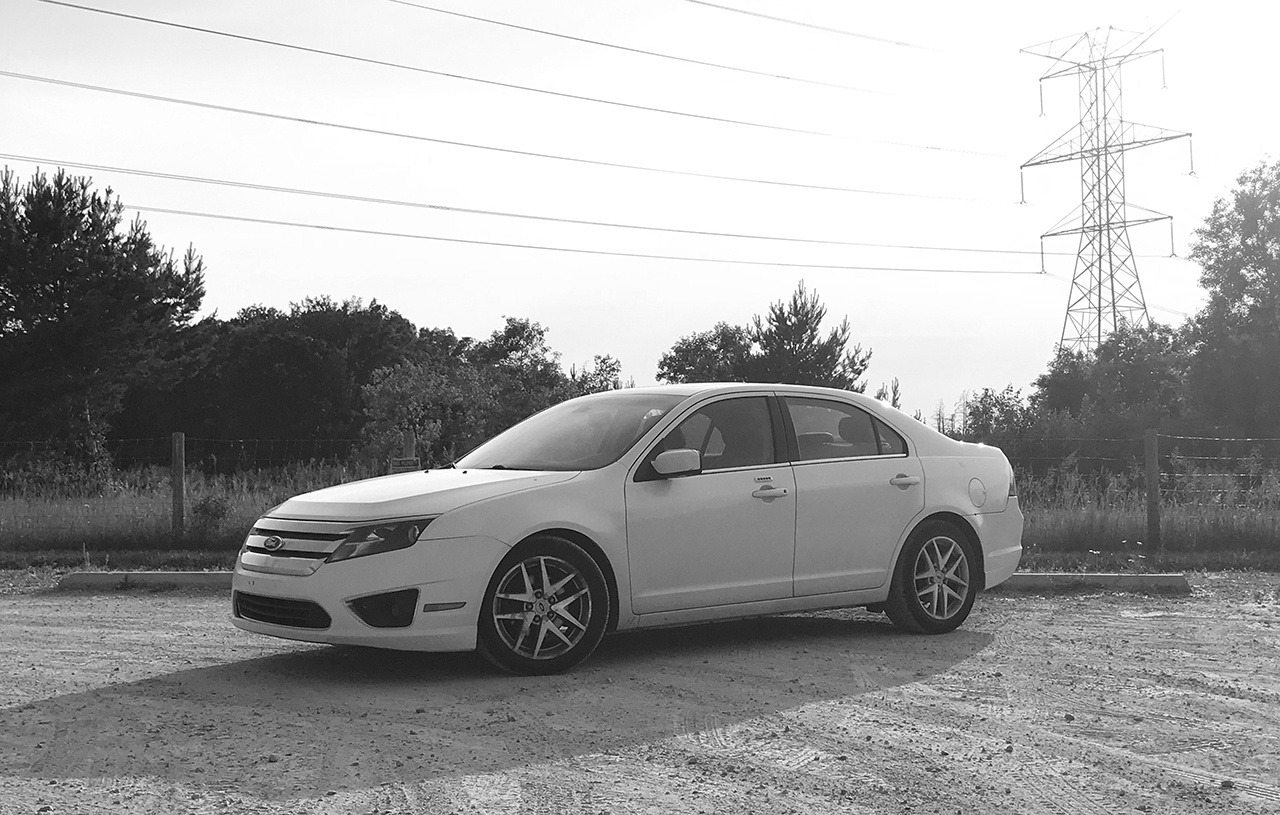
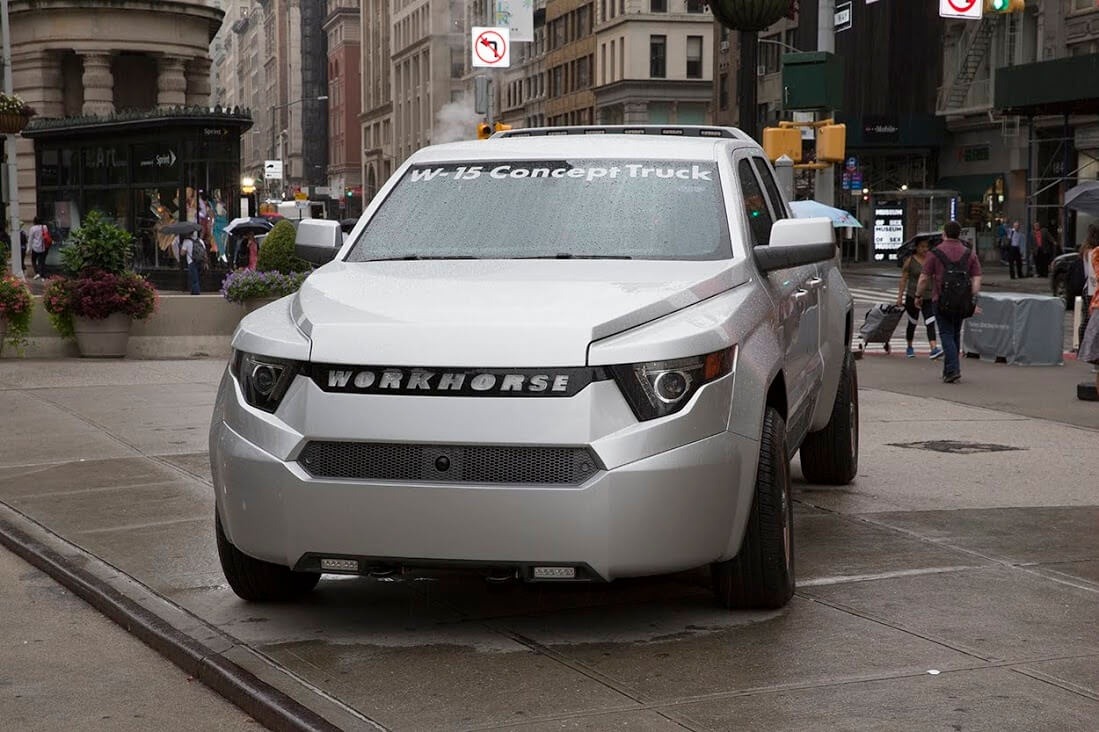
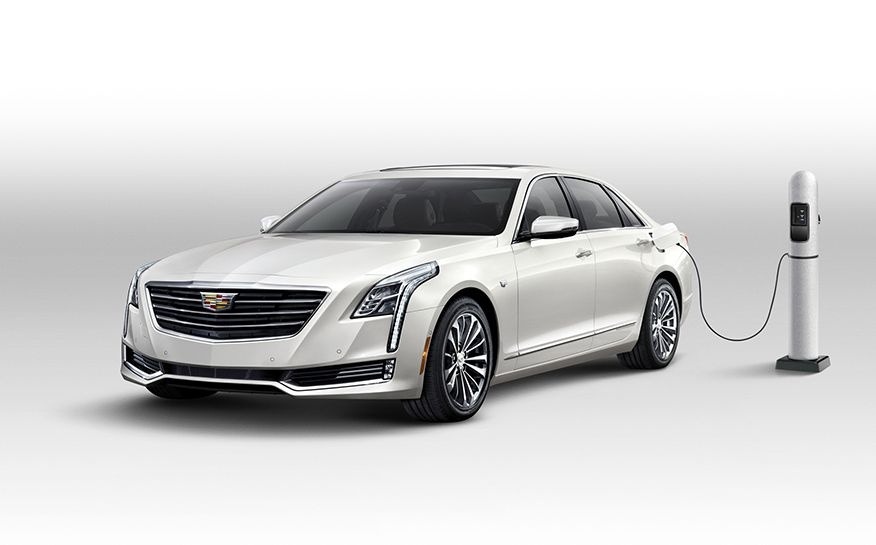
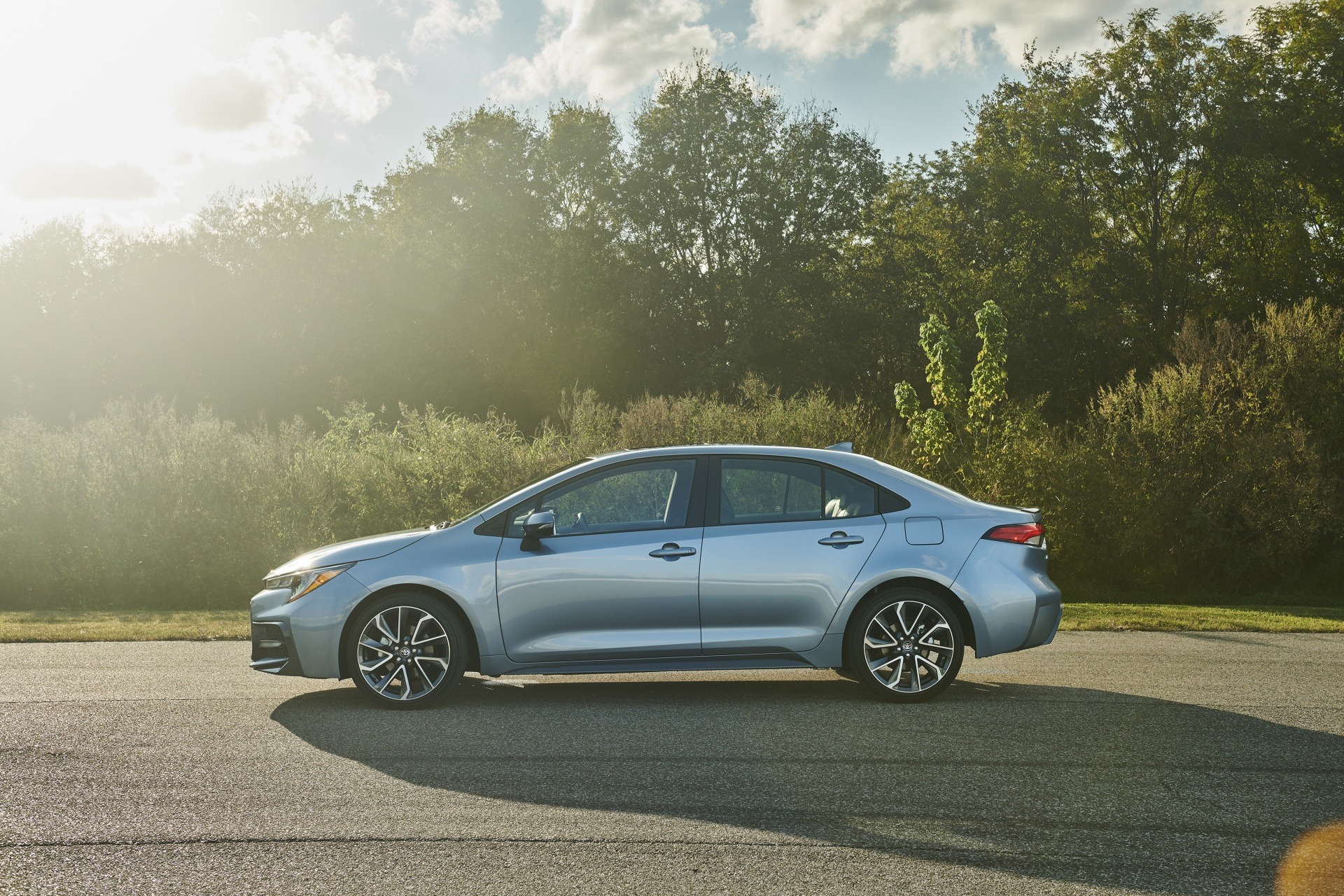
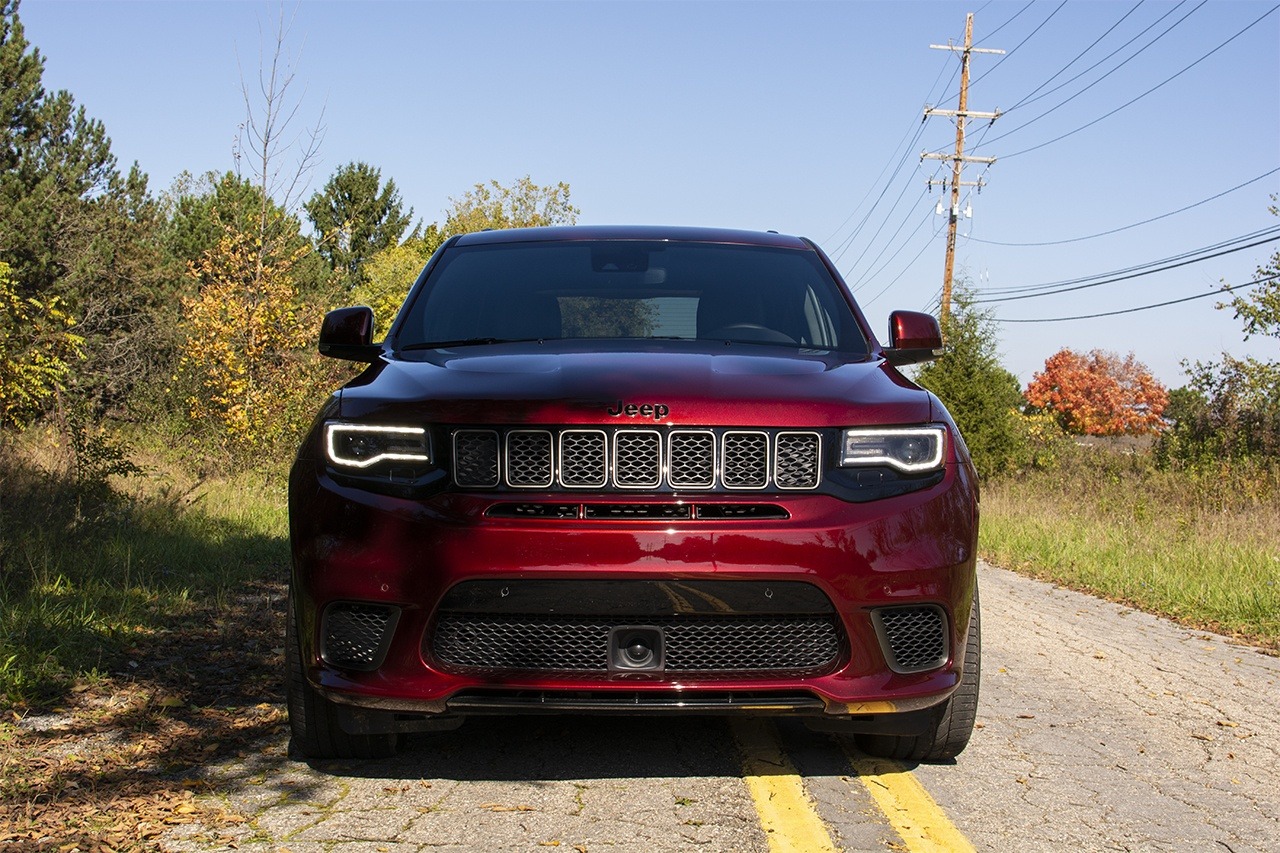
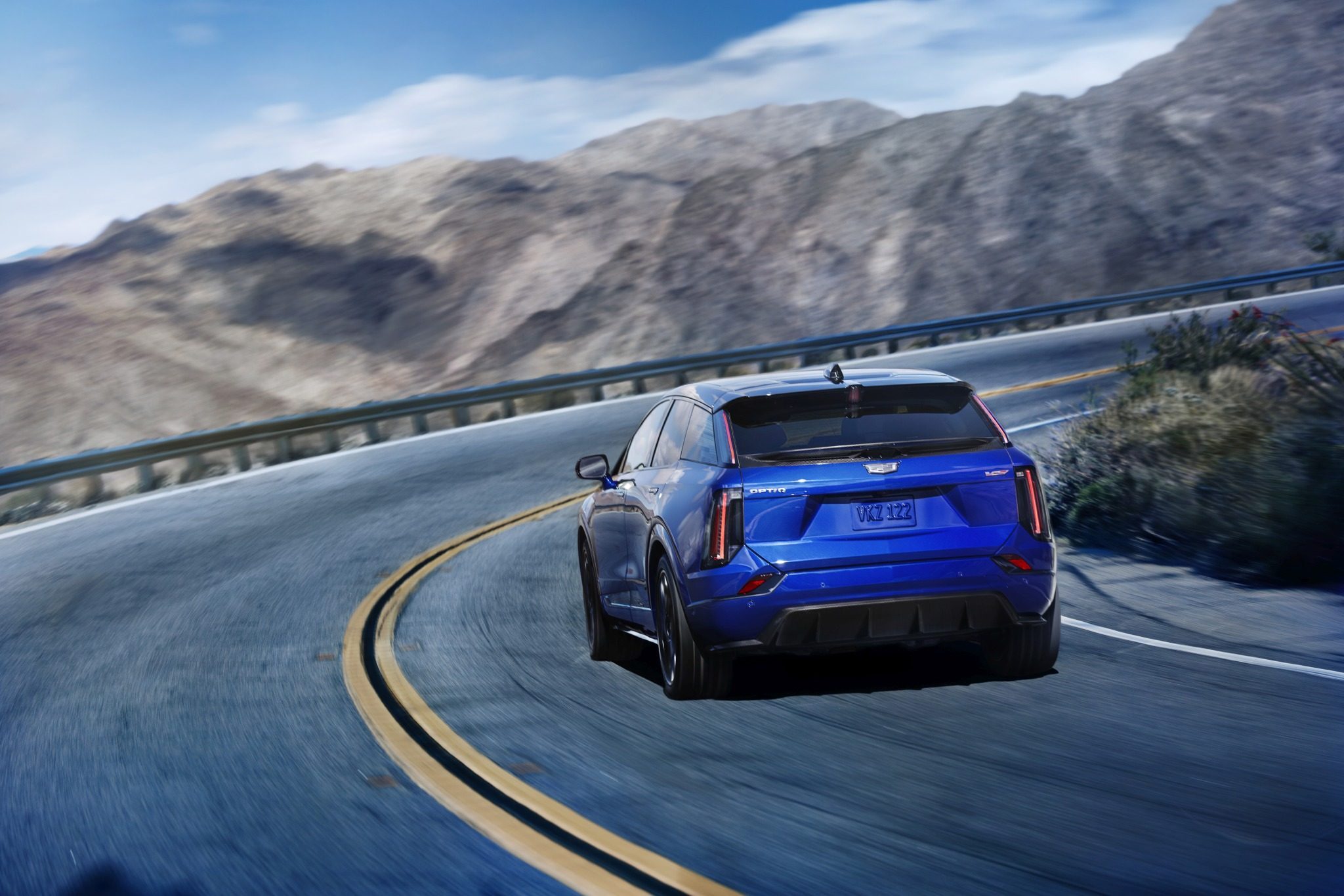
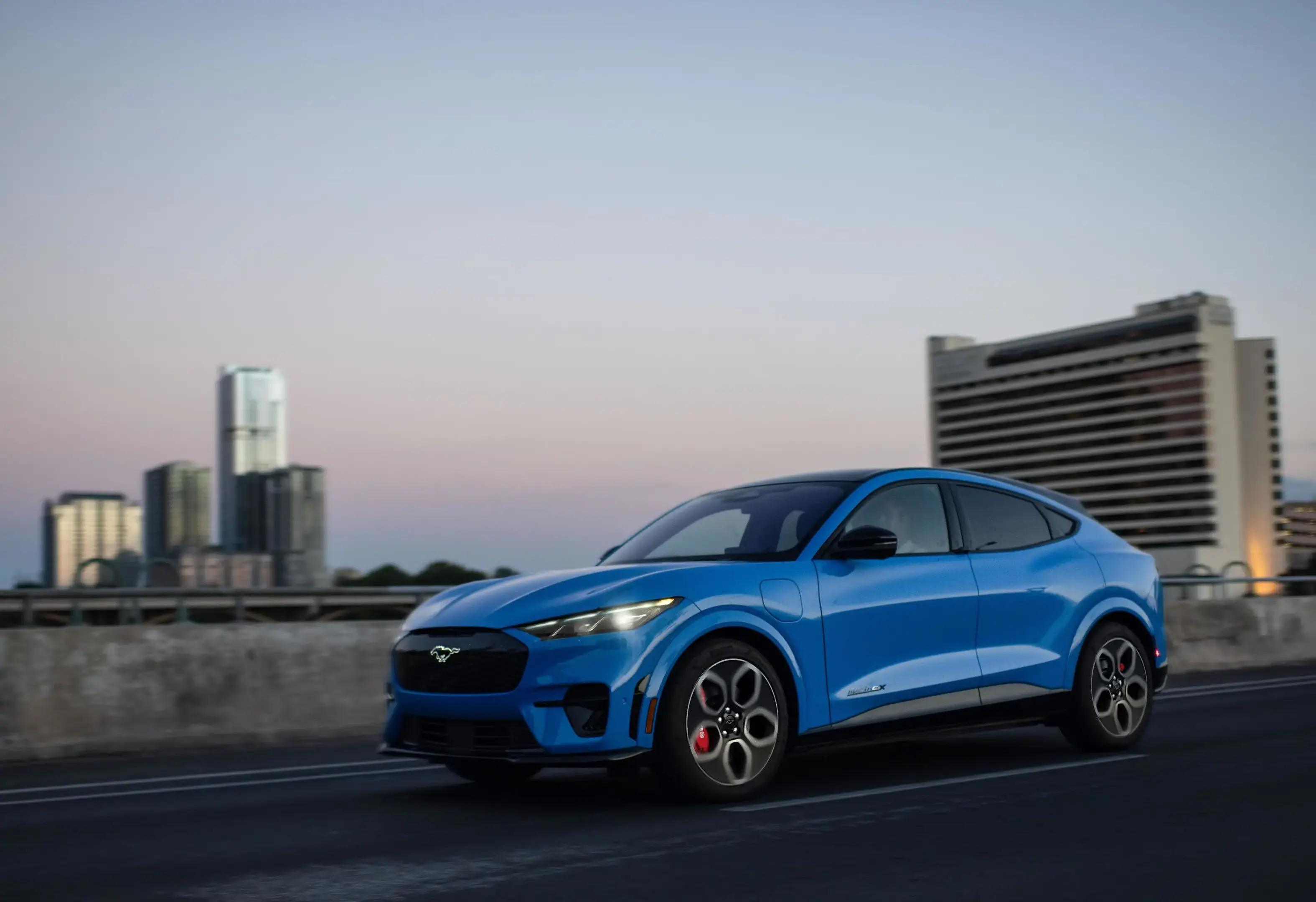
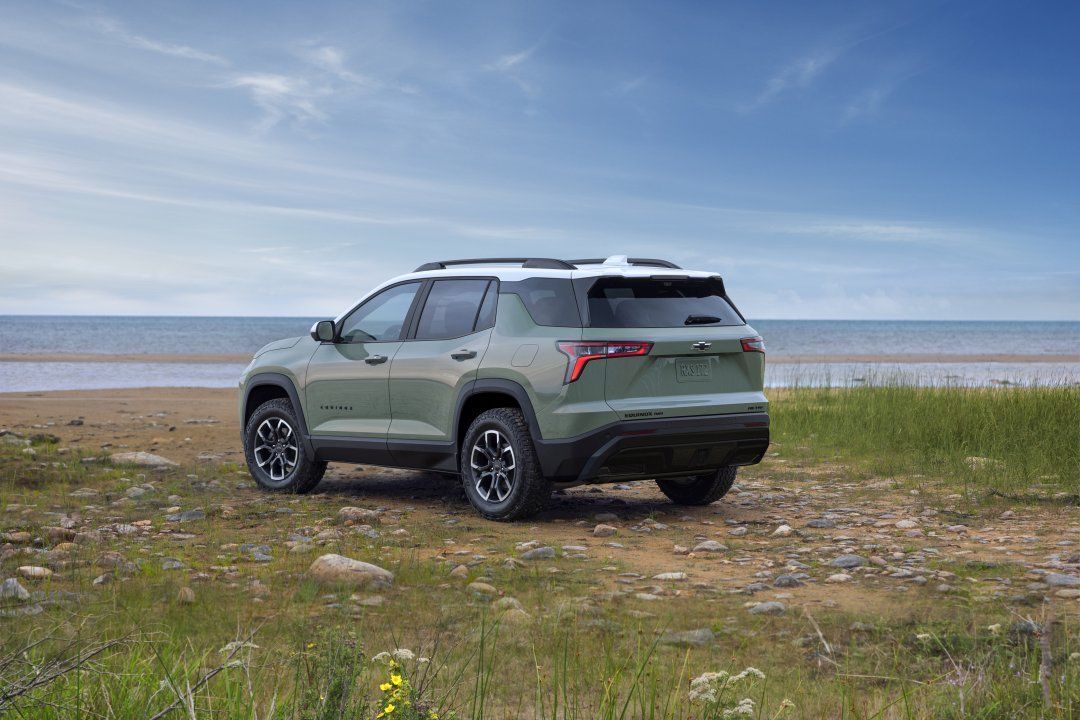
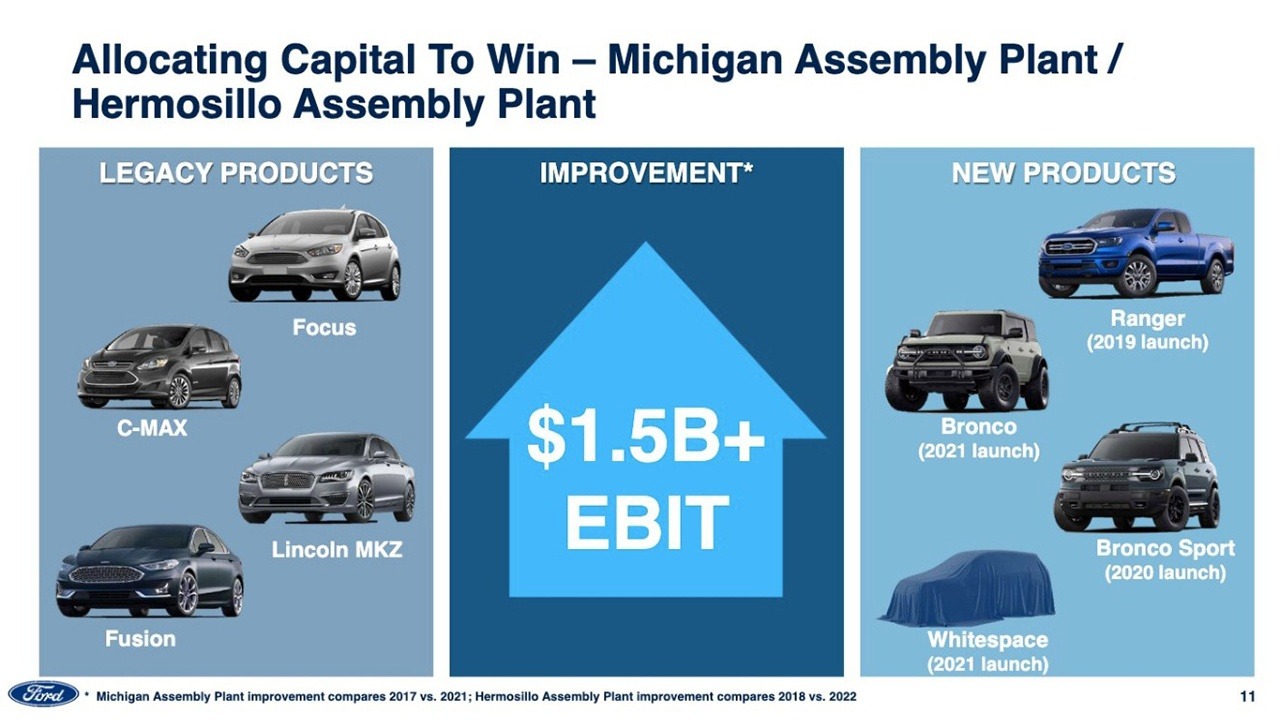
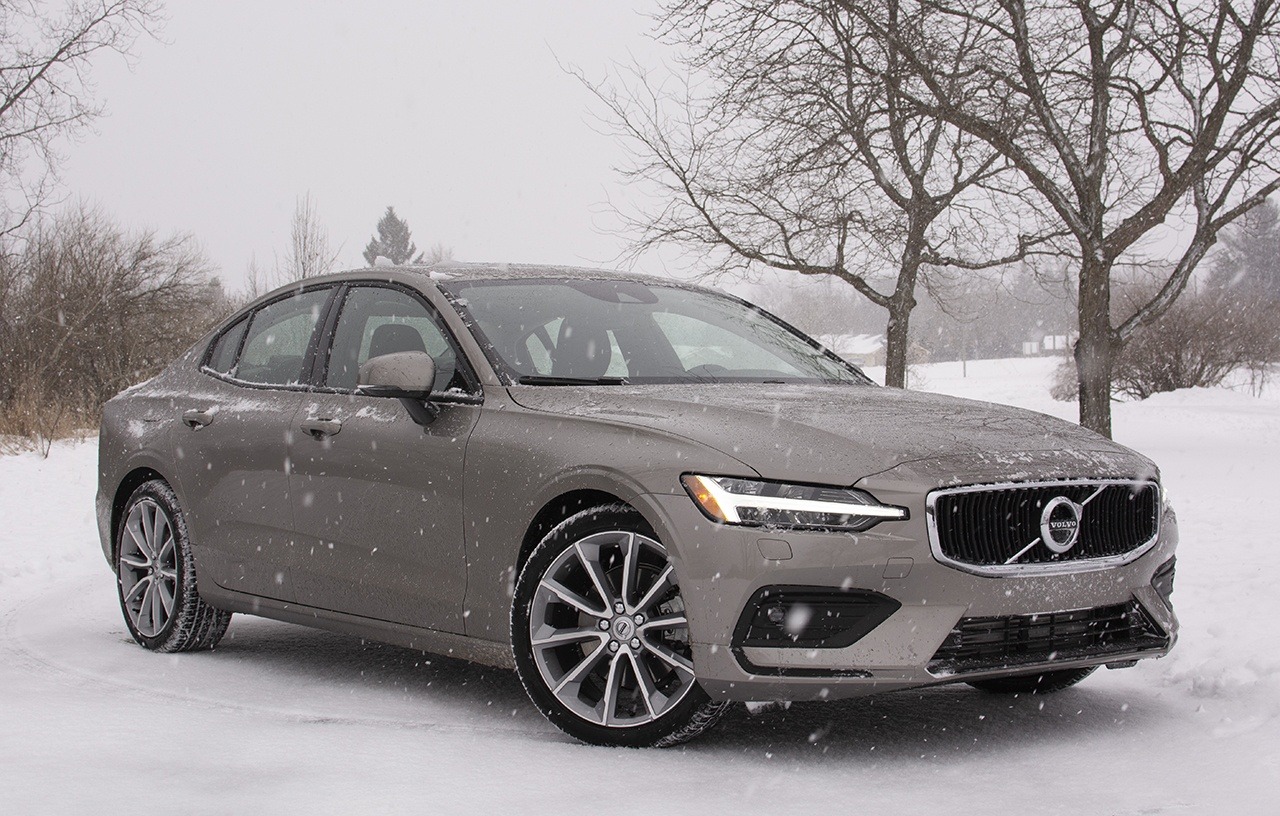
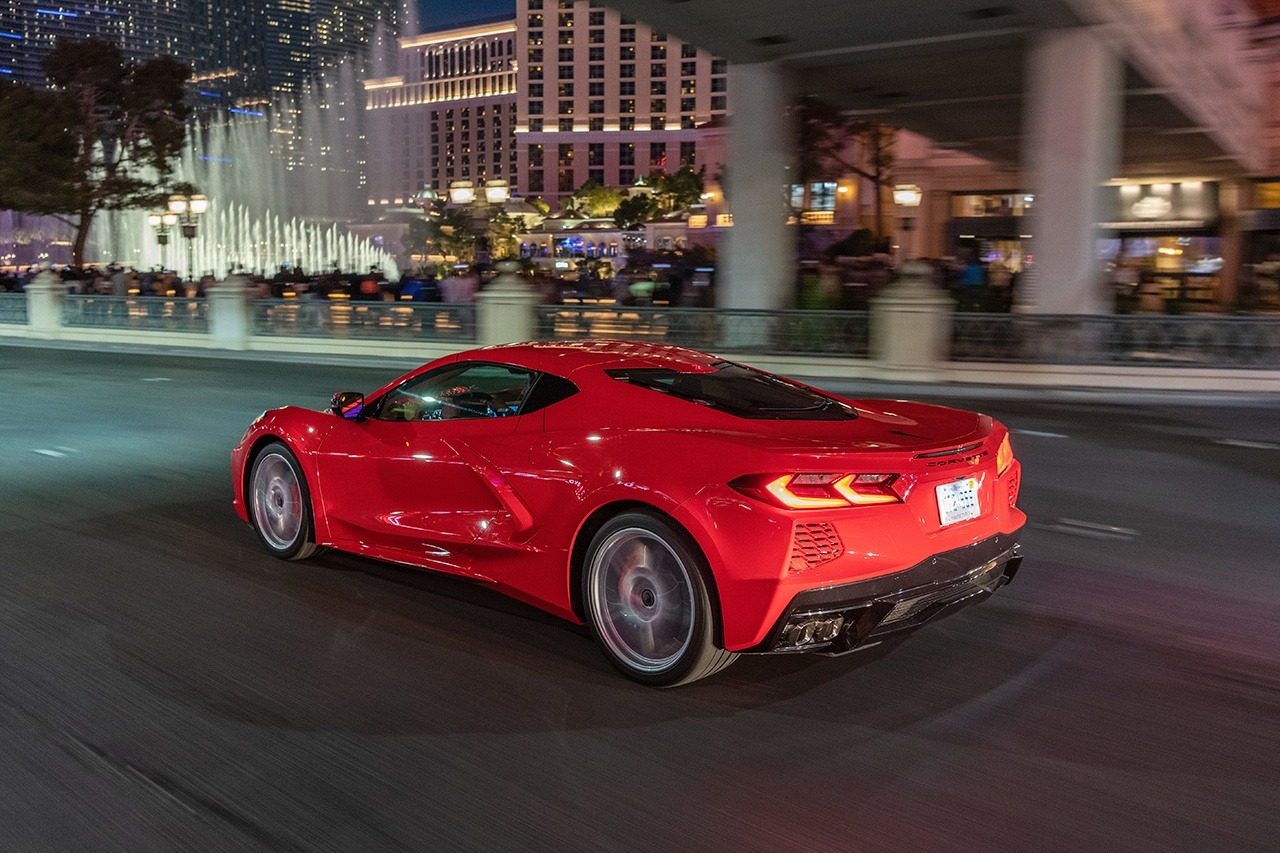
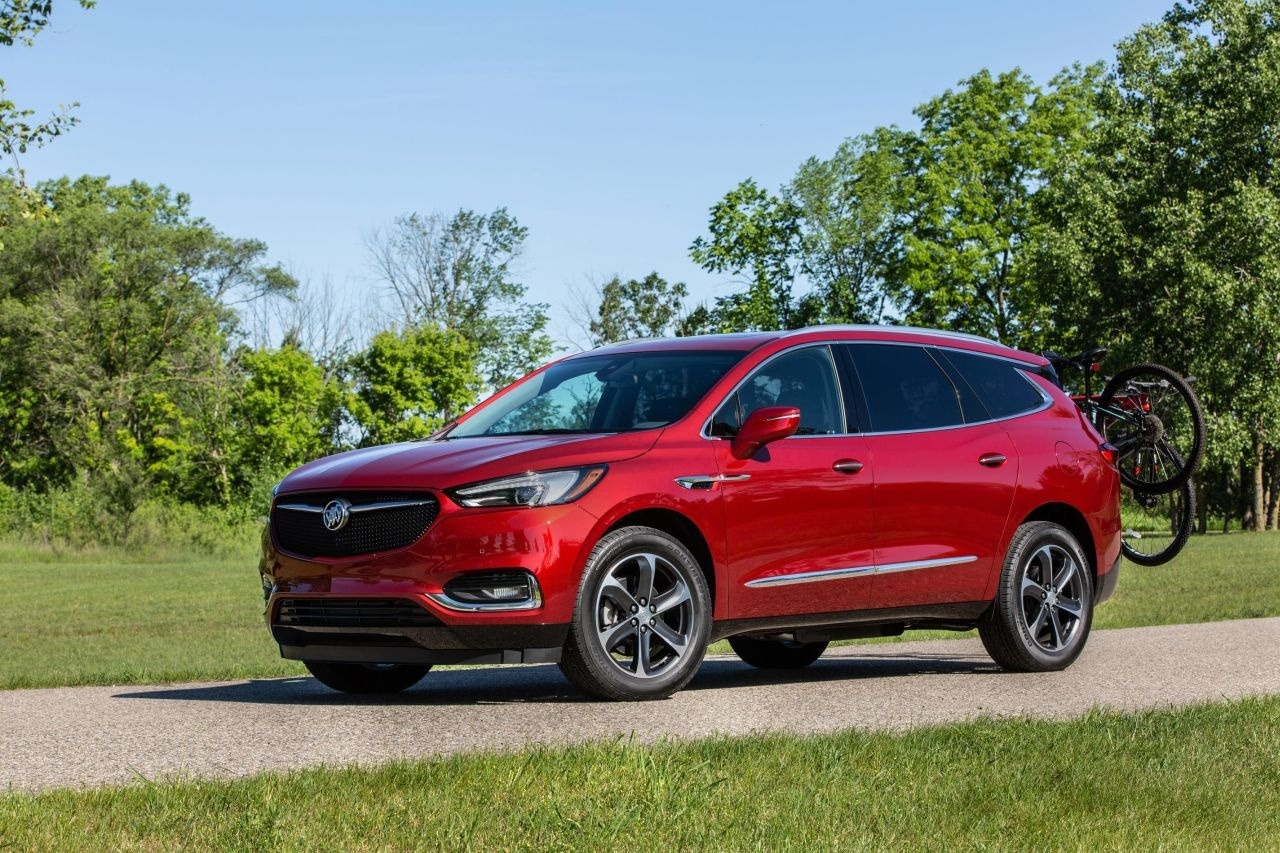
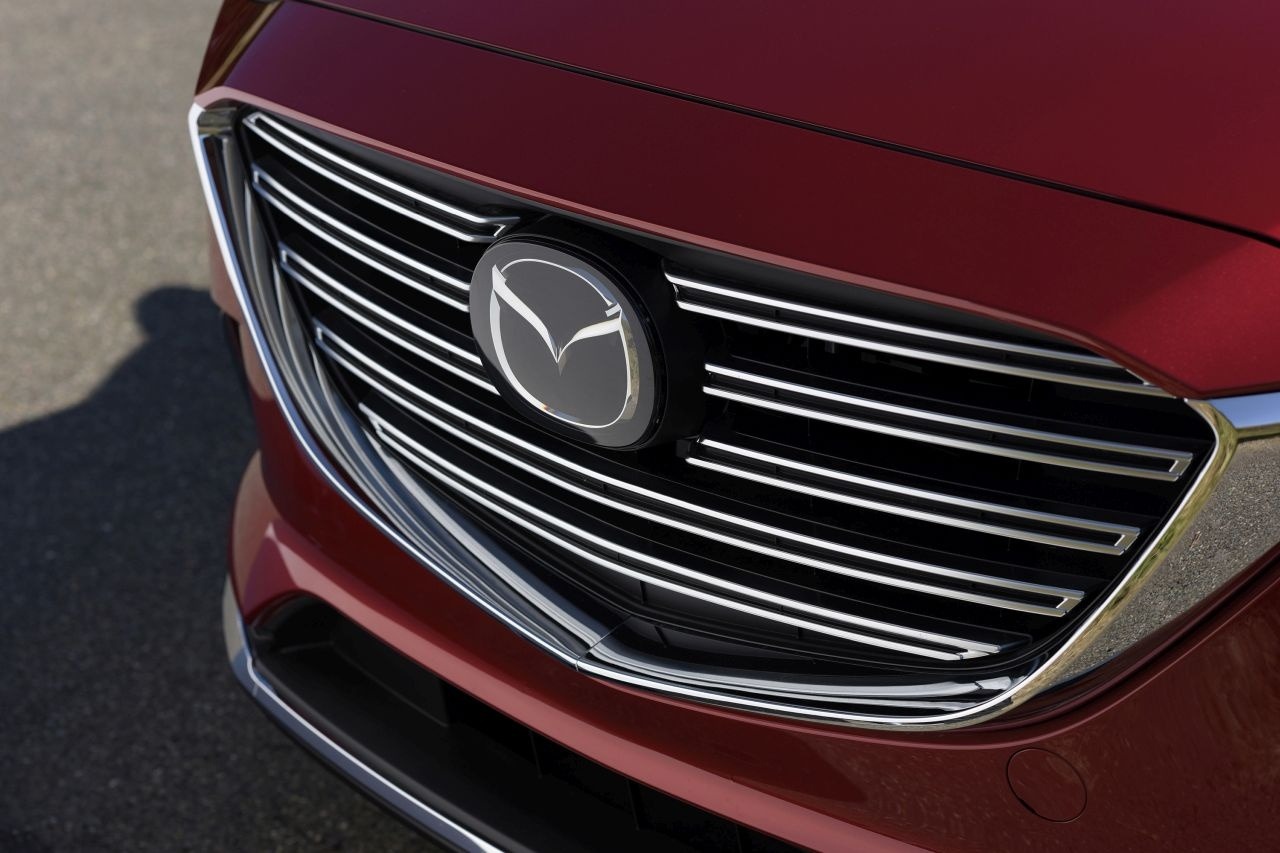
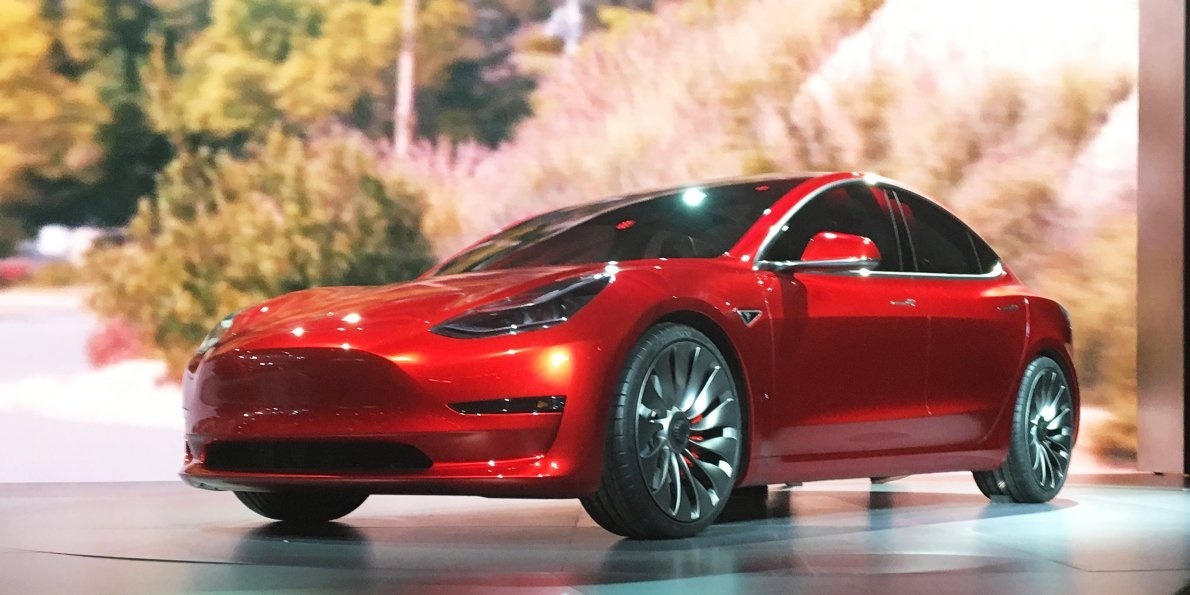
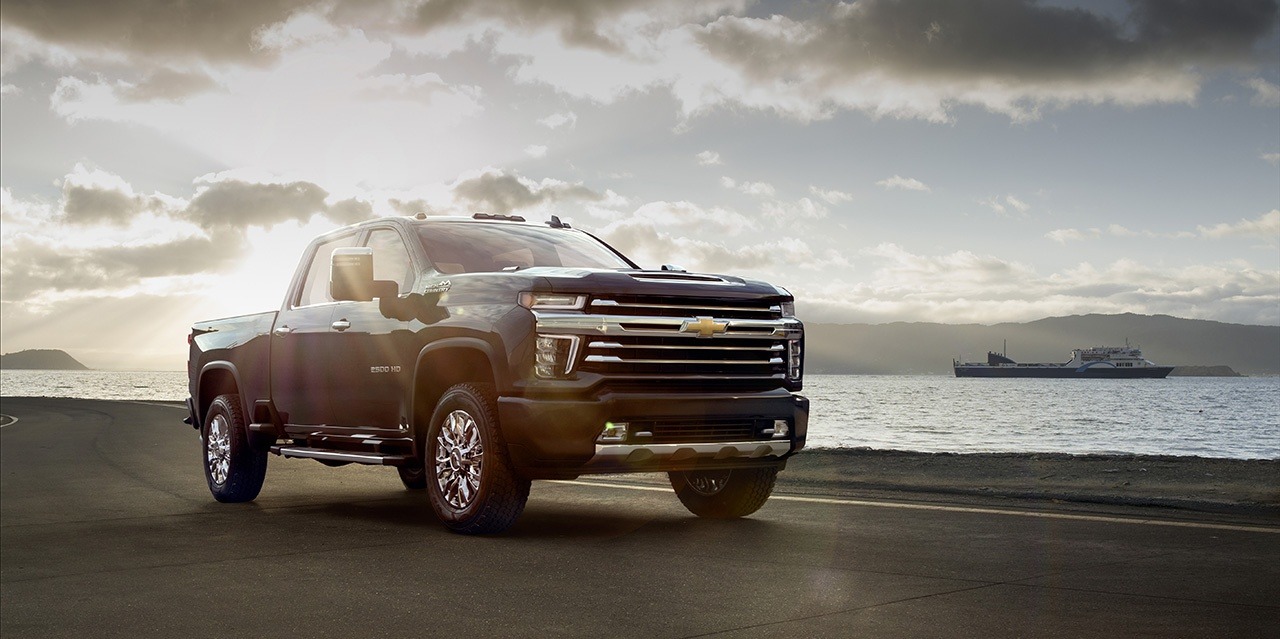
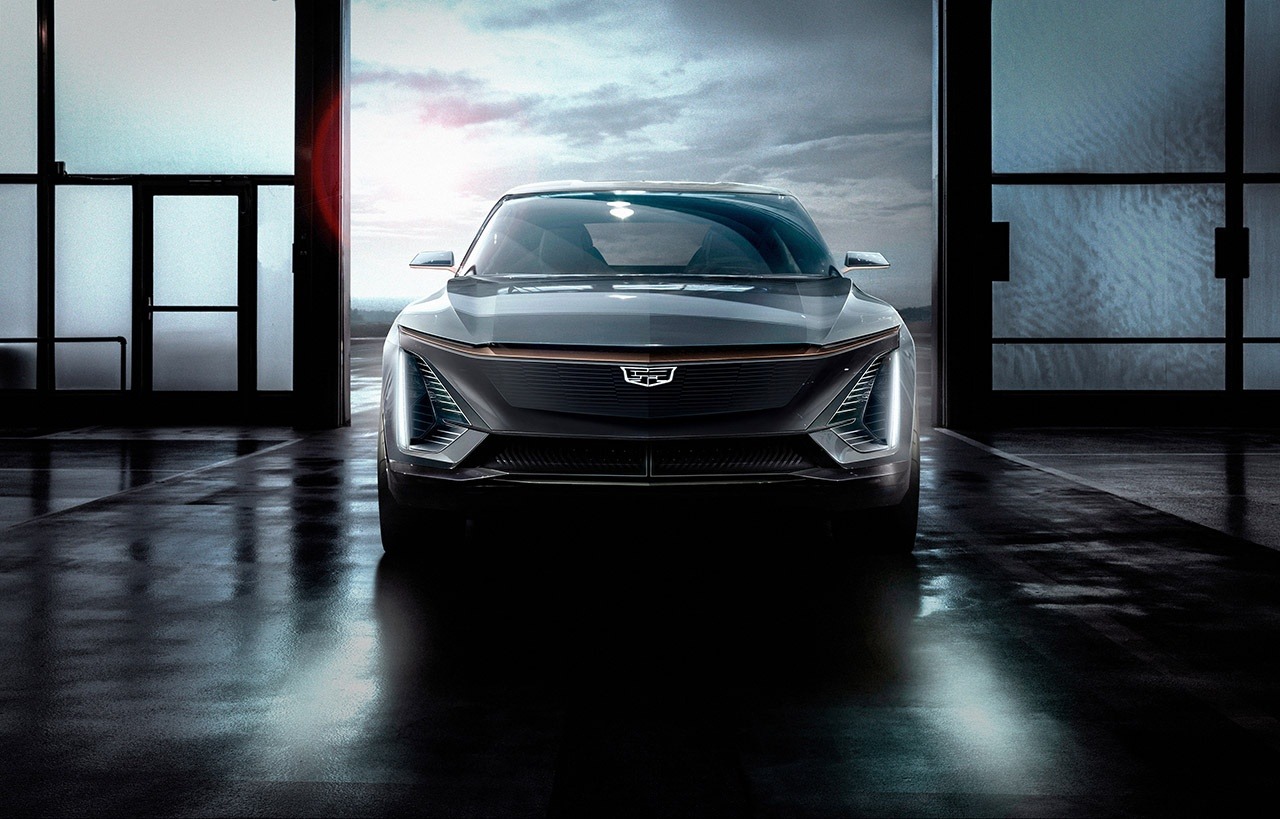
.jpg.7458570fe8ed0fe1531ecddc7695f811.jpg)
